

Your connection to top pediatric health care professionals; what's new in the world of children's health; and expert tips to help you raise happy, healthy kids.
March 21, 2024
Rowin’s Journey to Diagnosis and Hope at Rady Children’s Hospital-San Diego
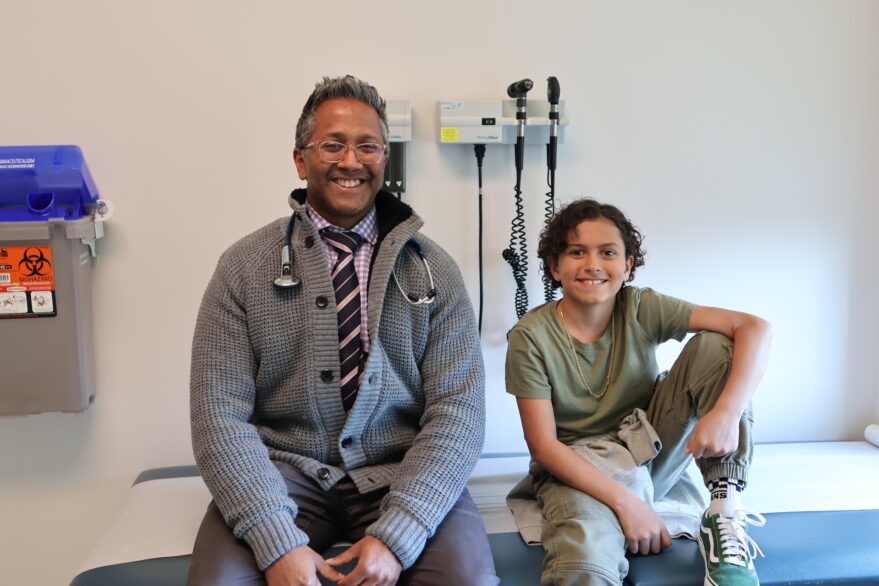
In July 2020, Rowin, a lively 6-year-old from Bozeman, Montana, began experiencing frequent and uncontrollable daytime naps. This disrupted his daily routine and concerned his family. Despite multiple visits to pediatricians and specialists, a definitive diagnosis remained mysterious.
Frustrated by the lack of progress, Rowin’s family sought a referral to a sleep specialist in Bozeman. While the sleep study offered some insights, the adult-sized equipment wasn’t great for use in children and Rowin’s cataplexy episodes, or sudden loss of muscle tone, suggested a condition beyond sleep apnea. Read More...
Adolescent and Young Adult Medicine, Narcolepsy, Neurology, Patient Stories, Sleep, Uncategorized
behavioral sleep disorder, childhood narcolepsy, hypersomnia, insomnia, narcolepsy, neurology, patient stories, patient story, pediatric narcolepsy, sleep, sleep apnea, sleep disorders, sleep study
March 19, 2024
Leadership Profile: President & CEO Patrick Frias, MD
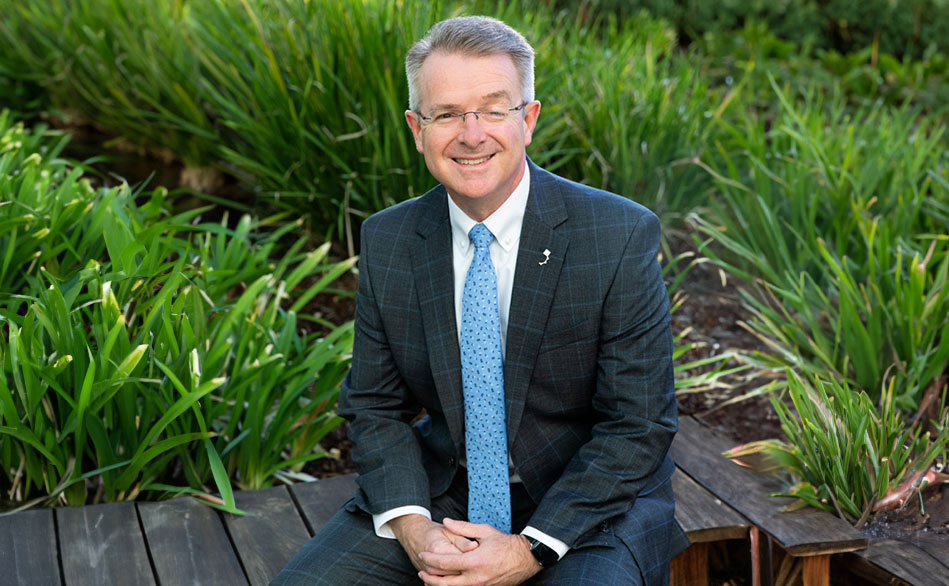
Leading with Heart: Rady Children’s President & CEO on Balancing Work, Family and Impact.
When you’re at the helm of one of the nation’s top children’s hospitals, preserving work-life balance can be tricky. A standard day for Rady Children’s Hospital’s president & CEO Patrick Frias, MD packs in multiple virtual and in-person meetings with everyone from board members to community leaders. Yet, with so many demands on his time, one commitment rises to the top: family.
“Family is very important to me, and I think as a children’s hospital leader it should be important to all of us,” Patrick says. “There are times I may delay a meeting or do something to make sure I’m there for one of the kids’ events. It doesn’t mean the work won’t get done, it’ll just be at a different time. And I think that’s important to model.” Read More...
Leadership Profiles
January 18, 2024
The CURE Community
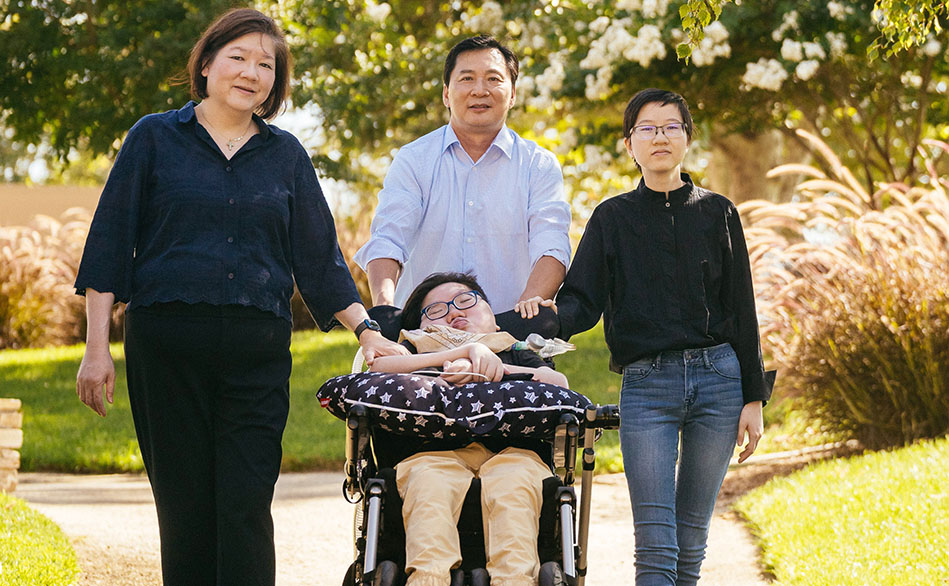
Mother of a child with a rare disease unites other families on the same path.
The Yiu family knows all too well the struggles that come with having a child with an undiagnosed disease. When Caroline Cheung-Yiu and Bandy Yiu’s son, Alex, began to progressively lose motor function at age 2 1/2, it was the start of a 10-year medical mystery. Alex continued to lose his ability to walk, stand, speak, eat and breathe on his own. Alex’s parents and his older sister, Elaine, were treating his issues symptom by symptom not knowing if one was related to the other. They went from doctor to doctor and took test after test, but were unable to find an explanation for the sweet, happy-go-lucky boy’s decline.
“I’ve always called him my moving target because we would tackle one thing and then something else would come along,” says Caroline. Read More...
Genetics, Patient Stories, Research and Innovation
genetics, genomics, neurology
January 10, 2024
Music To His Ears – Hayden’s Story
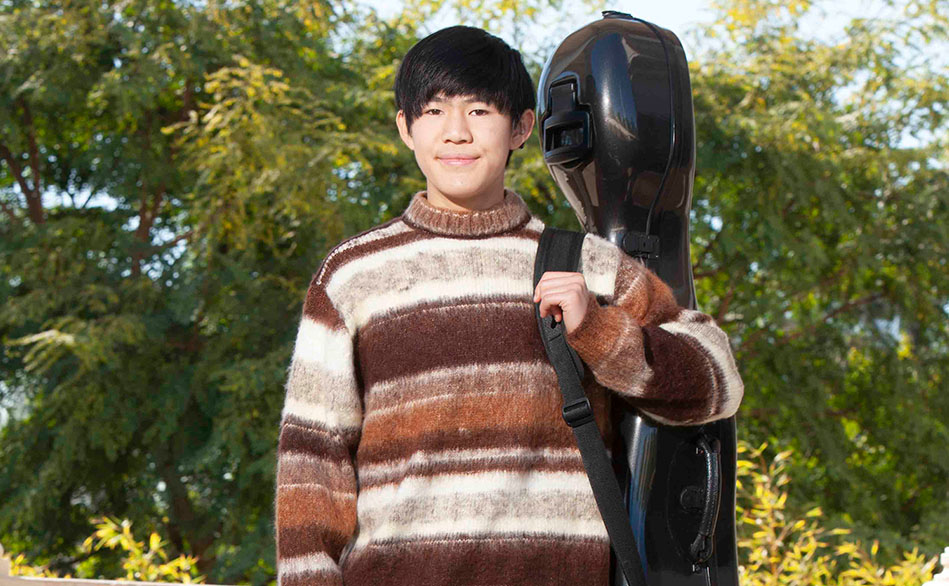
A Star is Born With the Help of Cochlear Implants
Before Hayden Chen was born, his father, Chi- Yuan Chen, the principal viola of the San Diego Symphony, made sure his son was surrounded by music. Chi-Yuan dreamed of passing down to his firstborn the family’s passion for music, so it came as quite a shock for the Chen family that Hayden was born with hearing loss.
“Hayden passed the newborn hearing test, and we never expected anything different to happen—he seemed like a happy, healthy, normal baby,” Chi-Yuan says. “But then my wife, Hsin-Yee, started to notice something abnormal when he was around 4 months old. He wouldn’t turn his head or react in any way to a loud noise. Sometimes his toys would drop on the floor and he would have no reaction.” The family made an appointment with Hayden’s pediatrician. “At the appointment, the doctor threw a heavy phone book on the floor. Hayden didn’t even blink,” his dad continues. “That’s when we knew something was really wrong.” At 5 months old, Hayden visited an audiologist who delivered the devastating news that he was deaf. Read More...
Audiology, Patient Stories
cochlear implants, early intervention, genetics, speech and language development
November 14, 2023
Jordan the Heart Warrior
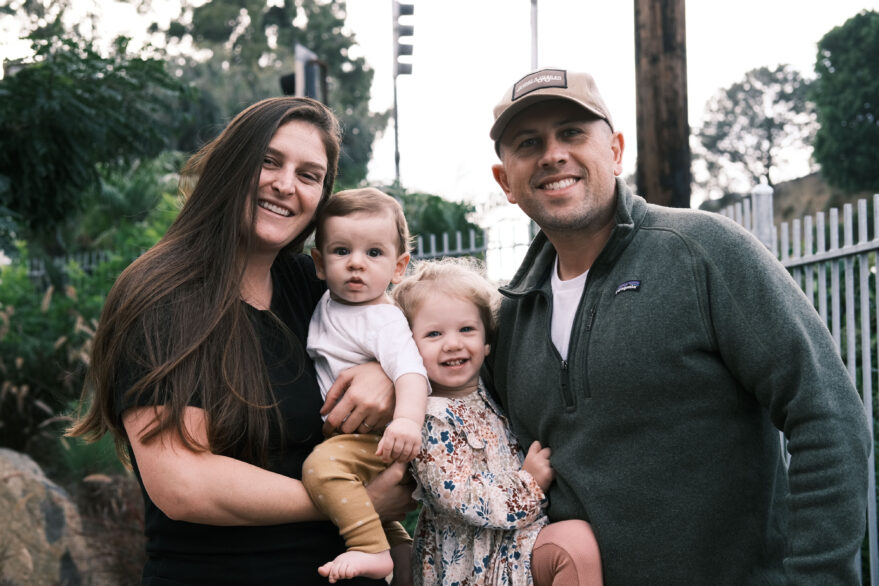
Jordan was welcomed into the world following a healthy full-term pregnancy and birth. He was deemed healthy during his newborn exam and at his early pediatric visits. Around 7 weeks of age, he began breathing rapidly, sweating profusely when eating, and seemed to be struggling with breathing. A pediatric visit revealed he was not gaining weight despite frequent nursing.
“My instincts told me something was wrong and that he needed to be evaluated in the emergency department at Rady Children’s,” recounts mom, Lauren. “We didn’t know just how sick he was or that we wouldn’t be leaving the hospital for the next month.” Read More...
Cardiology, Infant Health, NICU, Patient Stories
ALCAPA, cardiac, cardiology, cardiopulmonary, cardiovascular health, cardiovascular surgery, CTICU, ECMO, heart, NICU, patient stories, patient story, surgery
October 27, 2023
Teen Diabetes Champion: Natalia Thrives with ‘Teens Rock’ Support Group
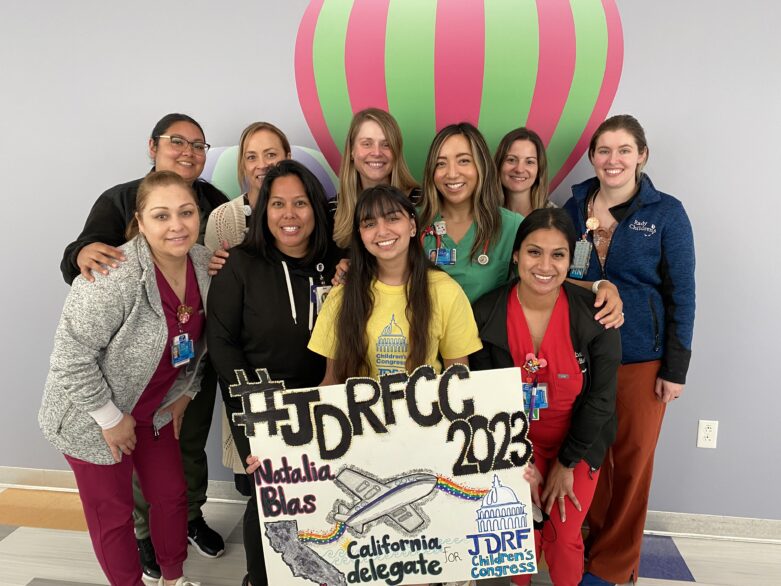
Meet Natalia, a member of our Teens Rock support group, where teens with Type 1 Diabetes find camaraderie and support.
For five years, Natalia has navigated the challenges of type 1 diabetes. Read More...
Adolescent and Young Adult Medicine, Endocrinology/Diabetes, Giving Back
diabetes, endocrine, endocrinology, Endocrinology/Diabetes, insulin, support group, teen, teens rock, type 1 diabetes
October 24, 2023
Amelia’s Triumph Over Chronic Pain: A Journey to Recovery
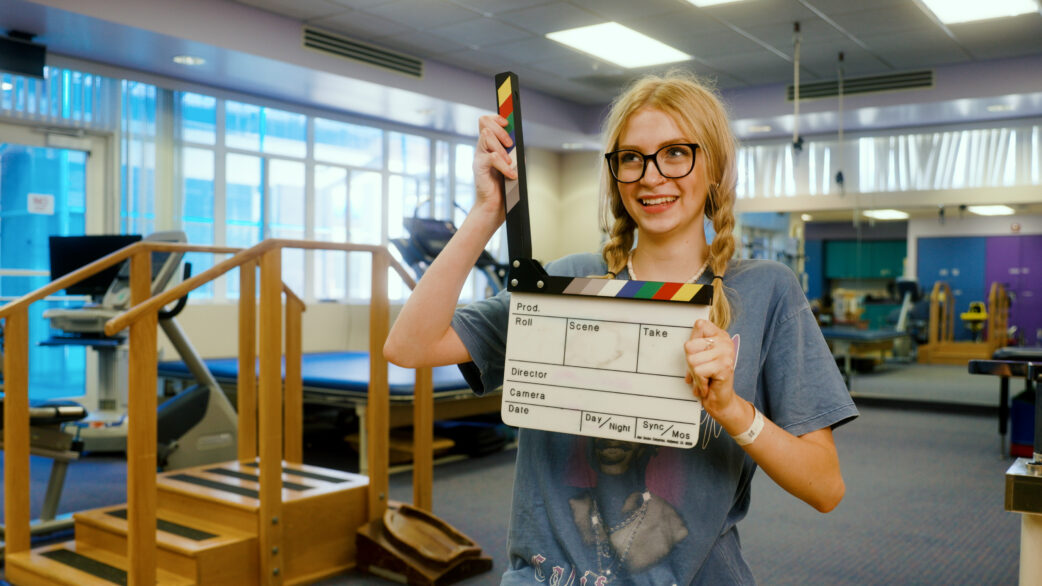
Missing school. Frequent visits to the emergency room. Spending days in bed. Feeling depressed. This was what Amelia’s life looked like after a sports injury left her in constant pain. Amelia, once a vibrant and active teenager, watched as her life, health, and schoolwork spiraled downwards. She eventually was diagnosed with amplified musculoskeletal pain syndrome (AMPS), a debilitating condition where kids feel moderate to severe pain in muscles and joints despite an injury. As Amelia and her family discovered, chronic pain is something that others can’t see, but it’s very real and can deeply affect those who experience it.
“Our daughter went from being active in sports and having a great time to spending a lot of time in bed,” says her mom, Katie. “She used to be really smart and do well in school, even in advanced classes. But then, things changed, and she struggled with her schoolwork.” Read More...
Adolescent and Young Adult Medicine, Canine Therapy, Child Life, Chronic Pain and Pain Management, Patient Stories
anxiety, behavioral health, certified child life specialist, child life, chronic pain, depression, inpatient chronic pain management, inpatient pain, inpatient pain management, mental health, opioid- and pain medication-free, pain, patient stories, patient story, pediatric mental health
October 19, 2023
Sports Injury to Surgical Triumph – One Athlete’s Inspiring Comeback Story
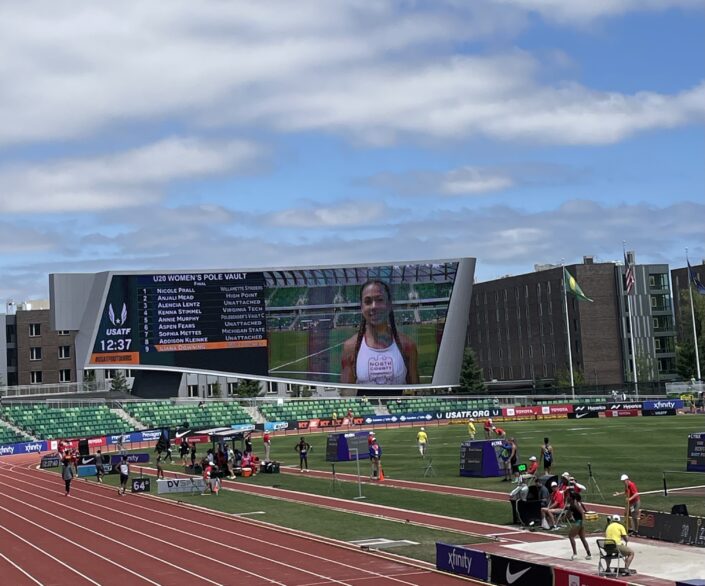
Iliana Downing wouldn’t let injury deter her from reaching new heights and reclaiming her athletic dreams. The 17-year-old’s journey began five years ago at a soccer match, when an explosive kick caused a hip fracture, common among young athletes whose growth plates have not fully developed. Though Iliana was advised to take time off for recovery, her desire to play won out. She was already participating in multiple sports when a new endeavor captured her attention: pole vaulting—fitting for a girl nicknamed “Tigger” for her bouncy demeanor.
“I thought pole vaulting looked really different and unique. When I tried it for the first time, I knew right away that I wanted to do it,” Iliana says. “My mom always sees me as someone who’s fearless, and I never felt scared of pole vaulting. It was really exciting and gave me a big adrenaline rush.” Read More...
Hip DIsorders, Orthopedics, Patient Stories, Sports Medicine
hip, hip disorders, orthopedics, patient stories, patient story, pole vaulting, sport
September 27, 2023
Going Back to School with Food Allergies: What Parents Need to Know

The school year is in full swing, but we know that sending a child with food allergies back to school can be a bit stressful. We’re here to help you understand what you need to do to keep your child safe and happy at school.
When Should Your Child Carry Epinephrine?
Typically, when kids reach junior high, or 7th to 9th grade. But it depends on your child. Some important things to think about are whether your child feels comfortable carrying it, if you think they’re ready, and if they need it because they go to different places a lot, like school, aftercare, sports, or their grandparents’ house. Read More...
Adolescent and Young Adult Medicine, Allergy/Immunology, Nutrition, Parenting tips
allergy, allergy and immunology, epi pen, epinephrine, immunology, nutrition
September 25, 2023
5 Reasons to Join Team Rady – Now Hiring Nurses
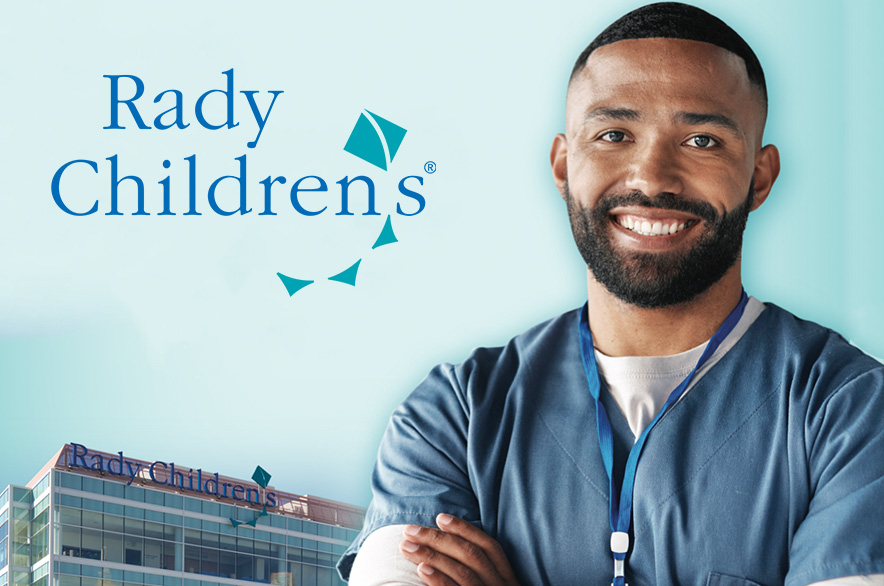
Rady Children’s Hospital is Hiring Registered Nurses
Nursing at Rady Children’s Hospital is more than just a job. When you join Team Rady, you become part of a highly skilled and compassionate team; taking a leading role in children’s health. We’re the region’s only medical center dedicated exclusively to pediatric healthcare. Whether you’re a new graduate or an experienced nurse, find a rewarding career as an LVN, RN, or Advanced Practice Nurse at Rady Children’s.
5 Reasons to Join Team Rady:
1. Our location is hard to beat. Read More...
Carreers, Nursing
September 19, 2023
A Journey Through Chronic Pain: Stella’s Story
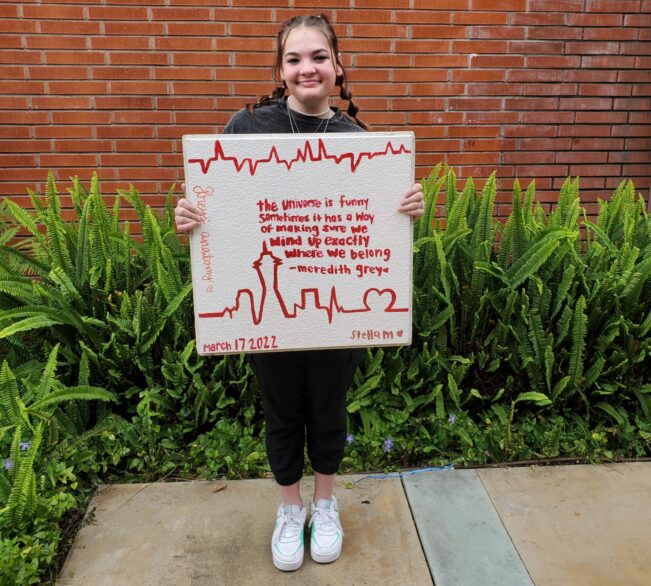
Stella was 12 years old when she was diagnosed with amplified musculoskeletal pain syndrome (AMPS). AMPS is a chronic pain condition that causes the brain to send pain signals to the body even when there is no injury. Stella’s pain was so severe that she could barely move, and she had to be hospitalized and was referred to Children’s Specialized Hospital Chronic Pain Management Program at Rady Children’s Hospital-San Diego for treatment.
During her time at Rady Children’s, she received a variety of treatments, including physical therapy, occupational therapy, and psychotherapy. She also learned how to manage her pain through relaxation techniques and stress management. After a month of treatment, Stella’s pain was reduced by half. She was able to go home and resume her normal activities. Stella is now an advocate for other children with AMPS. She speaks to groups about her experiences and shares her advice on how to manage the condition. Read More...
Adolescent and Young Adult Medicine, Chronic Pain and Pain Management, Patient Stories, Rheumatology, Uncategorized
chronic pain
September 13, 2023
Courageous Dreams: Noah’s Journey Through Leukemia
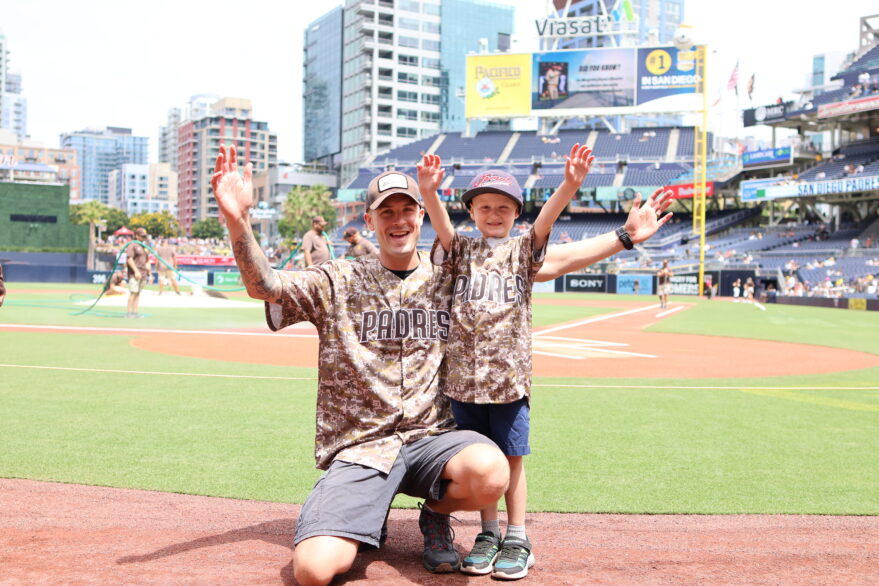
Noah is a six-year-old boy with boundless energy and a heart full of dreams.
“Noah loves baseball, soccer and all things related to construction workers, firefighters and police officers,” shares his mom, Charlotte. “He wants to be all three professions when he grows up, so he’s going to be busy!” Read More...
Adolescent and Young Adult Medicine, Cancer, Hematology/Oncology, Patient Stories
cancer, hematology/oncology, patient stories, patient story, Peckham Center for Cancer and Blood Disorders
September 4, 2023
When Medicine is a Mystery
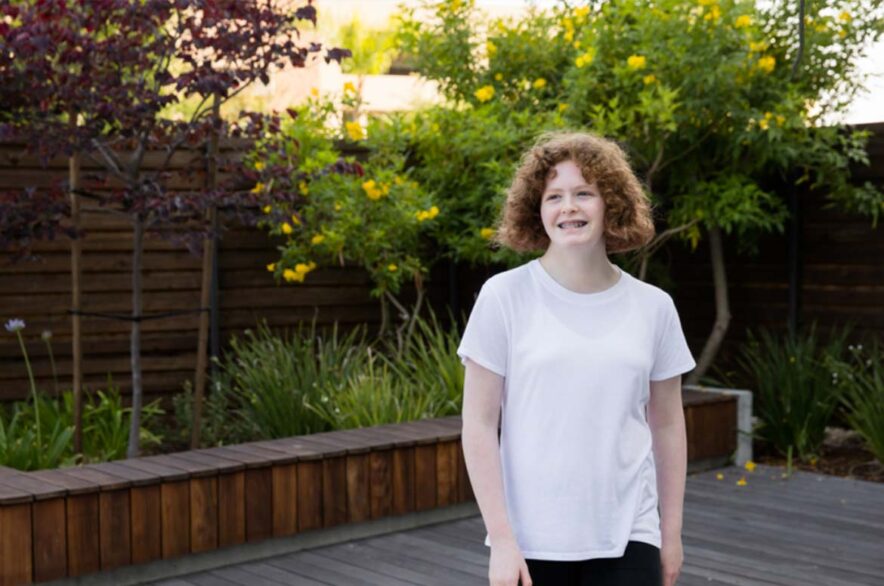
Mina Longo is a soft-spoken 13-year-old who loves to read horror novels, listen to heavy metal music and is learning to play the guitar. She sounds like many girls in middle school, worrying about things like making time for friends and if she might finally get a new Google Pixel. You would never know it wasn’t always this way
Mina’s complicated health journey began before birth, when physicians noticed her left kidney wasn’t developing as expected. Then, to the surprise of her family and her doctors, Mina was born nearly 10 weeks premature. Weighing a mere 2 pounds, 12 ounces, she was so small that she fit in her mother’s hand. Unable to eat or breathe on her own, Mina was immediately transferred to Rady Children’s. At two days old, surgeons repaired a hole between her trachea and her esophagus, and then connected her esophagus to her stomach. Read More...
Aerodigestive, airway disorders, Otolaryngology, Patient Stories
aerodigestive, ENT, esophageal disorders, Otolaryngology
August 22, 2023
Back to School: Tips for a Tasty Lunchbox
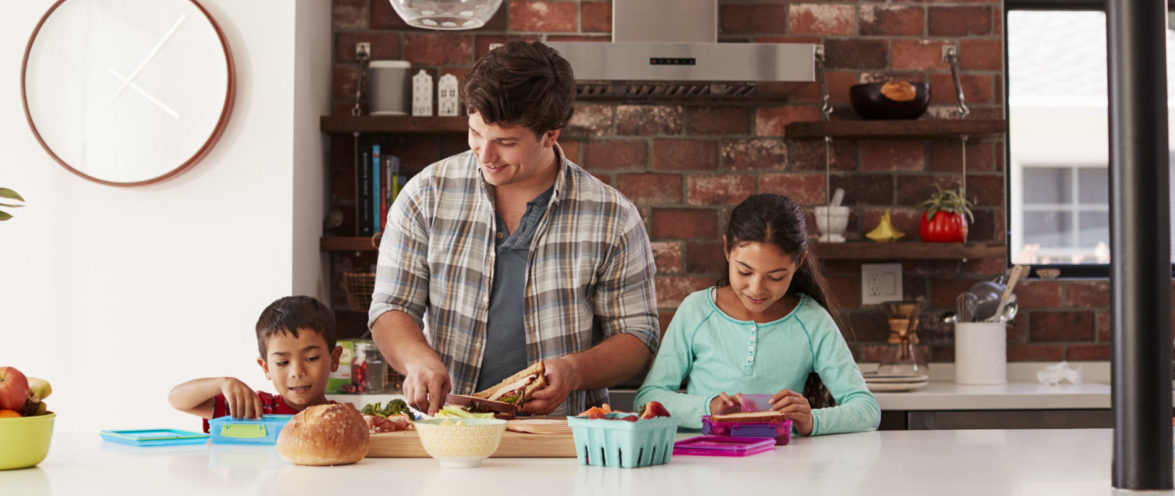
The start of the school year brings with it the challenge of crafting lunches that are not only nutritious but also appealing to your child’s taste buds. We’ve all heard the classic complaints: “School lunches are boring,” “I don’t have enough time to eat,” and “I just don’t like what’s in the cafeteria.” But fear not! We’ve got you covered with creative ideas to transform your child’s lunchtime experience into something they’ll eagerly anticipate.
1. Involve Your Child in Choosing the Menu: Empower your child to be part of the decision-making process by discussing lunch options together. This engagement not only ensures they’re excited about their meal but also helps them develop a sense of responsibility toward their dietary choices. Read More...
Food Services, Nutrition, Parenting tips
nutrition
August 16, 2023
Nurturing Nutritional Choices for Your School-Age Kids: A Guide for Parents

It’s fall and that means back to school for kiddos in preschool to high school and beyond! What they eat during this time can shape their lifelong eating habits and influence their overall well-being. Through our series of blog posts on nutrition and diet, let’s explore how you can support their nutritional journey and provide the best guidance possible.
Between the ages of 6 and 12, your kids are not only growing physically but also developing their personalities. These changes can impact their appetite and preferences. Also, family, friends, culture, media, and school, can play a role in shaping their views on food. Your support as a parent matters a lot too, so here’s a handy list of tips to help healthy eating habits blossom: Read More...
Adolescent and Young Adult Medicine, Child Development, Nutrition, Uncategorized
childhood nutrition, nutrition
August 16, 2023
Ethan’s Journey: From Bike Injury to Off-Road Racing Success

Ethan is a boy who lives for adventure and off-road racing. Ethan and his family were no strangers to the thrill of exploring the desert in their quads, Jeeps, and UTVs. In 2015, for Christmas, they gifted Ethan a Polaris 170 Rzr, which he and his younger brother cruised around the desert in, creating countless memories.
In the spring of 2016, at the age of 9, Ethan had his first taste of competitive racing. He participated in the UTV World Championship in Laughlin, Nevada, and from that moment on, he was hooked. The excitement of the race, the sense of accomplishment, and the bond among fellow racers fueled Ethan’s passion for the sport. Ethan dedicated himself to off-road racing. He competed in various Youth UTV racing series, including the Dirt Series, WORCS Series, Lucas Oil Series, and the UTV World Championships. With each race, Ethan grew more skilled, and his dedication paid off. He won an impressive 12 UTV championships and stood on the podium an incredible 84 times. As his talent shone through, he gained sponsorships from many organizations in the sport. Read More...
Orthopedics, Patient Stories
orthopedics, patient stories, sports medicine
August 3, 2023
Catching a Breath – Jazz’s Journey to Health
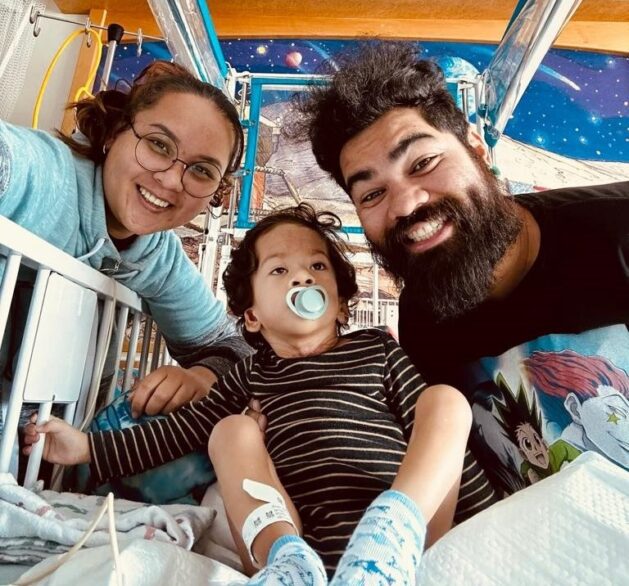
Two-year-old, Jazz Antes, can now enjoy a simple activity that was off-limits to him for so long: bubble baths. Taking a bath can be something we take for granted, but for parents Lydisha and James, it was a huge milestone for their son.
“We wanted Jazz to experience some of the wonderful things about childhood, like baths, being in nature and playing in the dirt,” James says. “I can’t believe we are here today, at this point, when it seems like yesterday Jazz entered the world struggling to catch a breath.” Read More...
Aerodigestive, airway disorders, feeding disorders, gastroenterology, hepatology, NICU, Otolaryngology, Patient Stories, Pulmonary, Uncategorized, Vascular Ring
aerodigestive, ENT, Otolaryngology, patient story, vascular ring
July 10, 2023
A Collaboration Between Rady Children’s and Scripps Benefits Both New Moms and Babies
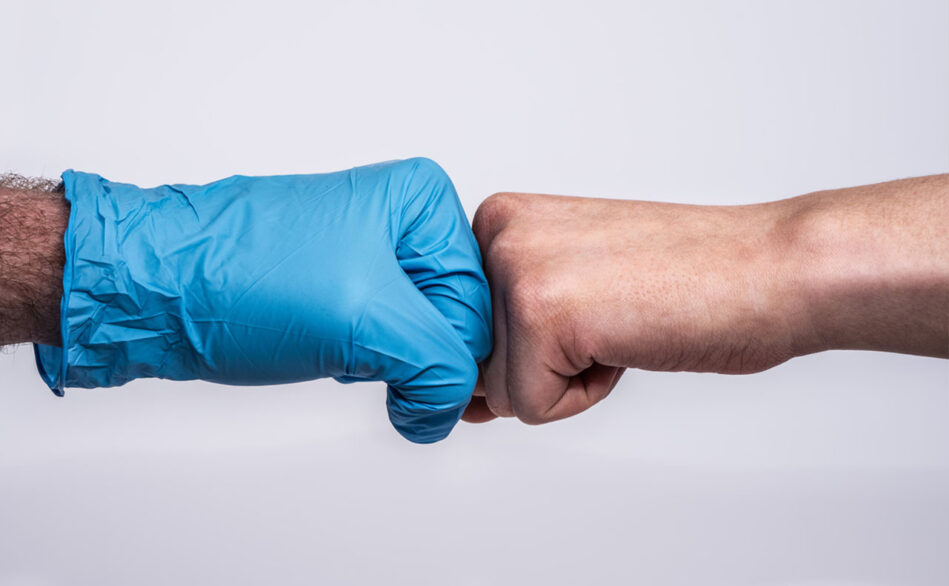
Partners in Care
Laura Mello’s first pregnancy seemed like a run-of-the-mill experience until it took a dramatic turn and her premature baby required specialized care to survive.
“I had an easy pregnancy in the beginning,” says Laura. “It was a boring, plain-old pregnancy and the baby was doing well. I was naïve to think that nothing could go wrong—I was a first-time mom, so how would I know? But it went from easy to complicated in a heartbeat.” Read More...
NICU, Patient Stories
Collaboration, neonatalogy, NICU
July 6, 2023
“Grandpa” Don Bellows has spent 15,000 hours serving the patients and families of Rady Children’s
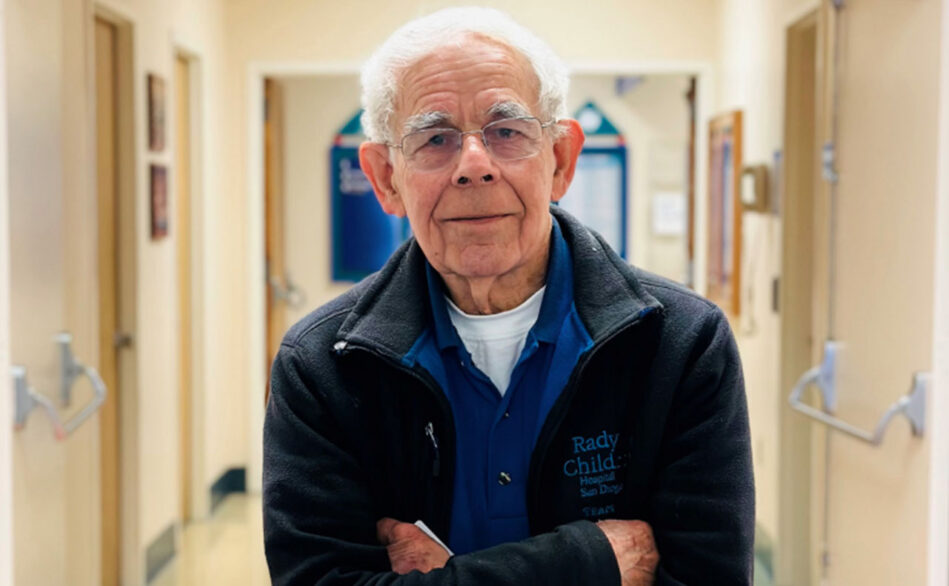
Don Bellows has been volunteering at Rady Children’s Hospital for 30 years
Don Bellows has become quite a familiar face around Rady Children’s. On any given day, the 92-year-old, who’s affectionately come to be known as “Grandpa Don” by Hospital staff, can be found guiding patients as they pick out library books, pushing wheelchairs around the Helen Bernardy Center for Medically Fragile Children or helping out any other place he’s needed.
The retired mechanical engineer has been a fixture around the Hospital for three decades—and he doesn’t plan on slowing down anytime soon. “I just enjoy being over there,” he says. Bellows’ philanthropic spirit was sparked 30 years ago during a trip to see a relative who was being treated at Rady Children’s. “I liked the atmosphere of the Hospital,” he recalls. “Everyone, all the employees, seem to be acting in the best interest of the children. They would cuddle the children. They would speak nicely to them. They seemed like they really wanted to help the children get well.” Read More...
Helen Bernardy Center, Volunteer
July 3, 2023
Helping New Nurses Find Their Place
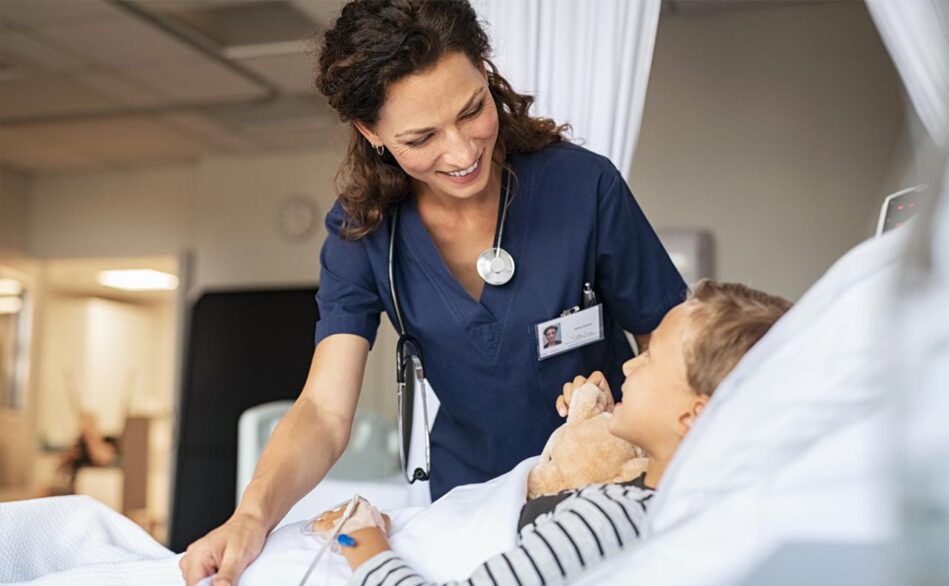
Rady Children’s Nursing bootcamp lets new pediatric nurses hone their skills and build community
Starting a new job can be tough, especially fresh out of school or after a career change. At Rady Children’s, nurses who are new to the profession, or just new to pediatrics, undergo an intensive, year-long training program, which helps them acclimate to the hospital environment, explore specialties or areas or interest and build camaraderie with other staff members.
Rady Children’s is committed to excellence in nursing and has been honored with the American Nurses Credentialing Center’s prestigious Magnet recognition for professionalism, teamwork and superiority in patient care. The nursing “bootcamp,” officially called the New Graduate Transition to Practice Program, is an extension of this and incorporates classroom, virtual and hands-on learning, one-on-one sessions with a preceptor and talks on resilience and wellness in the role. Sessions are held three times a year for cohorts of up to 50 nurses at a time. Read More...
Nursing
June 21, 2023
Super Sage: From surgery to skateboarding, Sage Blake won’t let anything slow him down

When 5-year-old Sage Blake walked into his first day of transitional kindergarten last fall, his mother, Kimberly, was there alongside other teary-eyed parents waving goodbye to their kids as they embarked on a new chapter. However, unlike a lot of the other moms who were sad to see their babies growing up, Kimberly was crying tears of joy, watching her big boy walk bravely into the classroom for the first time. “For a long time, we didn’t think Sage would ever be able to go to school,” Kimberly recalls. “In the past five years, there have been so many milestones I never thought we would get to see.”
When Kimberly was five-and-a-half months pregnant, she learned her baby had a double aortic arch, a congenital heart defect that results in a second artery that extends from the heart and wraps around the trachea and esophagus. This can lead to difficulty breathing and swallowing. Kimberly, who already had a high-risk pregnancy due to her own epilepsy, now had further complications to worry about. Three weeks before her due date, she was put on bed rest due to elevated blood pressure. She was induced at 37 weeks, and within a few hours of labor, her baby’s heart was in trouble. His double aortic arch created a vascular ring around the trachea and esophagus. “We knew there was a high likelihood of me needing an emergency C-section, which is what ended up happening,” Kimberly says. “As soon as he was born, he cried, but then he started gargling. The respiratory team was already there, and they whisked him away. We had no idea what was going on until later that day. By the time I got to meet him, he was already intubated and hooked up to all kinds of machines. His CT showed that his double aortic arch was really tight. His breathing was labored, and he was really struggling.” Read More...
Aerodigestive, Heart Institute, Otolaryngology, Patient Stories, Vascular Ring
June 9, 2023
Hudson the Hero – Genetic Testing Uncovers Rare Disorder and Offers Life-Altering Treatment
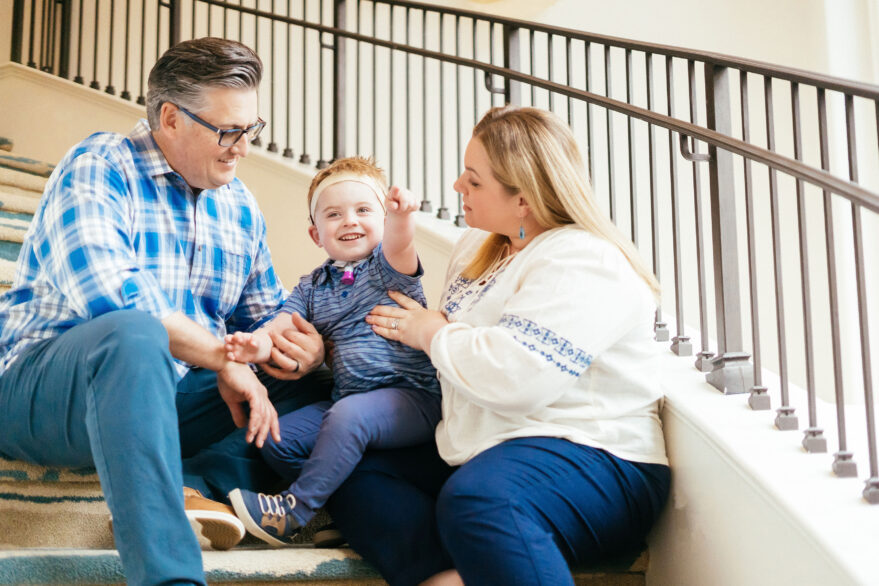
One day, Hudson Wingate was a healthy 13-month-old headed for fun at daycare. The next day, he was headed for admission to Rady Children’s Hospital.
His vocal cords were suddenly paralyzed, and he could hardly breathe. He could no longer pull himself up, walk, talk or swallow. The medical team’s best assessment, based on the information they had at the time, was that Hudson had Myasthenia Gravis (MG), a disorder that affects certain muscles of the body, especially those that control the eyes, mouth, throat and limbs. However, the standard treatment for MG wasn’t helping. Read More...
Aerodigestive, Gene, Genetics, Genome, Genomics Institute, Innovation, Patient Stories, Uncategorized
Genomic Institute, genomics, patient stories, pediatric research, Rady Children's research
May 24, 2023
New Research Sheds Light on Defining Normal Sagittal Spinal Alignment for Better Surgical Outcomes
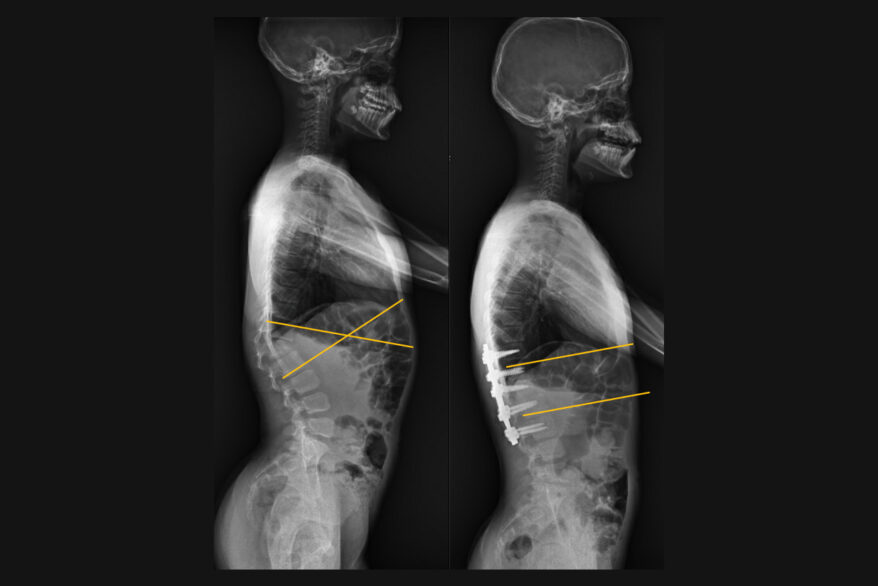
The importance of sagittal plane alignment in treating spinal disorders is widely recognized. However, much of our current understanding of sagittal alignment is derived from studies of patients with disease, degenerative change, or known deformity, when the goal is a normal prole.
Recent research led by Michael P. Kelly, MD, MSc, at Rady Children’s Hospital-San Diego, in the journal Spine sheds new light on measures of sagittal alignment that may better inform surgical decision-making. Additionally, Dr. Kelly aims to bring this knowledge from the adult population to the pediatric patients at Rady Children’s. Read More...
Orthopedics, Spine Center
May 10, 2023
From Stomachache to Heart Transplant: How Genomics Saved a Teen’s Life
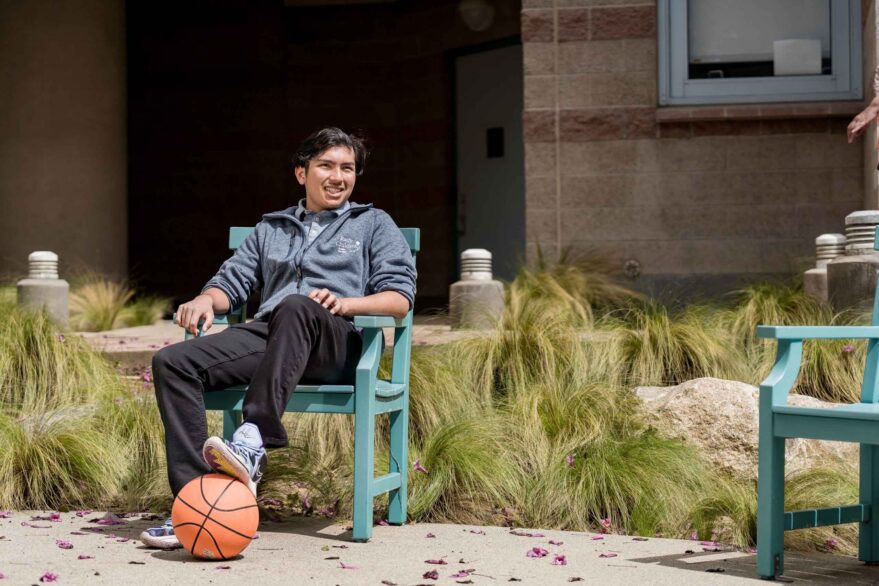
Mario Luna, an eighth-grader from Culver City, has always been passionate about basketball. He even dreams of playing in the NBA one day. However, on January 12, his world was turned upside down.
It all started with a stomachache which quickly turned into a more serious heart condition. Read More...
Adolescent and Young Adult Medicine, Cardiology, Gene, Genetics, Genome, Genomics Institute, Heart Institute, Heart Transplant, Patient Stories, Transplant
cardiology, cardiovascular health, cardiovascular surgery, gene, genetics, genome, Genome Institute, heart, heart institute, heart transplant, patient story
May 2, 2023
All Clear: Pioneering Portal Vein Thrombosis Procedure Opens Up New Possibilities
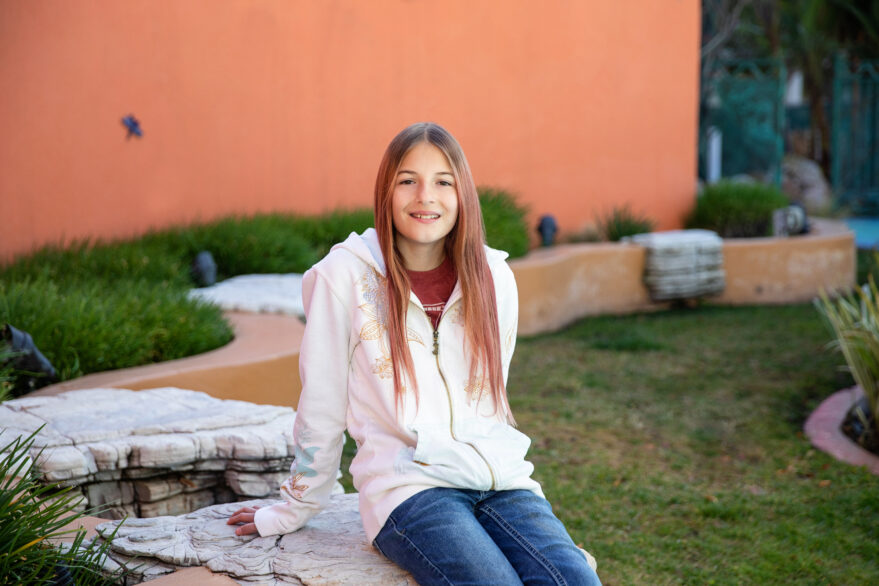
Ashlyn Frye hadn’t been feeling her best for the last several years. Teachers said she didn’t pay attention in class and would crawl under her desk to take a nap. At home, the 11-year-old seemed disconnected, says her mom Stacey Frye. “I was used to her being out of breath and tired,” Stacey recalls. “Just low energy. She wore out quickly. She’d just hang out and watch shows or read.” After a series of medical tests, Rady Children’s doctors determined that Ashlyn had celiac disease and portal vein thrombosis, a blockage of the vein that transports blood from the gastrointestinal tract to the liver. The hypersensitivity to gluten could be managed with diet, but the portal vein thrombosis would require intensive surgery to address the blood clot preventing her liver from processing blood. The Fryes were referred to a medical facility in San Francisco, but consenting to a complex procedure on their young child seemed grim. Then they learned Rady Children’s had a new doctor, Henri Justino, MD, who was exploring innovative catheter-directed therapies, including one that might work for Ashlyn’s portal vein thrombosis. (more…)
Read More...Adolescent and Young Adult Medicine, Cardiology, Innovation, Liver, Patient Stories, Uncategorized
cardiology, cardiovascular surgery, hepatology, liver, patient story, portal vein thrombosis
April 28, 2023
A Focus on Youth Shapes Next-Generation Spinal Surgery
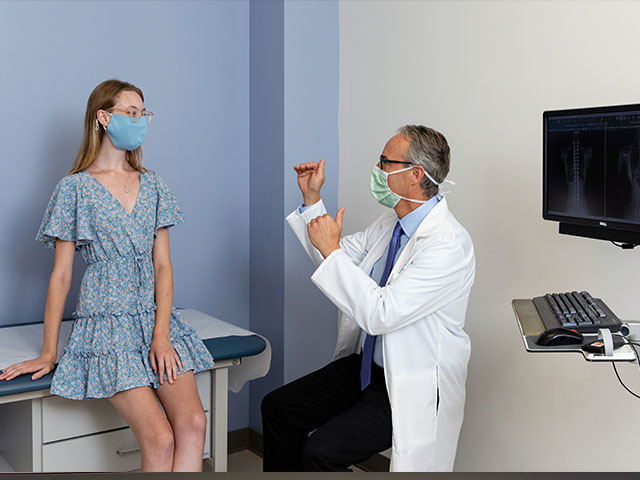
Rady Children’s Hospital-San Diego has recruited a prominent surgeon-researcher within its Orthopedics & Scoliosis program to advance knowledge of the genetic and biomechanical factors behind scoliosis; advances in patient care can lead to better outcomes and quality of life.
When Michael Kelly, MD, director of scoliosis and spinal deformities at Rady Children’s Hospital, is asked to explain how this spine-twisting disease affects adolescents differently from adults, he offers a blunt example. Read More...
Orthopedics, Patient Stories, Spine Center
orthopedics, patient stories
April 2, 2023
Spring Fever: How to Handle a High Temperature in Kids
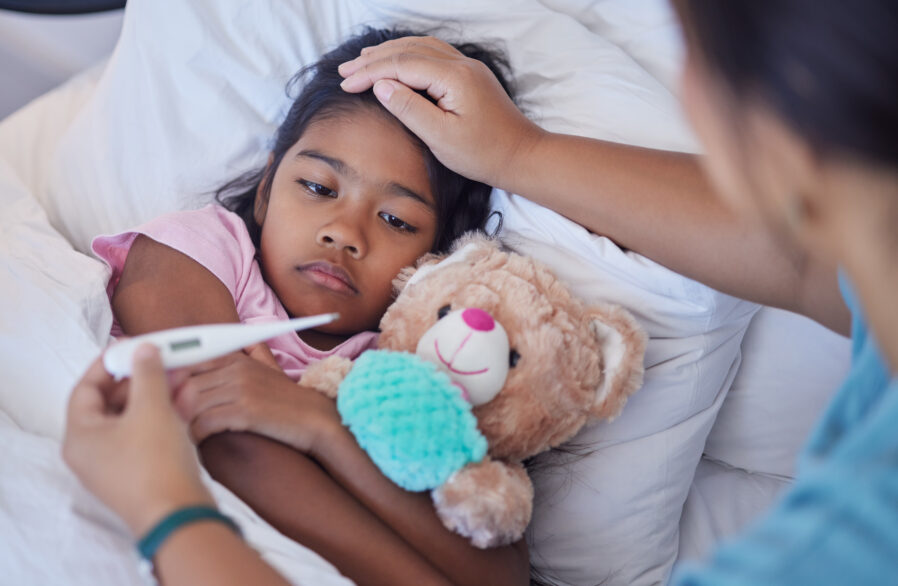
It’s natural for parents to worry when the thermometer reads over 100 degrees.
However, before you grab the ibuprofen or rush to urgent care, Jaime Friedman, MD, a pediatrician at Rady Children’s, wants you to keep some information in mind. “The most important thing parents should know about a fever is that, for the vast majority of children over 3 months old, fevers are not harmful,” Dr. Friedman says. “Fevers are a symptom, not a disease. They are part of the body’s immune system to help fight infection.” A fever is defined as a temperature of 100.4 degrees Fahrenheit or higher. However, some children may feel unwell when their temperature is above 99 degrees. What exactly causes a fever? It could be any of a number of things, ranging from an autoimmune disease to cancer to a viral infection. A typical cold can cause a fever for three to five days. When a child does have a fever, parents should note other symptoms the child may be experiencing. Read More...
Adolescent and Young Adult Medicine, Flu Information, Infant Health, Nursing, Parenting tips, Uncategorized
fever
March 20, 2023
An Unbreakable Bond: Andrew and Brooklyn’s Story
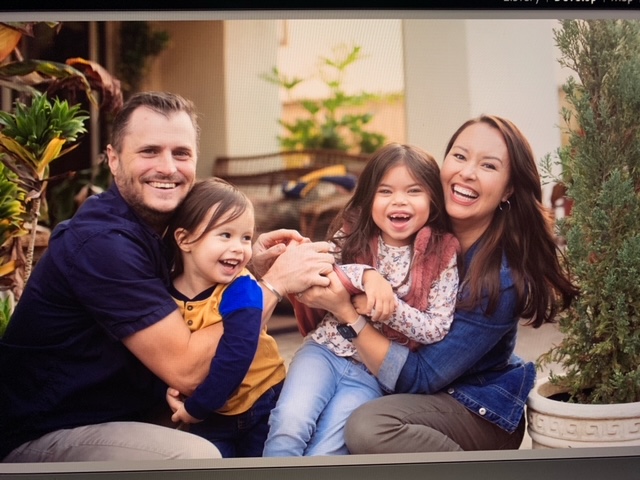
After waiting on pins and needles, Andrew All learned that he could save his daughter’s life with the gift of a kidney donation. A donation could mean a return to normal 6-year-old activities, like, swimming, taking baths, and enjoying popsicles. It also meant not being hooked up to a machine for 10 hours a night, and the frequent dressing changes and blood pressure checks would all come to an end.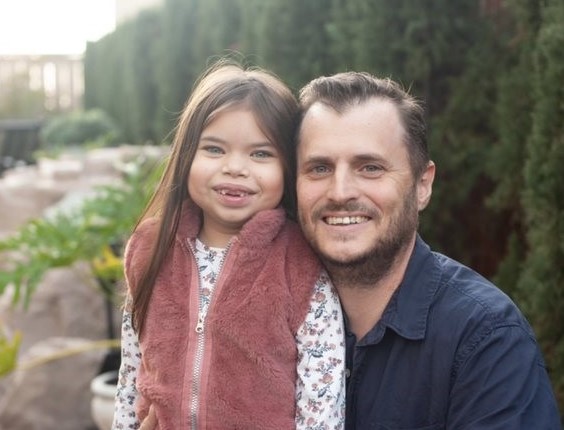
“When heading to the operating room, I was full of nerves,” Andrew says. “But I knew my daughter, Brooklyn, had been so brave throughout the whole process. Her bravery was my inspiration.” Read More...
Adolescent and Young Adult Medicine, Cancer, Child Life, Hematology/Oncology, Nephrology, Transplant
kidney, nephrology, patient stories, transplant
February 24, 2023
A Heart to Hold – Parker’s Story
Can you imagine holding your own heart in your hands?
That’s just what 15-year-old Parker Mayorgas did after receiving a life-saving heart transplant. But his story didn’t begin there. Read More...
Adolescent and Young Adult Medicine, Cardiology, Transplant
cardiology, cardiovascular surgery, child life, patient story
February 13, 2023
Jonathan’s Story
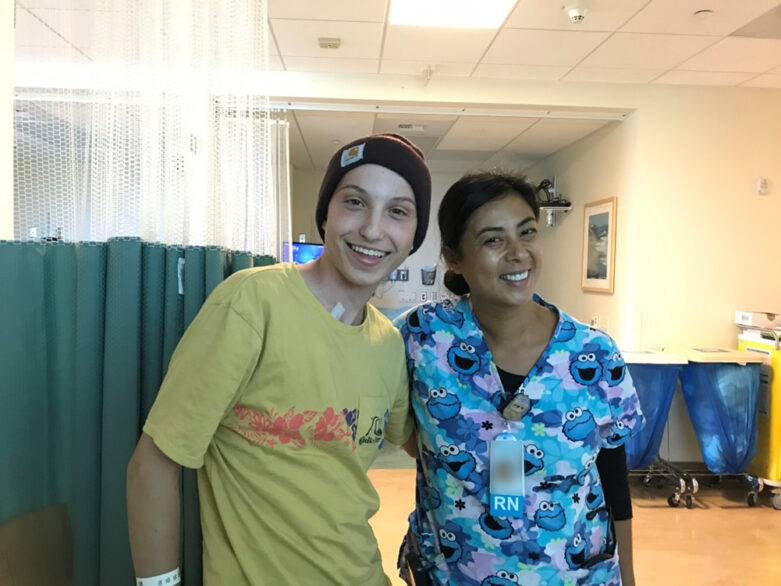
Sixteen-year-old Jonathan wanted to be a pediatrician when he “grew up” and was excited to be accepted into Rady Children’s Medical Academy, a program that provides high-school age students with unique and exciting opportunities to explore the world of health care through lectures, skills clinics, hands-on activities, group projects, career panels and interactive discussions.
Every day when Jonathan’s parents dropped him off at the Medical Academy, they watched the families crossing the sidewalk in front of the Acute Care Pavilion on their way to treatment, the children often masked and bald – not knowing that they would find themselves in their shoes. Jonathan returned to Rady Children’s just two weeks after the conclusion of the Medical Academy, this time as a patient. Read More...
Adolescent and Young Adult Medicine, Cancer, Giving Back, Hematology/Oncology
giving back, Peckham Center for Cancer and Blood Disorders, pediatric hematology/oncology
January 20, 2023
Autism in the ER
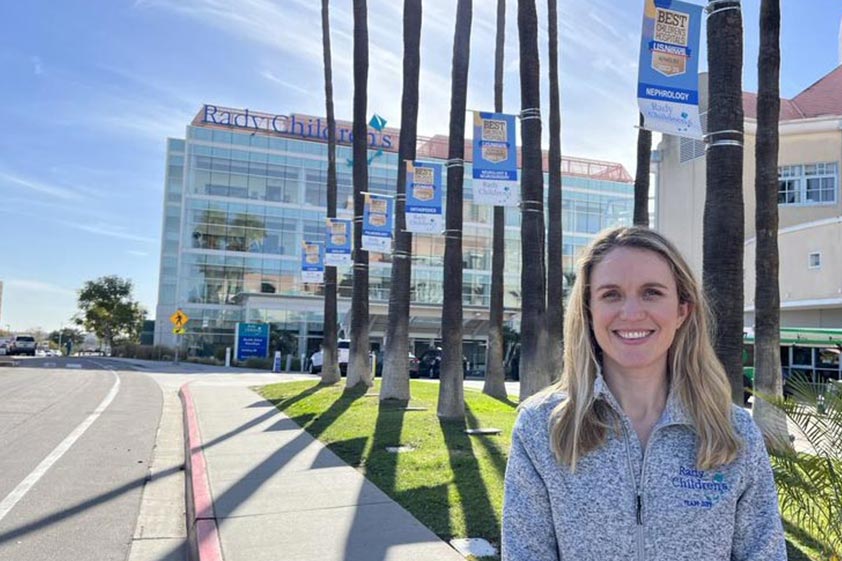
Rady Children’s offers specialty help in emergency health
Some 21,500 children on the autism spectrum visit Rady Children’s Hospital each year, more often visiting the emergency department (ED) for a range of medical and behavioral concerns. Read More...
Autism
January 17, 2023
Nurses Find Belonging, Inspiration at Rady Children’s
Not many people come home from work knowing they’ve made an impact on a person’s life. But at Rady Children’s Hospital, it’s an everyday feeling. Rady Children’s is supported by 1,500 nurses who help care for more than 280,000 patients each year. Although the diverse team members come from all walks of life and from all around the world, they share a common passion: Giving the best care to young patients.
Are you interested in a nursing career at Rady Children’s? Check out our open nursing jobs, here. Read More...
#IAmTeamRady, Nursing, Staff Stories
nursing, staff stories, teamrady
January 2, 2023
Top-Notch Care for Newborns in Critical Need
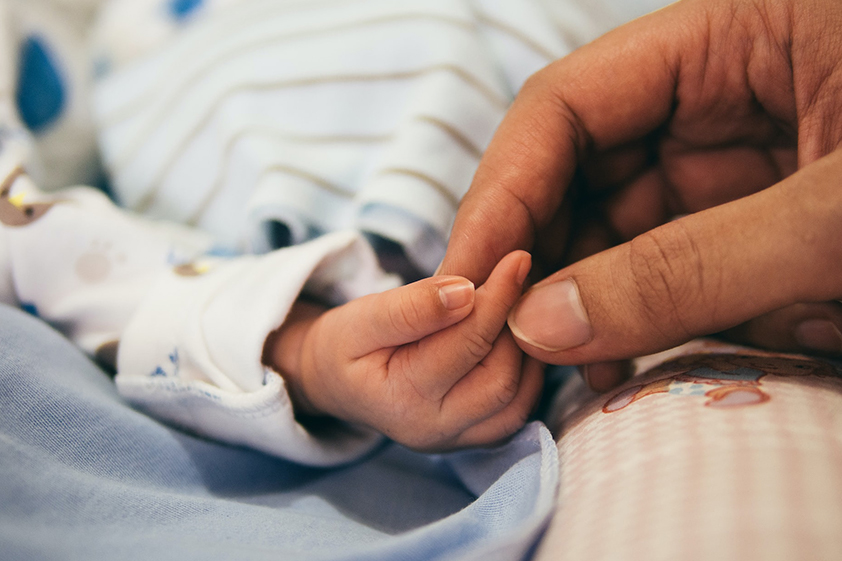
Rady Children’s Neonatology Program combines TLC with high-tech equipment to care for critically ill infants.
A baby’s due date is a day often met with anticipation and excitement.
But what happens when that day comes much too early? Or when complications arise and emergency interventions are required to keep mom and baby alive? While most deliveries don’t require extra-special care, each year between 10 and 15 percent of newborns need the above and-beyond support that can only be offered by neonatology specialists in a neonatal intensive care unit (NICU). Read More...
NICU
neonatalogy, NICU
December 7, 2022
How Rady Children’s Celebrates the Holidays

The holidays can be tough for hospitalized kids. Rady Children’s goes above and beyond to make the season magical
Each year, hundreds of ill or injured children spend the holidays at Rady Children’s. The staff and volunteers at Rady Children’s and their community partners go above and beyond to make sure no one misses out on the holiday fun. The halls are decked, the gifts wrapped and special holiday happenings take place throughout the season. Read More...
Giving Back
giving back, holidays with kids, lighttheway
November 16, 2022
Acne and the Microbiome
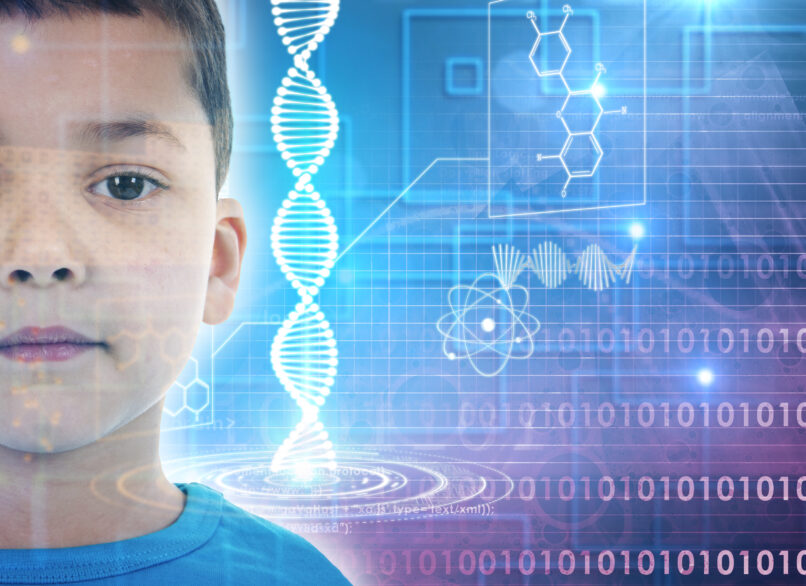
Promising new acne treatments are on the horizon
Many see acne in teens as an inevitable fact; though, for acne sufferers, even the occasional breakout can negatively impact self-esteem. As many as 50 million Americans are affected by acne, yet it remains among the least-studied skin conditions. Researchers in San Diego are investigating how the microbiome, the community of bacteria and other microorganisms that live in and on the body, influences the development of acne, which may lead to groundbreaking new preventive treatments. Read More...
Adolescent and Young Adult Medicine, Dermatology, Research and Innovation
acne, antibiotic resistance, microbiome, pediatric dermatology, pediatric research, Rady Children's research, resistant bacteria, resistant bacteria research
November 3, 2022
How To Care for the Seasonal Sniffles, Flu, Fever and More at Home
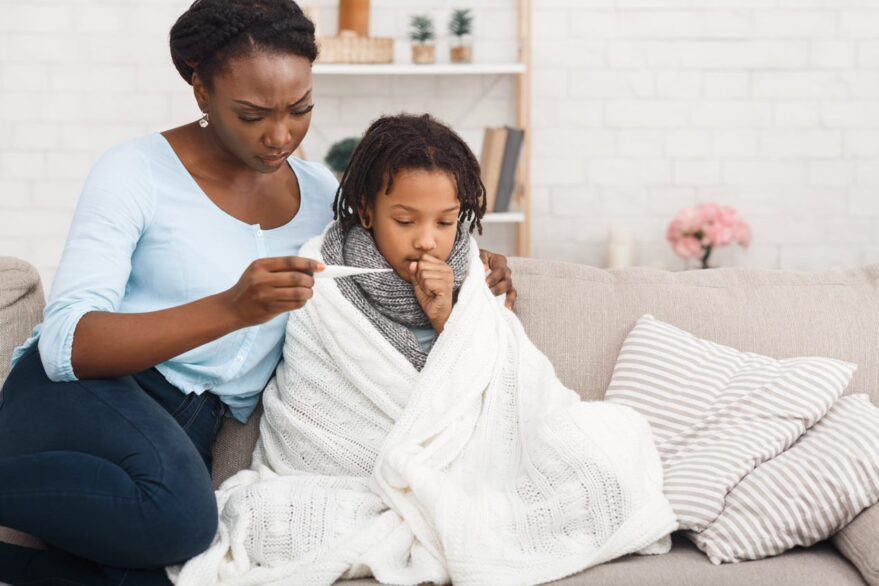
It’s that time of year again. Cold and flu season. And with kids returning to normal activities like school, daycare, activities and playdates, cases of all respiratory diseases are up this year. Rady Children’s Hospital-San Diego, shares tips on differentiating the various illnesses, prevention tips, how to care for symptoms at home and what you want in your medicine cabinet ahead of the season. (more…)
Read More...Adolescent and Young Adult Medicine, COVID-19, Flu Information, Infectious Diseases, Uncategorized, Vaccines
coronavirus, covid-19, flu season
November 1, 2022
The Perils of Perfection – Making Holidays Less Stressful

It’s right around the corner! The holiday season. This time of year can really dial up the pressure on already overextended parents. The urge to provide your family with a “perfect” holiday can wreak havoc on your well-being while entertaining, travel and gifting can also do a number on the wallet.
“Balancing the excitement and stress and maintaining our health and mental wellness during the holidays can be difficult—and it can be difficult for our kids, too,” says Anne Bird, MD, medical program director of Behavioral Health Integration at Rady Children’s. Stress is a normal emotional response to challenging events, but most kids don’t have the coping skills yet to navigate through it by themselves, says Dr. Bird. Keep an eye out for unusual behaviors, such as emotional outbursts, sleeping issues, irritability or becoming withdrawn. Read More...
Adolescent and Young Adult Medicine, Behavioral Health, Giving Back
anxiety, behavioral health, depression, giving back, mental health, pediatric mental health
October 10, 2022
A Girl of Many Talents – Liv’s Story
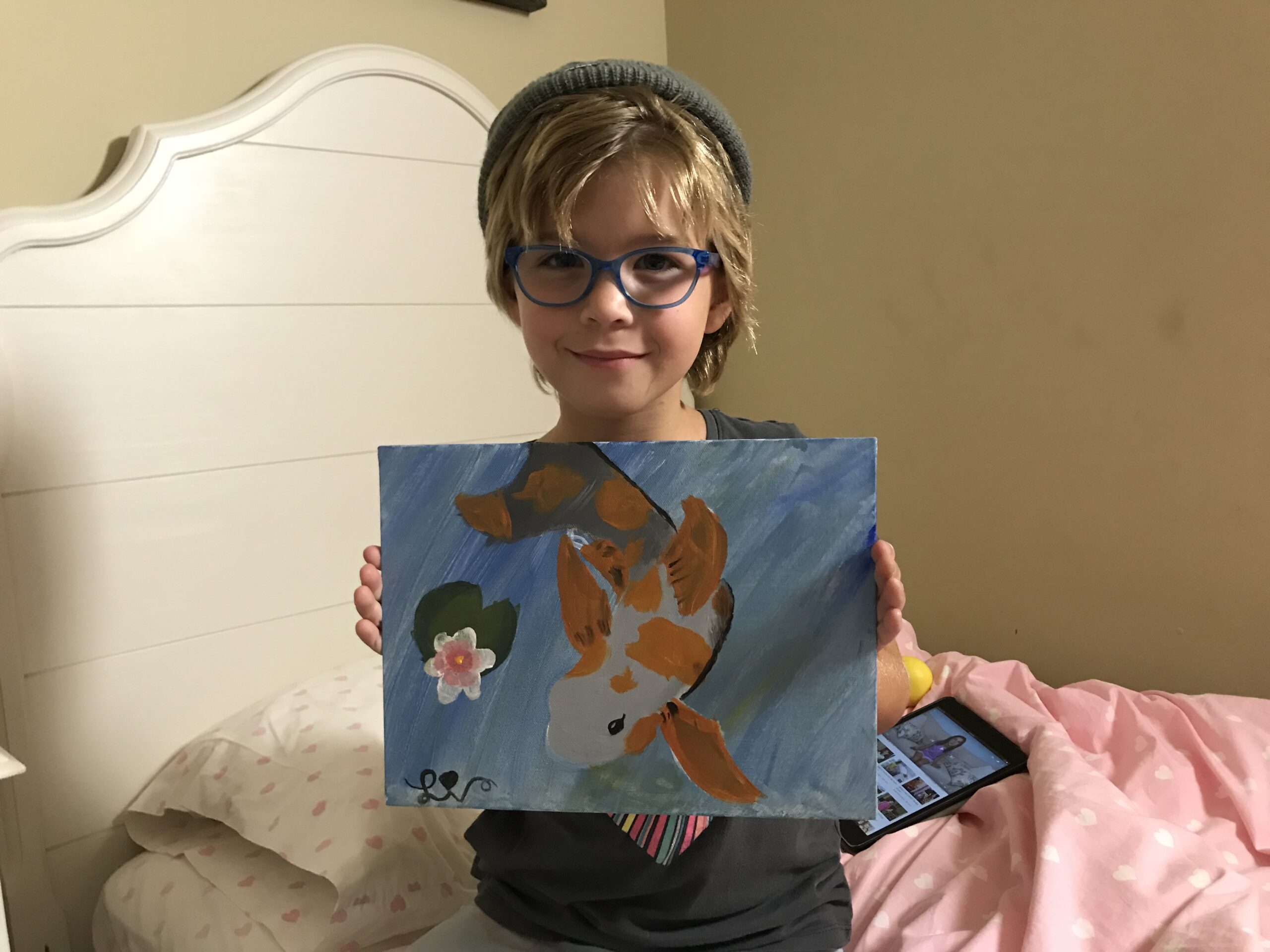 Liv, a busy and curious 13-year-old, can recite the numbers of pi up to 50 digits. She can also recognize an icosagon, or 20-sided shape. She’s an artist, a published author and is learning Chinese. Liv agrees that she has accomplished many things in her young life, but beating cancer was a life-changer. Read more.
Liv, a busy and curious 13-year-old, can recite the numbers of pi up to 50 digits. She can also recognize an icosagon, or 20-sided shape. She’s an artist, a published author and is learning Chinese. Liv agrees that she has accomplished many things in her young life, but beating cancer was a life-changer. Read more.
Cancer, Hematology/Oncology
hematology/oncology
October 5, 2022
How Rady’s is Shaping Next-Gen Spinal Surgery

Rady Children’s Hospital-San Diego recently recruited Michael Kelly, MD, to its nationally ranked Orthopedics and Scoliosis Center. Check out the article in Nature on Dr. Kelly, director of scoliosis and spinal deformities at Rady Children’s, and how this spine-twisting disease affects patients like Sophie Allison (pictured above).
Read More...Uncategorized
September 26, 2022
Honoring Childhood Cancer Awareness Month
Did you know that every 3 minutes a family hears the devastating news that their child has cancer? That’s nearly 16,000 kids each year that must spend time in a hospital versus a playground or art class. During treatment, it’s important for kids to get to be kids as much as possible. Rady Children’s Hospital-San Diego recently honored Childhood Cancer Awareness month with celebrations and fun activities to get outside, like chalk art. Read More...
Cancer, Hematology/Oncology
hematology/oncology, Peckham Center for Cancer and Blood Disorders, psychosocial programs
August 23, 2022
Nurses Share Top 3 Reasons to Join Team Rady
Have you ever wondered what it would be like to be a nurse at Rady Children’s Hospital-San Diego? We spoke with three nurses who transitioned from treating adults to kids, why they enjoy working at Rady Children’s…and why nurses should work here! If you are a nurse looking for a new adventure, check out the top three reasons why you should join our nursing team: Read More...
#IAmTeamRady, Nursing, Staff Stories
staff stories
August 10, 2022
Team Rady Celebrates at Transplant Games; Honors Team That Delivers Highest Level of Care

The Transplant Games of America recently came to San Diego, honoring those who gave the selfless gift of life and celebrating patients. Held every two years, this was the first time the event happened on the West Coast.
Rady Children’s Hospital-San Diego patients and families joined team members to make a strong appearance at the event. The five-day celebration began with a parade along the San Diego waterfront, followed by competitions across a number of sports featuring transplant donors and recipients of all ages. The goal of the Games is to celebrate incredible accomplishments in transplant care and encourage all to consider donation. Read More...
#IAmTeamRady, Cardiology, Child Life, Transplant
August 2, 2022
COVID-19 vaccination is approved for kids. As a pediatrician, here’s why I recommend it.
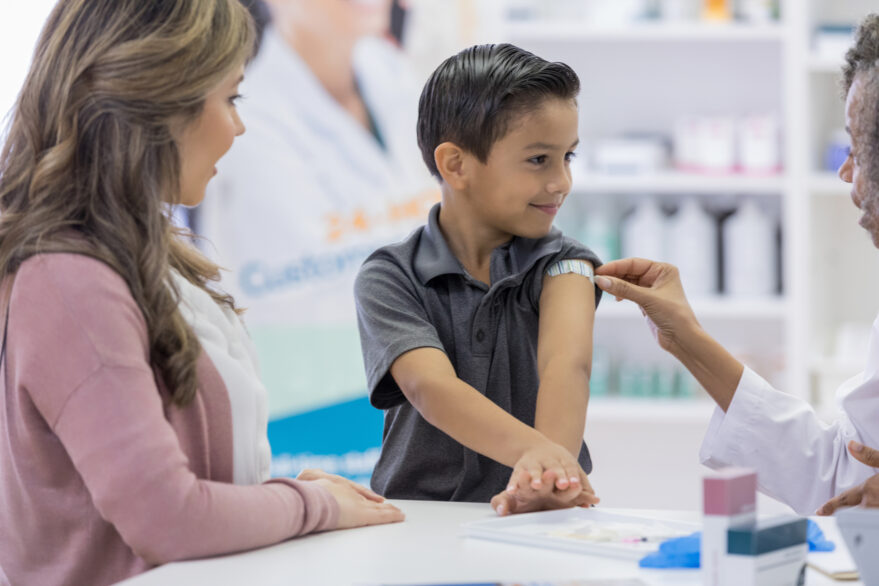
By John Bradley, M.D.
The Food and Drug Administration authorized children as young as 6 months old to get the Moderna or Pfizer-BioNTech COVID-19 vaccines last month. For many parents, the decision meant a long wait was finally over. Read More...
COVID-19, Infant Health, Vaccines
coronavirus, covid-19
July 26, 2022
Doubly Blessed

A young life saved by the gift of a dual organ transplant
In July 2021, Nehemiah “Nemo” Maldonado was a healthy, active 12-year-old playing with friends and family in his home state of Arizona. Weeks later, he was fighting for his life, facing an illness that came on suddenly and progressed rapidly. Within months, he would become the first patient at Rady Children’s Hospital to receive a dual organ transplant. Read More...
Cardiology, Transplant
July 1, 2022
Summer Survival Guide

There’s more to summer than fun in the sun. Ensure your children are safe with these tips from Lorrie Lynn, manager of the Injury Prevention Center at Rady Children’s and coordinator of Safe Kids San Diego.
Splash Safely
Drowning is the leading cause of death among San Diego County children ages 14 and under, and children who survive a non-fatal drowning can face lifelong injuries. These facts are proof positive that it’s imperative to always keep a close watch on your kids—no matter their age or competency level in the water. Read More...
Safety
May 31, 2022
Asian Pacific American Heritage Month Spotlight: Brittanee Randle
 1. Asian, Hawaiian, Pacific Islander, and South Asian are broad terms that encompass a large geographic area. Which term do you most identify with and which island or country?
1. Asian, Hawaiian, Pacific Islander, and South Asian are broad terms that encompass a large geographic area. Which term do you most identify with and which island or country?
I mostly identify with the term Asian. I am half Filipino and my grandparents immigrated from the Philippines in the 1960s. Read More...
#IAmTeamRady
May 10, 2022
Hopeful and Grateful: One Family Living with Pediatric Heart Disease
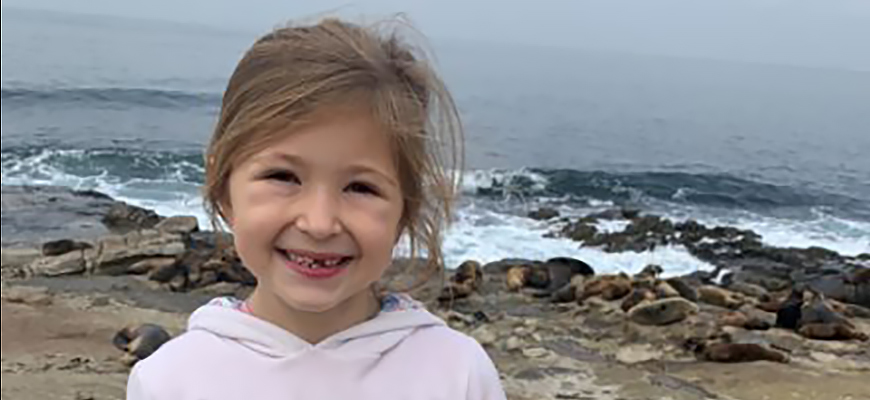
Jaylie Sawyer is a bright and joyful 7-year-old who loves animals, enjoys math and is proving to be a natural on skis. She also is living with pulmonary vein stenosis (PVS), a rare condition in which the veins that carry blood from the lungs back to the heart continually narrow and scar. The cause of PVS is unknown and patients require multiple interventions over many years, including cardiac catheterization procedures to restore blood flow to the heart.
For her healthy life and closely monitored heart, thanks go to her devoted and determined parents, Jessica and Daniel, and to her physician, Henri Justino, MD, a pediatric cardiologist and pioneer in PVS care who joined Rady Children’s Dickinson Image-Guided Intervention Center in 2021 from Texas Children’s Hospital, in the Sawyers’ home state. Read More...
Cardiology, Dickinson Image-Guided Intervention Center
cardiology
May 3, 2022
An Informative Q&A with Dr. Ben Maxwell on Mental Health
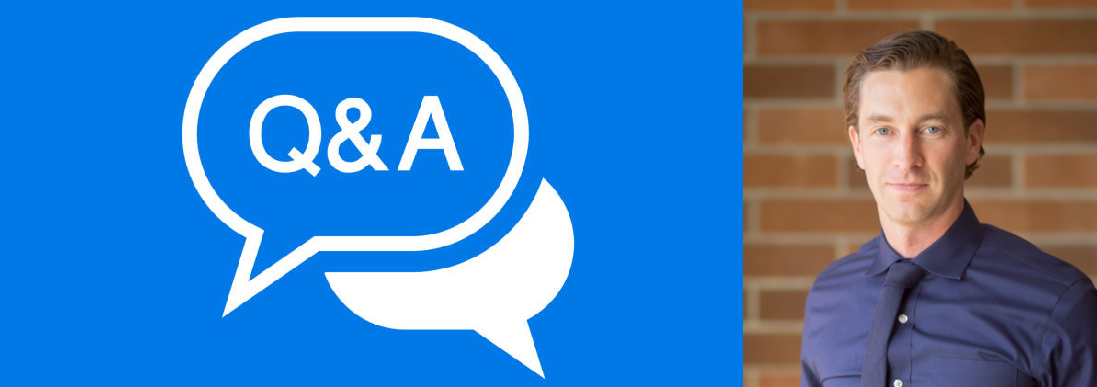
To kick off #MentalHealthAwarenessMonth, Dr. Ben Maxwell, medical director of inpatient psychiatry and interim director of Child and Adolescent Psychiatry Services at Rady Children’s, participated in San Diego Business Journal’s Healthcare Roundtable: An Informative Q&A With the Region’s Top Behavioral Health Professionals.
Click here to read the full San Diego Business Journal Healthcare Roundtable Q&A Read More...
Behavioral Health
behavioral health, mental health, pediatric mental health
April 25, 2022
Screen-Time Reset

It’s time to get your child back on track
It’s no surprise to learn that screen time has increased as a result of the pandemic. A UC San Francisco– led study quantified the rise, finding that among 12- and 13-year-olds, recreational screen time has doubled, from an average of 3.8 hours a day before the pandemic to 7.7 hours. Read More...
Behavioral Health
April 25, 2022
Philanthropy Drives the Mission of Rady Children’s Hospital

Behavioral health and other services are all made possible by donor support
If you ask local parents Andrew and Michelle about their experience with one of Rady Children’s behavioral health programs, they’ll tell you how thankful they are to have had support during such a challenging time. Read More...
Behavioral Health
April 25, 2022
One Step Closer to Solving the Peanut Problem

Rady Children’s is conducting clinical trials for new immunotherapy allergy treatments
For most kids, a peanut butter sandwich is more of a treat than a threat. But for more than a million kids who have a peanut allergy, a PB&J is a surefire way to ruin a day. Historically, these kids haven’t been able to do much about their allergy except avoid peanuts at all costs, but researchers at Rady Children’s are working to give them a more reliable solution. Read More...
Allergy/Immunology
April 19, 2022
Getting to Know: Christina Baker, PsyD, clinical psychologist
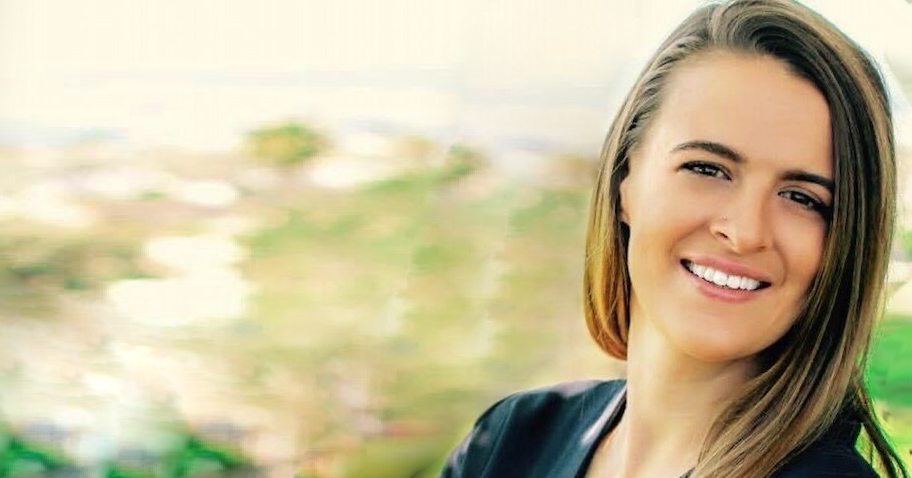
The American Psychological Association recognizes the third week in April as Psychology Week. Psychologists often wear many hats and can specialize in health care, education, research, workplace improvement and technology. Psychologists at Rady Children’s Hospital-San Diego are working in both inpatient and outpatient settings to ensure they are meeting the behavioral health needs of patients and their families. This is achieved through individual therapy, consultation/liaison services, integrated behavioral health services, neuropsychological and psychological testing, quality assurance, process improvement projects and health psychology services. We appreciate all of our psychologists and celebrate Psychology Week alongside our psychology teams.
In celebration of Psychology Week, we interviewed Christina Baker, PsyD, a clinical psychologist who works in the Rady Children’s Hematology/Oncology division. Read More...
Behavioral Health, Hematology/Oncology, Uncategorized
April 14, 2022
Poway Resident Is ‘the Rock’ at Rady Children’s Hospital
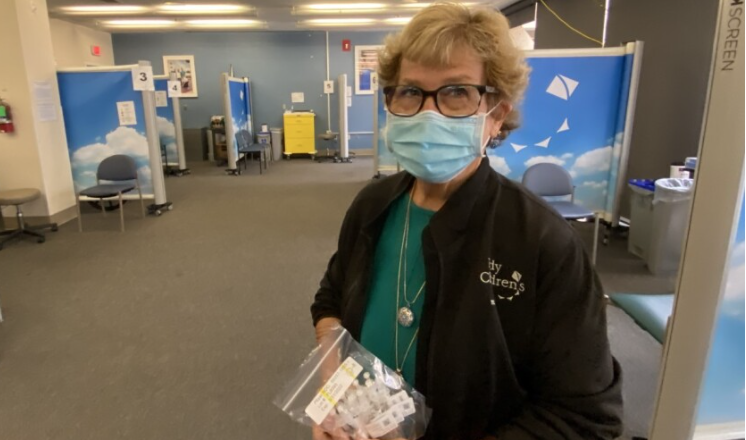
By Angela Brandt, Staff Writer,
Chris Abe is made for emergencies. Whether it’s a nurse being accidentally pricked by a needle or a worldwide pandemic, she is able to to remain calm and think of solutions under pressure. Read More...
#IAmTeamRady, COVID-19, Infectious Diseases, Safety, Staff Stories, Uncategorized, Vaccines
April 11, 2022
Getting to Know: Yesenia Mejia, PhD, trainee with San Diego LEND
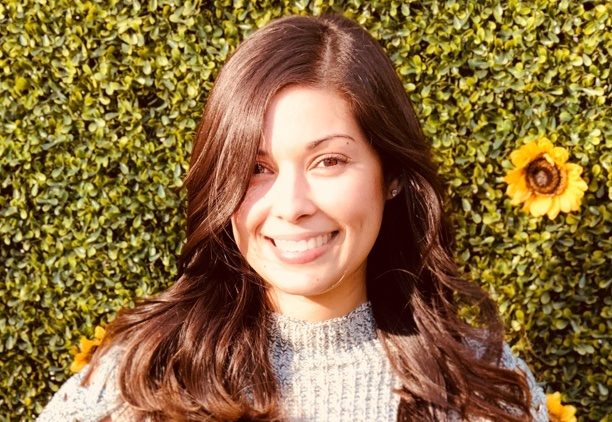
Yesenia Mejia, PhD, is a postdoctoral scholar at the Child and Adolescent Services Research Center in the Department of Psychiatry at UC San Diego. She received her doctoral degree in clinical psychology from the University of North Carolina at Greensboro. She is currently a trainee with the San Diego LEND (Leadership Education in Neurodevelopmental and Related Disabilities) program.
Her clinical and research experiences have focused on reducing racial/ethnic disparities in mental health care through understanding risk and resilience processes, developing culturally-responsive interventions, and improving mental health treatment access for youth and their families. In her current position she aims to continue working toward reducing inequities in evidence-based care by examining the influences of cultural, systemic and service setting factors on service access, engagement and clinical outcomes for children with autism spectrum disorder and their families. Read More...
Child Development
March 25, 2022
March is Child Life Month
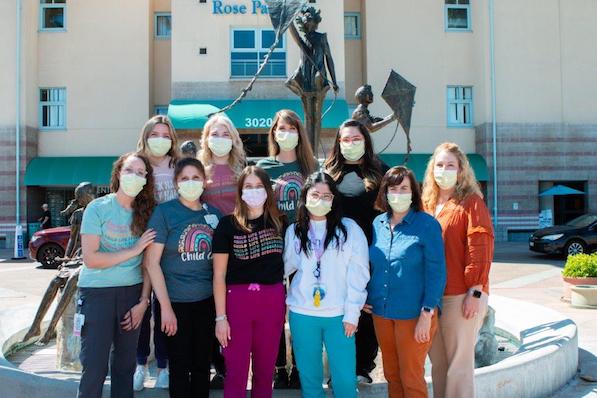
“Radiology,” “chemotherapy” and “dialysis” are big terms for little patients to understand, and even bigger medical experiences to go through. So, when anxiety strikes before a procedure or things get overwhelming during a hospital stay, a very special kind of health care professional is there to help calm fears, make sense of it all, and even inspire fun and laughter — child life experts.
This Child Life Month is a great time to learn more about the meaningful work this dedicated unit does each and every day. Read More...
Child Development, Child Life
February 24, 2022
Is Your Car Seat Safe?
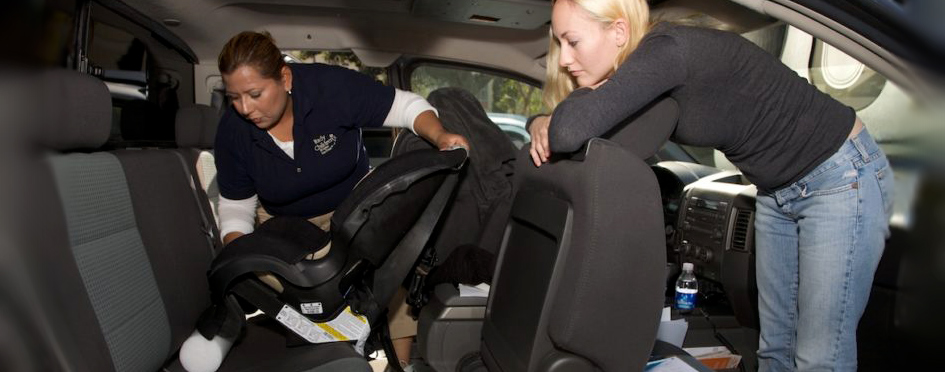
Rady Children’s provides car seat safety checks to be sure
Even the most careful parents can use a little help sometimes. Rady Children’s and its community partners are working to ease the minds of local parents and guardians by making sure their car seats are safe and installed correctly, and replacing them if they don’t meet safety standards. Read More...
Safety, Uncategorized
February 23, 2022
Patient born with heart defect leaves living legacy

By Diane Bell, Columnist, The San Diego Union-Tribune
Feb. 12, 2022 — Most people associate February with Valentine’s Day, romance and love. For San Diegan Maria Platis, it signifies Heart Month and the birth to her son, George. Read More...
Cardiology
November 3, 2021
Food for Thought

Hippocrates’ directive of “let food be thy medicine” has been around for millennia. But for Jong Rho, MD, chief of the Division of Neurology at Rady Children’s Hospital-San Diego and a professor in the Departments of Neurosciences, Pediatrics and Pharmacology at the University of California San Diego School of Medicine, it still rings true.
Dr. Rho is a prolific researcher in areas including the connection between the ketogenic diet and a broad array of neurological disorders. Although it’s gained recent popularity for weight loss and endurance sports, the keto diet actually turns 100 this year, and its high-fat, low-carb makeup has been used to treat medically intractable epilepsy for its entire history. Dr. Rho notes that while it’s still not fully understood exactly how or why the keto diet works to reduce or eliminate seizures in patients with epilepsy, it pushes the body and brain to fuel up in a different way than they would from carbohydrates. It is effective for both adult and pediatric patients with epilepsy, even those who have been unsuccessful with traditional drug therapies. “The rigorous clinical studies of ketogenic diet effects in epilepsy exceed most drugs,” he says. “Whereas most drugs go through one or two clinical trials, we have 12 prospective controlled studies with diet in patients that have failed drug therapy. Most will respond.” Read More...
Neurology
ketogenic diet, metabolic, nutrition, pediatric research, Rady Children's research
September 23, 2021
Getting to Know: Cassidy Callahan, Clinical Research Navigator
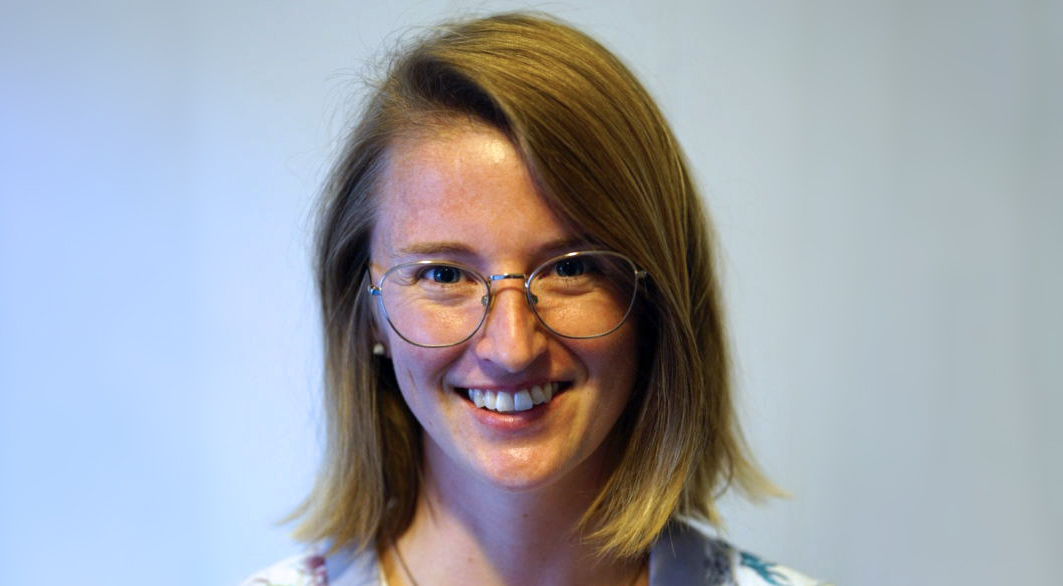
Ever wonder how medicine and science converge to create new opportunities and new hope for the tiniest patients around the world? Cassidy Callahan, Rady Children’s Hospital-San Diego’s clinical research navigator, can certainly fill you in. Working in step with investigators and physician-scientists across Rady Children’s research team and partner organizations, Cassidy is a central part of bringing diagnostics, treatments and cures from researchers’ brains to patients’ bedsides. Learn more about what it takes to keep exploration moving forward from the research whiz herself.
What is a day in the life like in your role? Read More...
Research and Innovation, Staff Stories
cell therapy, COVID-19 research, gene therapy, pediatric research, Rady Children's research, staff stories
July 9, 2021
The New Back-to-School Anxiety

Back-to-school season can always feel a bit uncertain, but this year, kids and teens are facing a unique set of circumstances as many return to in-person learning for the first time since March 2020. “The majority of children have been expressing concerns about returning to school, whether it’s minor worry or more significant and impairing,” says Willough Jenkins, MD, inpatient medical director of Child and Adolescent Psychiatry Services and clinical lead of the pediatric consultation liaison service at Rady Children’s Hospital-San Diego and an assistant professor for the Department of Psychiatry at University of California San Diego School of Medicine. “The rates of depression and anxiety have [also] increased in youth during the pandemic. It is important to recognize that for some children, they have not only fallen behind in terms of academics, but also social and emotional development. Returning to school needs to equally prioritize the academic and social/emotional catchup. Over the last year-and-a-half, children have changed significantly, as opposed to the standard two months away over the summer. There is concern about where they might fit in and how their peers might react to those changes.”
More pandemic-specific fears include worrying about whether in-person classes and new schedules will stay in place and concerns about whether oneself, friends or loved ones will get sick. “Some children are returning to school having lost loved ones to the pandemic and have the added anxiety of explaining their loss,” notes Dr. Jenkins. And, particularly for younger children, a transition from significant time with family and caregivers to significant time without them has the potential to amplify separation anxiety. However, although the pandemic looms large in our minds, if a child is facing stress or anxiety, don’t automatically assume it’s COVID-related, Dr. Jenkins adds. “In addition to the pandemic, there has been focus on social justice issues, racism and politics, which certainly has affected older children and youth.” Read More...
Behavioral Health, COVID-19
anxiety, back-to-school, covid-19, COVID-19 anxiety, help kids return to school, pediatric behavioral health, pediatric mental health, safe school, school anxiety
June 7, 2021
Rady Children’s is an MIS-C Research Hub
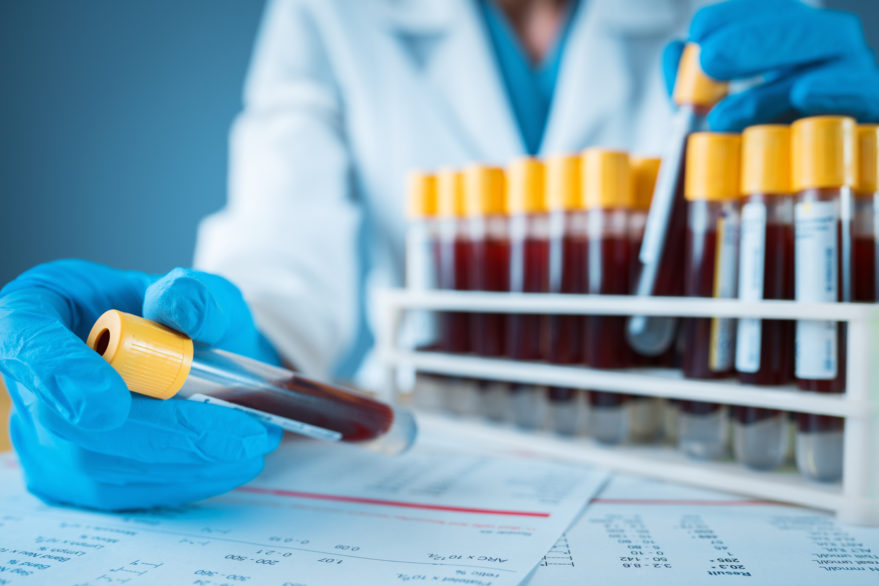
When the novel coronavirus pandemic hit, naturally, COVID-19 itself topped the list of global health concerns. However, related issues were catching the attention of the medical and scientific community as well. Among them: the emergence of a new multisystem inflammatory syndrome in children after exposure to the virus. In the United States alone, the Centers for Disease Control and Prevention has reported 2,617 cases to date, and Rady Children’s Hospital-San Diego has provided care for more than 70 patients with the condition. MIS-C leads to inflammation to organs and symptoms such as abdominal pain, vomiting, diarrhea, fever and rash, and can occur even when a child was not known to have been exposed to SARS-CoV-2, the virus that causes COVID-19. It bears many similarities to Kawasaki disease, a subject Jane Burns, MD, director of the Rady Children’s Kawasaki Disease Clinic and the Kawasaki Disease Research Center at UC San Diego, and Adriana Tremoulet, MD, MAS, associate director of the UC San Diego KDRC, know a thing or two about. Upon seeing the rising MIS-C trend in international reports and in their own care settings, the internationally recognized physician-scientists took action to pursue a deeper understanding of, and in turn tailored diagnostic and therapeutic solutions for, the condition.
Dr. Burns and Dr. Tremoulet sent out a call for collaboration throughout their KD network, and soon launched the Characterization of Multisystem Inflammatory Syndrome and its relationship to KD, or CHARMS, study. Funded by the Patient-Centered Outcomes Research Institute, experts from 26 research sites in the United States are gathering clinical data and blood samples from patients with MIS-C. In addition, with funding from the National Institutes of Health’s PreVAIL grant, Dr. Tremoulet and additional researchers at UC San Diego will use clinical details and samples to work on the development of a diagnostic test specifically for the condition. Dr. Burns and Dr. Tremoulet note that at this time, diagnoses are based on fever, severe inflammation on standard lab tests and the presence of SARS-CoV-2 antibodies. If a targeted test can be created, care teams will be able to more quickly rule out other possible diagnoses and begin an appropriate treatment regimen. In a parallel initiative, Dr. Tremoulet reached out to her Latin American KD network and mobilized a collaboration to collect data and samples from in partnering countries. Read More...
COVID-19, Research and Innovation
coronavirus, coronavirus research, covid-19, Kawasaki disease, MIS-C, MIS-C research, Rady Children's research
May 20, 2021
Getting to Know: Keri Colio, AuD, CCC-A, Cochlear Implant Clinical Coordinator and Clinical Audiologist
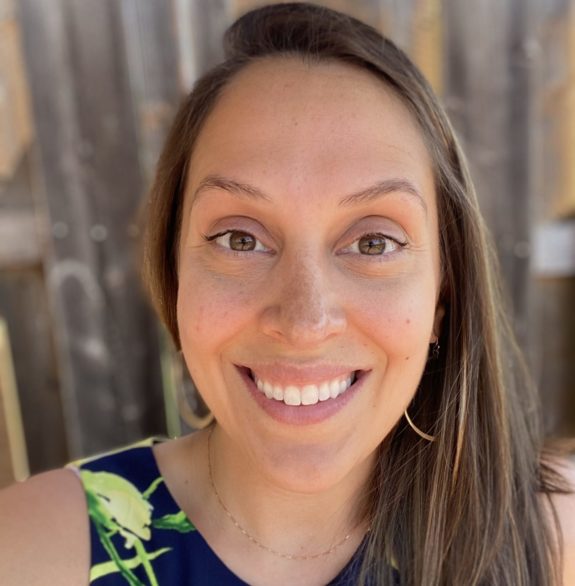
Health care isn’t magic, but some aspects of the field can certainly feel that way. Take it from Keri Colio, AuD, CCC-A, cochlear implant coordinator and clinical audiologist with Rady Children’s Hospital-San Diego’s Audiology Department: Her work revolves around helping children with hearing differences or hearing loss experience sound, often for the very first time. In honor of Better Hearing and Speech Month, and of all the awesome things Keri does for Rady Children’s and her patient families, we took some time to get acquainted with this wonder-worker (and recently awarded Rady Children’s Employee of Excellence).
What is a typical day in your role like? Read More...
Hearing/Speech, Staff Stories
audiology, cochlear implants, speech and hearing, staff stories
May 5, 2021
Mental Health Needs More Than a Moment
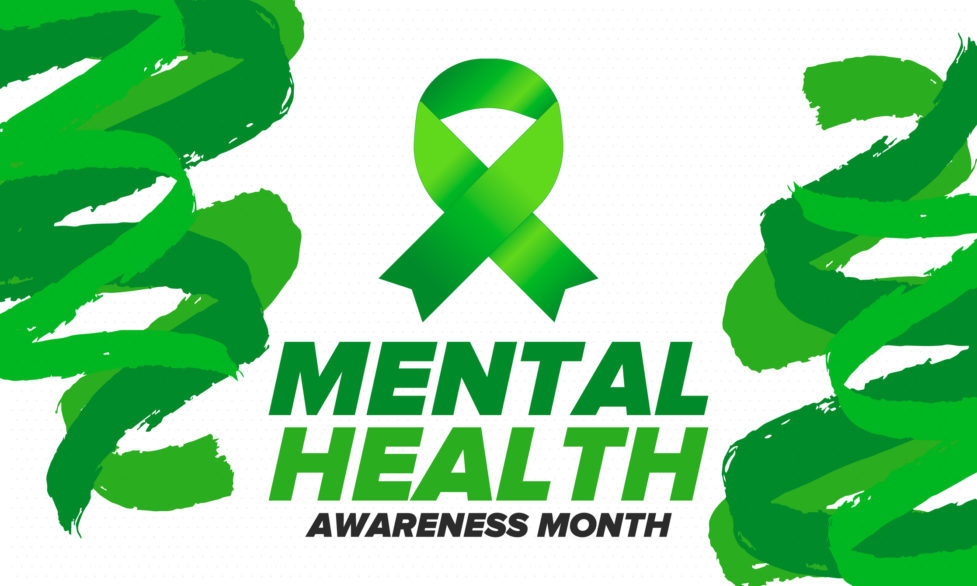
by Anne Bird, MD
May is National Mental Health Awareness Month: a 31-day reminder of the importance of paying attention to our own mental wellness, and the emotional well-being of those around us. The first full week in May is further dedicated to the mental health of our children, supporting seven days of renewed commitment to improving the overall health and wellness of our nation’s children. But seven days, or even 31 days, is not enough. In this era of pervasive pandemic stress and social and political unrest, we need to expand our understanding of mental health, re-commit to nurturing a healthy mind in ourselves and others on a constant basis, and bake mental health awareness into our daily lives. Read More...
Behavioral Health, Staff Stories
behavioral health, family mental health, mental health, Mental Health Awareness Month, mental wellness, pediatric mental health, promoting mental well-being
May 3, 2021
Fun in the Sun, Safely
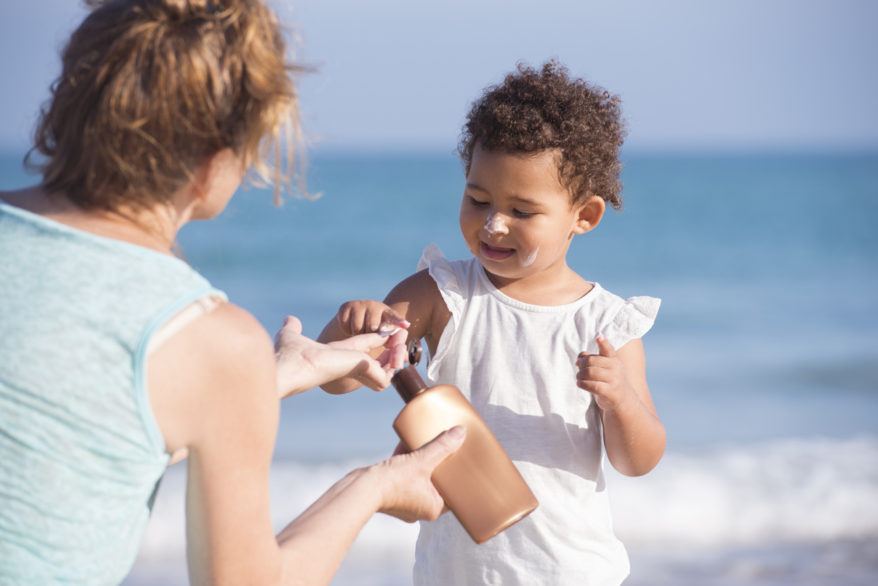
Soaking up the sun can be beneficial to well-being, from turning up levels of serotonin (think “happiness hormone”) to providing much of the vitamin D we humans need to be healthy. But, as the old adage saying goes: everything in moderation. Excessive sun exposure can be harmful, with skin cancer being a serious potential side effect, and damage begins accumulating in infancy and childhood. “In the United States, up to half of a lifetime’s worth of ultraviolet exposure happens before the age of 20,” says Susan Boiko, MD, a dermatologist at Rady Children’s Hospital-San Diego and an associate clinical professor for the Departments of Dermatology and Pediatrics at UC San Diego School of Medicine. “When UV light goes through our skin, it can affect our DNA and increase our chances of developing skin cancer later in life.”
More immediately, although skin cancer in childhood or adolescence is relatively rare, cases do happen. According to a 2017 article published in Pediatric Health, Medicine and Therapeutics, approximately one in a million children ages 1 to 4 develop melanoma, jumping to about one in 100,000 for teens ages 15 to 19. In addition, cases have been on the rise from the 1970s forward, increasing between 2 and 3 percent each year. Melanoma, which can manifest from an existing mole or appear as a new dark spot on the skin, “has the most likely potential for metastasis, or spreading beyond the local tissues,” Dr. Boiko explains. Along with it, the most common types of skin cancer are the following: Read More...
Dermatology, Safety
childhood sun safety, dermatology, family sun protection, pediatric dermatology, skin cancer, skin cancer prevention, sun safety, sunscreen
April 26, 2021
Is COVID-19 Increasing the Rate of Accidental Drug Ingestion in Young Children?
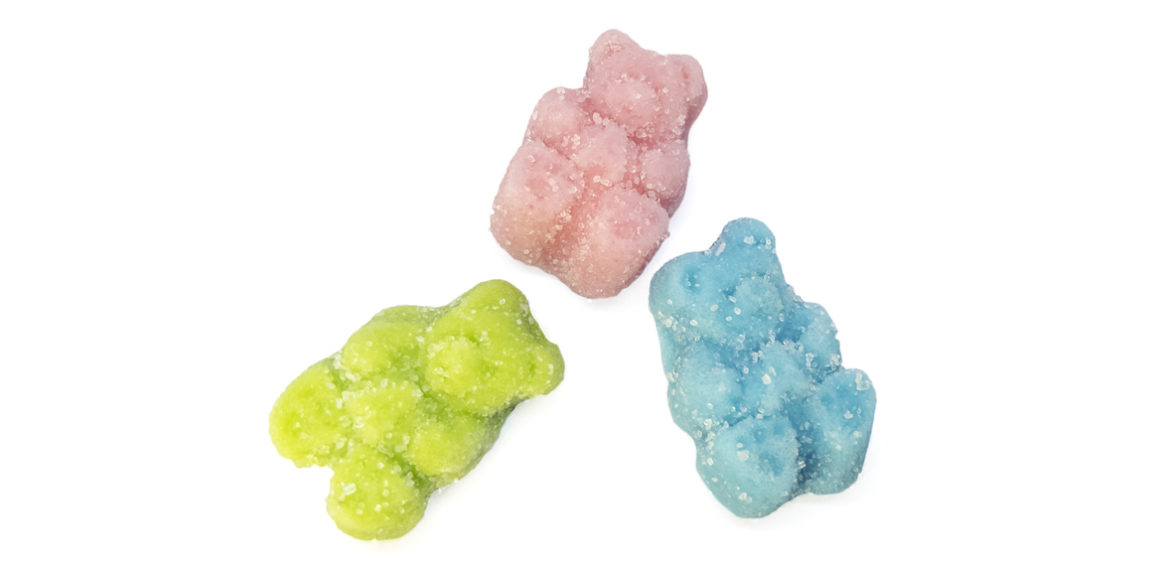
The rates of young children accidentally ingesting illicit substances has been on the rise in recent years. This is in part due to increased opioid use and a broadening of states permitting legal cannabis. However, as the COVID-19 pandemic and subsequent stay-at-home orders came into play, Natalie Laub, MD, a child abuse pediatrician at Rady Children’s Hospital-San Diego and an assistant clinical professor at University of California San Diego School of Medicine, noticed added stress on this troubling trend.
To better understand the relationship between the pandemic and accidental ingestions, as well as work toward a solution, Dr. Laub and her research colleagues examined statistics from states with standalone pediatric hospitals. The result: Since March 2020, drug-related hospitalizations in children under 5 increased by more than 20% nationwide. At Rady Children’s, rates climbed by 14%. “20% is the average,” emphasizes Dr. Laub. “In some hospitals, increases have been above 30%. While we still need to collect more data over time to determine the long-term effects of COVID-19 on illicit ingestions in children, we saw a significant jump from previous data in April and May 2020, and thus far, numbers remain higher than years prior.” Read More...
COVID-19, Safety, Staff Stories
accidental drug ingestion, accidental drug ingestion and children, fentanyl safety, household safety covid-19, thc safety
March 30, 2021
Getting to Know: Sandy Mueller, LCSW, Senior Director of Behavioral Health Services
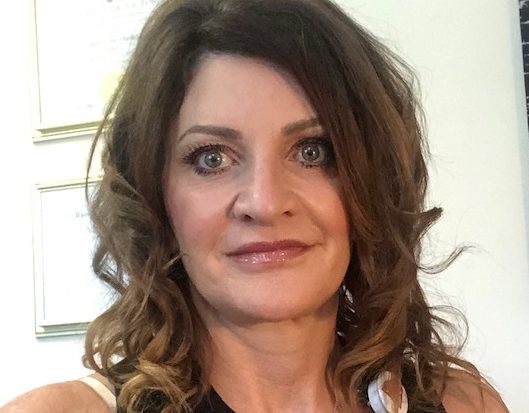
Mental well-being has increasingly become a major focus in our conversations about overall health, and for Sandy Mueller, LCSW, senior director of Behavioral Health Services at Rady Children’s Hospital-San Diego, that’s a very good thing. Our whole-child approach means the team supporting children includes a growing list of care providers, including pediatricians; psychologists, psychiatrists and counselors; nurses; child life specialists; case managers; recreational therapists; and social workers. Working together, Sandy and this talented group take action to ensure the children and families in the communities we reach have ever-growing access to the behavioral care they need to reach their highest potential and healthiest peaks. We sat down with Sandy to learn more about her passion for her profession, her views on the future of mental health care, how she’d spend her dream vacation and much more. Keep scrolling to get acquainted with this incredible asset to Rady Children’s!
What inspired you to get into the behavioral health field? Read More...
Behavioral Health, Staff Stories
behavioral health, staff stories
February 19, 2021
Allergy Assurance: Rady Children’s Allergy-Immunology Expert Addresses COVID-19 Vaccine
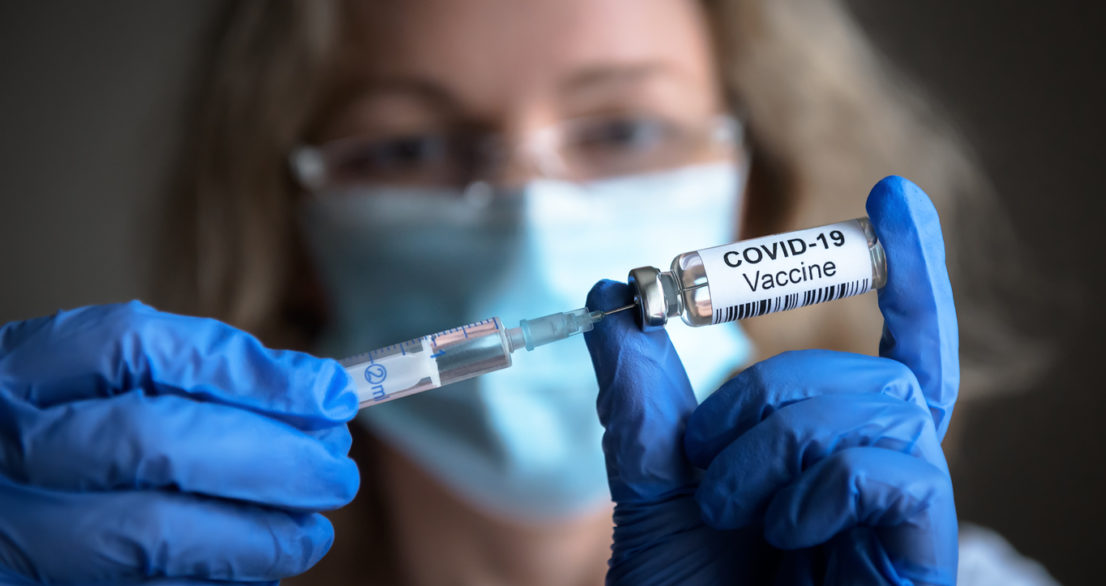
As several forms of the highly anticipated COVID-19 vaccine make their way into communities around the globe, the news is abuzz with updates — which, let’s face it, can sometimes be a bit overwhelming and confusing. Among hot topics are allergic reactions, leading to questions and concerns from many. However, “while anaphylaxis can occur after vaccination, it is very rare,” assures Stephanie Leonard, MD, director of the Rady Children’s Hospital-San Diego Food Allergy Center and an associate clinical professor for the Division of Allergy-Immunology-Rheumatology within the UC San Diego School of Medicine Department of Pediatrics.
To help put those considering the vaccine at ease and to support area health care providers through vaccine allergy education, Dr. Leonard and 11 fellow allergist-immunologists from UC San Diego Health, Sharp HealthCare, Kaiser Permanente and Naval Hospital Camp Pendleton have formed the San Diego COVID-19 Vaccine Allergy Group. “Our main objective is to be a resource for the county and our community when it comes to issues of possible allergy surrounding the mRNA COVID-19 vaccines,” explains Dr. Leonard. “The group started after news from the UK reported two severe allergic reactions (e.g., anaphylaxis) after administration of the mRNA COVID-19 vaccine when they started mass vaccinations. The UK Medicines and Healthcare Products Regulatory Agency recommended that ‘Any person with a history of anaphylaxis to a vaccine, medicine or food should not receive the Pfizer-BioNTech vaccine.’ This was misleading since there are no food or latex allergens in the vaccines. In addition, the vaccines are not contraindicated in people with a history of allergy to oral medication. There are precautions for people who have a history of allergy to other vaccines and injectable medication, but even most of these people can still get the vaccine safely with additional monitoring.” Read More...
Allergy/Immunology, COVID-19, Vaccines
coronavirus, covid-19, COVID-19 vaccine, COVID-19 vaccine reactions, vaccine allergies, vaccine safety
December 23, 2020
Helping Children Find Meaning in a Pandemic: Questions for a Holiday Reflection
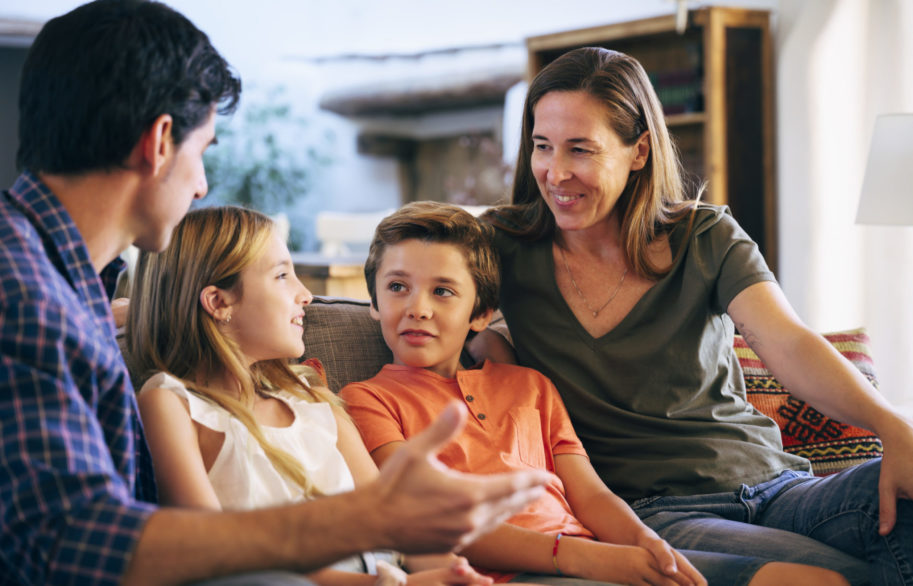
by Willough Jenkins, MD
As the year turns over to 2021, it is a time for natural reflection, and I suspect many families will be having conversations about the COVID-19 pandemic. It is tempting when discussing the hardships of the pandemic to immediately jump to encouraging children to “look on the bright side” or remind them of those less fortunate. This well-intentioned idea is to focus on the positive, but this strategy can feel like it minimizes their experience. It is important to acknowledge emotions, and to hear the struggles and the pain. Generations of youth have gone through adversity; there have been global wars, pandemics and famine, and then there have been individual crises of trauma and adverse childhood events. Children are resilient. Understanding and finding meaning in difficult situations is a skill that promotes that resilience and allows us to persevere in difficult times. Read More...
COVID-19, Staff Stories
coronavirus, coronavirus activities, covid-19, family activities
December 15, 2020
Getting to Know: Hikosuke Leon, Environmental Services Attendant and Relief Lead
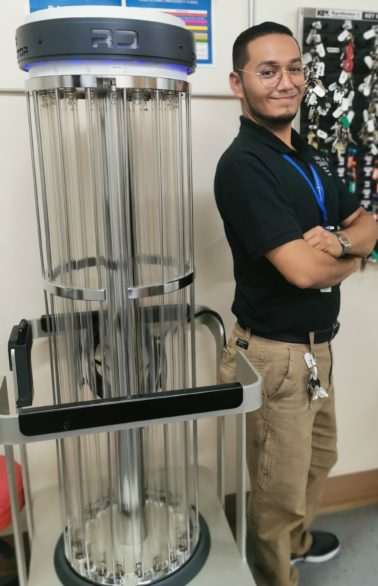
Photo taken before COVID-19 pandemic
Keeping Rady Children’s Hospital-San Diego’s hundreds of rooms and plentiful hallways clean is no small task, but the EVS team handles it like the professionals they are. Following specialized training and using specific chemical and disinfecting procedures (they even have a manual outlining steps and products), team members help to prevent the spread of infection and keep all of the Hospital’s patients, visitors and staff safe. Especially during high-risk times like these, EVS workers are among some of our greatest health care heroes, and they come in each day knowing their work is essential and even life-saving. One such worker, Hikosuke Leon, an EVS attendant and relief lead, took a few minutes from his busy schedule so we could learn a little more about his role, how EVS works and some of his day-off favorites. Read More...
Environmental Services, Staff Stories
December 11, 2020
Rady Children’s Expert is the Lead Author of Global-Reaching Position Paper on Weight and Nutrition in Childhood and Adolescence

Maya Kumar, MD, FAAP, FRCPC, a board-certified adolescent and young adult medicine pediatrician with Rady Children’s Hospital-San Diego and an assistant clinical professor with University of California San Diego School of Medicine, is on a mission. Along with nine colleagues from the Society for Adolescent Health and Medicine, for which she chairs the Nutrition Committee, Dr. Kumar is aiming to update fellow pediatric care providers’ toolkits for working with young patients on weight, exercise, nutrition and eating habits. In “Preventing Nutritional Disorders in Adolescents by Encouraging a Healthy Relationship with Food,” a new position paper published in the latest edition of the Journal of Adolescent Health, lead author Dr. Kumar and her collaborators discuss establishing positive relationships with food and physical activity and taking a whole-child approach to nutrition and exercise recommendations, using seven defined positions intended to prevent both weight problems and eating disorders. Here, Dr. Kumar gives us a look inside their research process; highlights the paper’s important messaging; and provides guidance to parents and caregivers on how to raise healthy, body-positive children and adolescents.
What was the catalyst for this position paper, and how did you and your colleagues come together to develop it? Read More...
Adolescent and Young Adult Medicine, Nutrition
Adolescent and young adult medicine, adolescent health, body image, mental health, nutrition, nutrition disorders, young adult health
December 10, 2020
How Gratitude Can Influence Kids’ Well-Being

Even if our lives are largely fulfilling, it’s not unusual to have moments where it’s tough to feel that way — and the same goes for kids, too. However, studies show that expressing gratitude can have benefits such as supporting physical and mental well-being, boosting self-esteem, and enhancing sleep quality; all of which contribute to happier, healthier children.
Gratitude is a big concept, but teaching it to children needn’t be complicated, explains Nora Camacho, MA, BCBA, LMFT, a behavior specialist at Alexa’s Playful Learning Academy for Young Children. “The most important thing that we learn again and again as early educators is that children learn about relationships by watching adults around them,” she says. “The best way to ensure that your child will emulate a particular characteristic is to model it yourself, and to provide children with an explanation for your choices when you know they are watching.” Camacho offers an example: “Did you know that our neighbor, Ms. Barbara, closed our garage door for us when I forgot to do it? I’m going to write her a note to thank her. In our family, it’s important that we take the time to let others know when they have done something that’s really helpful to us.” Read More...
Behavioral Health, Child Development
behavioral health, compassion and kids, gratitude and kids, mental health, mind-body connection, pediatric mental health
October 13, 2020
Fun, Kid-Friendly Fall Recipes

San Diego may be a bit behind in terms of temperature, but fall is officially here! This year, while some favorite seasonal activities can safely continue (pumpkin patch visit, anyone?), many families are opting to keep celebrations within their own homes. Whether you’re craving a comforting meal or the beloved taste of pumpkin spice, or want to whip up some delightfully spooky treats, the Rady Children’s Hospital-San Diego Clinical Nutrition team has gathered up some simple, healthy recipes the whole family will want to take part in prepping … and, of course, eating. Enjoy!
Sweet Potato Cream Pie: Vanessa Aldaz, MPH, RD, CDE Read More...
COVID-19, Nutrition
covid-19 activities, fall, fall activities, fall activities for kids, family activities, Halloween, healthy baking, healthy meals, nutrition
September 14, 2020
Collaborating Against COVID-19

The world has learned a great deal about COVID-19 since the pandemic began, but a significant gap remains between what we know and what we need to know to fully prevent, treat and work to defeat this newfound viral foe. Medical and scientific research is the driving force behind progress, and experts from Rady Children’s Hospital-San Diego and our partners at University of California, San Diego have answered the call to action by forming the SARS-CoV-2/COVID-19/MIS-C Research Work Group.
This 28-person collaborative; led by Joey Principato, director of clinical research at Rady Children’s and Christina D. Chambers, PhD, MPH, vice chair of clinical research at Rady Children’s and vice chair of clinical research and a professor for the Department of Pediatrics at UC San Diego School of Medicine; unites investigators and research administrators from areas including infectious disease, neurology, emergency medicine, neonatology, nephrology, urology, critical care, general surgery, gastroenterology, hematology/oncology and general pediatrics. While the group’s studies are diverse, their overall goal is singular: to exchange resources, ideas and findings across COVID-19 studies in order to streamline efforts, maximize results and bring quality solutions from concept to reality as quickly as possible. “As the pandemic ramped up, our investigators were starting to find their niche in the study landscape, and we quickly realized that with few pediatric patients with COVID-19, and more and more studies beginning, we needed to make sure that everyone was on the same page,” explains Cassidy Callahan, clinical research navigator at Rady Children’s. “Leadership saw the need to share new projects and samples in order to maintain a positive patient experience and support as much research as possible in this critical area.” Read More...
COVID-19, Research and Innovation, Staff Stories
coronavirus, coronavirus research, covid-19, pediatric research, research collaborative, UC San Diego, UC San Diego School of Medicine
August 19, 2020
Screen Time Smarts
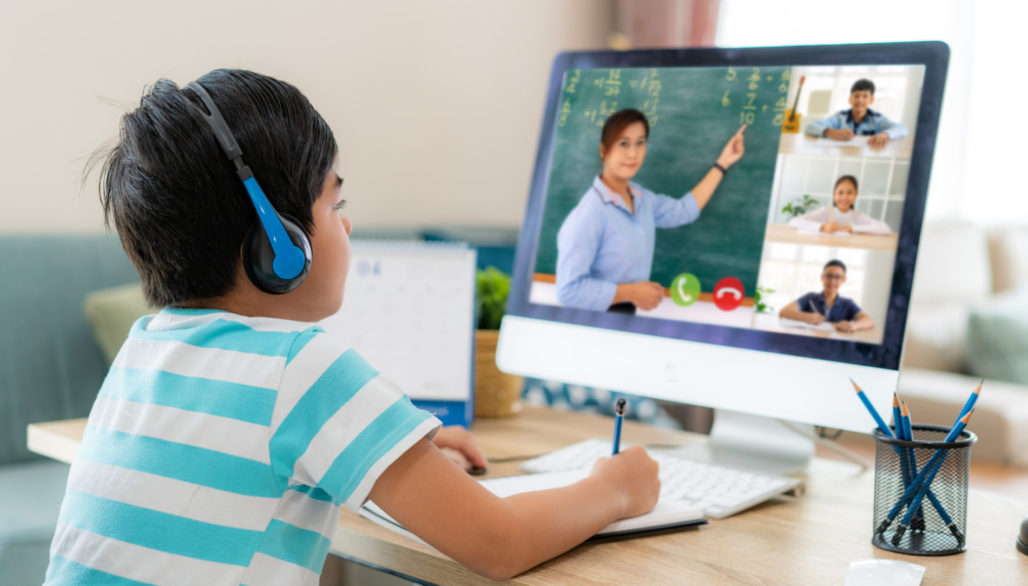
Between working, striving to maintain routines and staying social, most of us are spending more time with our digital devices than ever. As school ramps up for the year in a largely online environment, kids and teens are no exception. Along with a different take on education, this approach to learning is introducing something else to many children: new or increased dry eye and eye strain symptoms. “We’ve been hearing lots of questions and concerns about screen time and its effects on the eyes recently,” states Kim Duong, OD, MS, FAAO, an optometrist with Rady Children’s Specialists of San Diego’s Division of Ophthalmology. “In general, kids already spend a great deal of their time with screens, and our new reality has bumped up their consumption significantly.”
“We don’t blink as often as we should when looking at digital devices, which causes our eyes’ natural tear film to evaporate,” Dr. Duong continues. “As a result, more screen time links to dry, irritated eyes for many of us.” It also correlates to eye strain, which can cause a range of symptoms including discomfort, headaches, watery eyes and even pain in the neck or shoulders. Read More...
COVID-19, Ophthalmology
blue light, covid-19, Division of Ophtalmology, eye exams, eye health, eye strain, ophthalmology, screen time
August 11, 2020
Sleep in Times of Uncertainty
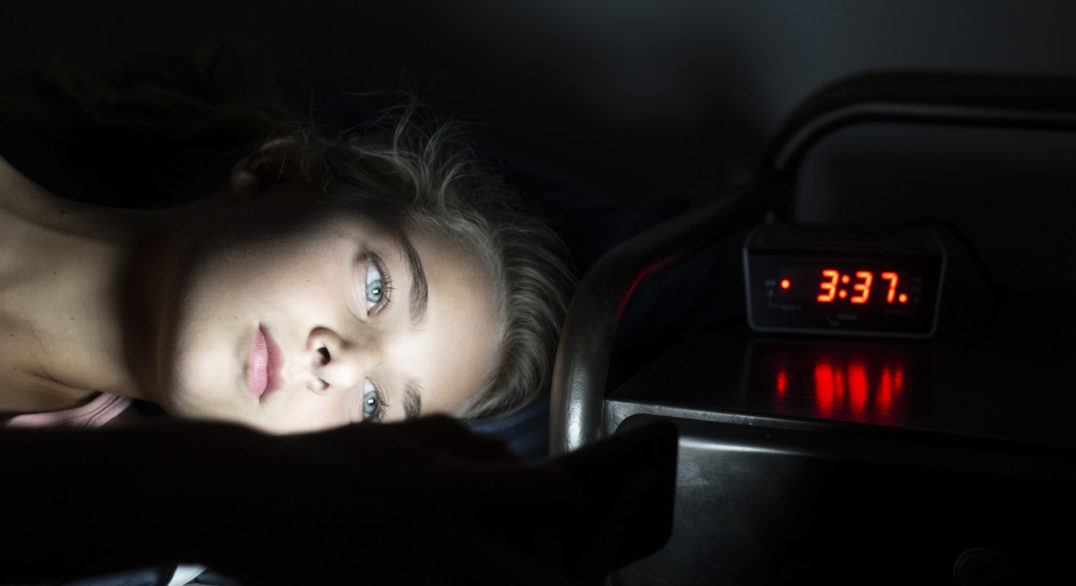
by Willough Jenkins, MD
When our children’s typical lives are disrupted, it is important to return to basics to create structure and a sense of control. Even if younger children may not be directly aware of the details of the pandemic or the movement against racial injustice, these instances have influenced day-to-day routines for many, along with the behavior of adults around them. This type of change can lead to more acting out, irritability, anxiety and depression in children and youth. A key component of well-being is sleep, and by ensuring children get enough sleep, we as parents and caretakers can help them cope with stress. In addition, sleep creates a structure to the day, which is comforting and is a known variable amidst newer instability. Read More...
COVID-19, Sleep
kids and sleep, mental health, pediatric mental health, sleep, sleep for kids, sleep hygiene, sleep tips for kids, sleep tips for teens, teens and sleep
August 3, 2020
At-Home Activities to Help Kids Cope with COVID-19 Isolation (While They Also Have Fun)

by Maggie Mayo, CCLS, and Carissa Menard, CCLS
As we move forward and continue to embrace these difficult times thought the COVID-19 pandemic, keeping our minds occupied and our emotional well-being attended to can be challenging for all of us, including kiddos. As child life specialists, our job is to make the hospital experience less stressful for children of all ages and their families, as well as create experiences that cultivate joy and resilience. Below, we’ve outlined instructions for some of our favorite therapeutic activities so you can complete them at home with your kids. These will help promote emotional expression, decrease feelings of isolation and strengthen the ability to connect during and after the pandemic. Read More...
Child Life, COVID-19
certified child life specialist, child life, coping, coronavirus, coronavirus activities, covid-19, emotional wellness, mental health
June 19, 2020
Fun and Motivating Ways to Keep Kids Moving

by Danni Leonard, CCLS; Marie Osthimer, CCLS; and Joseph Remaley, LCSW
While we’re all at home more than we’re used to, it’s more important than ever to keep your kids engaged and active. There are many benefits to exercise, including amplifying concentration, lowering stress and improving health. Below, we’ve outlined a few activities that are fun, motivating and simple to carry out inside or in your family’s yard. Read More...
Child Life, COVID-19
certified child life specialist, child life, coronavirus, coronavirus activities, covid-19
May 29, 2020
Take the Compassion, Connection and Control Challenge
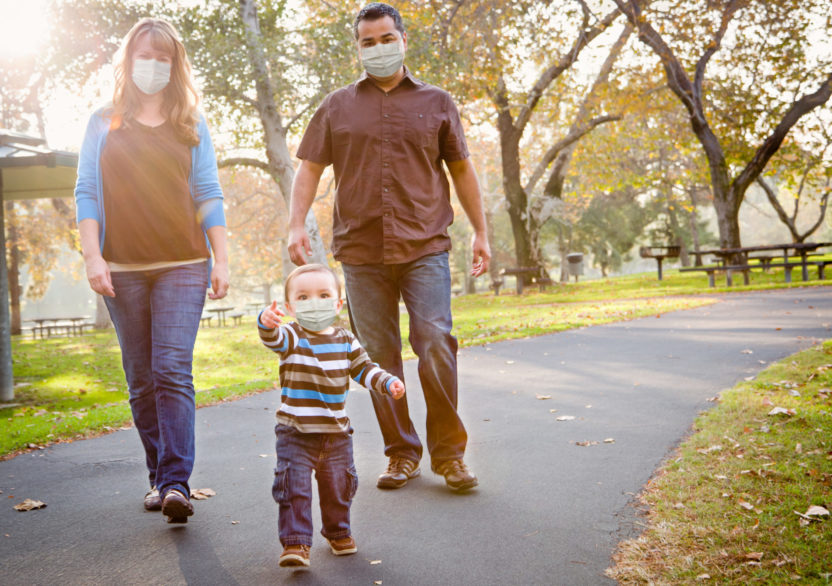
by Desiree Shapiro, MD
COVID-19 has affected all of our lives and challenged us in various ways. How do we support one another and cultivate our resilience amidst the chaos? Here are three C’s to consider incorporating into your daily routine and sharing with your children and family today. Read More...
Behavioral Health, COVID-19
coronavirus, coronavirus activities, covid-19, family relationships, friendship, mental health, social connection
May 26, 2020
Structuring Time Spent at Home for Children of All Ages

by Erin Carpenter, CCLS; Aislinn Mooney, CCLS; and Madeline Zinngrabe, CCLS
It can be challenging to keep a schedule and routine at home during this uncertain time. You may see regressive or withdrawn behavior when your child is trying to adapt and manage their feelings and changes to their routine. Keeping your child’s environment structured and consistent can help them cope with the changes they are experiencing in their daily life. As child life specialists, our daily work at Rady Children’s Hospital-San Diego highlights the importance of normalization in a clinical setting, but much of what we do can be applied to home life, too. Read on for some examples of routines and tips on structuring time at home with your children and teens, and stay tuned for additional Kite Insights posts on staying active, engaged and emotionally sound. Read More...
Child Development, Child Life, COVID-19
certified child life specialist, child development, child development at home, child life, coronavirus, coronavirus activities, covid-19, home activities, shelter in place
May 15, 2020
Supporting Whole-Family Mental Health During COVID-19

Whether you’re 5, 35 or 95, sheltering in place and social distancing can be challenging. With consistent feelings of uncertainty, interruptions to routines and activities, and limitations on seeing friends and family, it’s no wonder reports of effects on mental well-being are on the rise. Recent surveys indicated young adults are feeling more anxious and fearful than in their pre-pandemic lives, and symptoms of depression have gone from appearing in a 37 percent baseline of respondents to appearing in 49 percent [1].
“Social isolation affects us all, but adolescents can be particularly vulnerable as social interactions are an essential part of development,” notes Benjamin Maxwell, MD, medical director of inpatient psychiatry and interim director of child and adolescent psychiatry at Rady Children’s Hospital-San Diego and an assistant professor for the Department of Psychiatry within University of California San Diego School of Medicine. Read More...
Behavioral Health, COVID-19, The Chadwick Center for Children & Families
coronavirus, covid-19, mental health, pediatric mental health, social distancing, suicide prevention
April 6, 2020
A Valuable New Tool for Patients on the Autism Spectrum

Imagine being a child checking into a hospital for a major surgery or standing by for an appointment in a physician’s busy waiting room. Pretty overwhelming, right? Now, imagine that environmental stimuli such as bright lights, loud sounds and bustling crowds cause you significant distress, or that you’re unable to speak to ask questions about where you are and what’s going on. Your stress level probably just grew immensely. For many children on the autism spectrum, that’s reality, making health care facilities potentially troubling or scary places.
With about 20,000 visits with children on the spectrum occurring at Rady Children’s Hospital-San Diego and its satellite locations each year, Lisa Miller, manager of clinical informatics and central support on the patient care services team, was hearing many accounts of kids having a tough time during visits, especially in areas such as surgical services and the emergency department. Along with the obvious stress on patients and their loved ones, this was often contributing to escalated situations, longer or canceled appointments and interruptions in care, and a decrease in clinicians’ self-confidence in supporting the needs of children with ASD. Read More...
Developmental Services, Safety, Staff Stories
autism, autism spectrum, autism spectrum disorder, autism support, Developmental Services, emergency medicine and autism, health care and autism
March 18, 2020
Talking to Preschool-Age Children About COVID-19
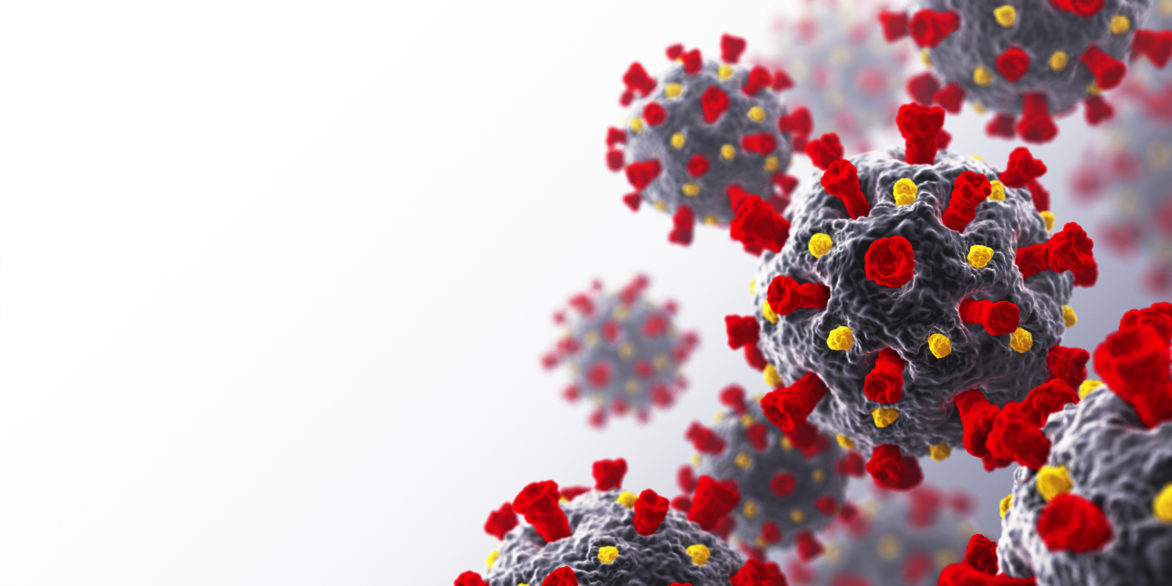
by Lorri Bauer, MS, and Natalie Elms, MA
The novel coronavirus pandemic is an unprecedented and unsettling event for people of all ages, and for small children, its ever-changing nature and intense media coverage can be hard to comprehend — and even scary. Below are a few guidelines to help keep preschool-age kids calm, informed and feeling safe through this uncharted territory. Read More...
Infectious Diseases
child anxiety, children's health, coronavirus, covid-19, handwashing, pandemic
March 2, 2020
Getting to Know: Carlos Morfin, Action Station Chef
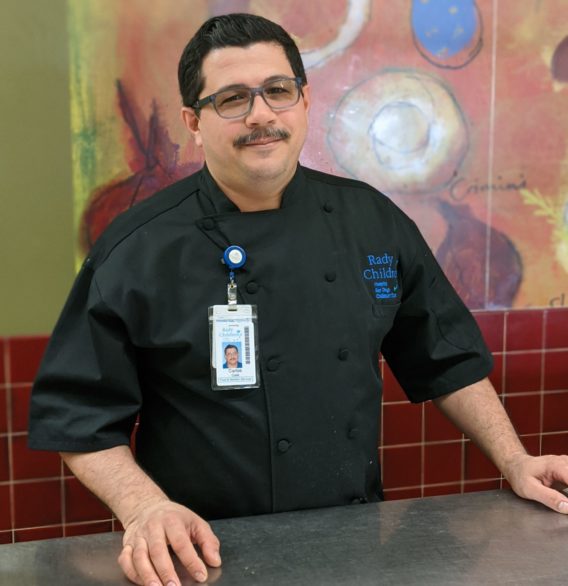
It’s been said that a good meal feeds the soul as well as the stomach, and for Carlos Morfin, one of the chefs behind the action stations in the Rady Children’s Hospital-San Diego cafeteria, that sentiment drives everything he does on the job. While our clinical staff get lots of (well-deserved) recognition for their contributions to patient healing and family well-being, Food Services team members like Carlos play a major part as well, offering a friendly face and a comforting, nutritious meal when they’re needed the most. Plus, without Carlos and his colleagues’ cooking, those health care pros wouldn’t have the fuel to do their best work on the Hospital floor! Read on to learn more about this culinary master.
What is a day on the job like for you? Read More...
Food Services, Staff Stories
cafeteria, Food Services, nutrition, staff stories
February 3, 2020
Fire Drill: Rady Children’s-Based Research Team Explores the Effects of Wildfires on Pediatric Respiratory Health

Around the world, and even more so in climates such as California’s, wildfires are an unfortunate reality. Along with threatening human and animal lives and wreaking havoc on communities, fires spew high levels of particulate matter — inhalable pollution from sources including dirt, soot and smoke — into the air. Influxes in particulate matter can lead to respiratory irritation, even to the point of causing acute, severe illness requiring hospitalization.
When Sydney Leibel, MD, MPH, a pediatric allergist and immunologist at Rady Children’s Hospital-San Diego and an assistant professor of pediatrics at University of California San Diego School of Medicine, considered the intense and frequent wildfires California has seen over the past few years, he had two key questions in mind: how have these fires affected the health of pediatric patients living in fire zones, and how can the scientific and medical community advance awareness about preparing for future fires? Working with a multidisciplinary eight-person team from Rady Children’s, UC San Diego Scripps Institution of Oceanography and the San Diego Air Pollution Control District, Dr. Leibel launched a study to seek answers and enact change for a healthier San Diego community. Read More...
New at Rady Children's, Research and Innovation, Staff Stories
fire safety, respiratory health, respiratory hospitalization, respiratory illness, wildfire safety
January 16, 2020
Understanding Birth Defects, Risks, and Screening and Prevention Options

Whether a woman is expecting her first baby or has welcomed multiple children into the world, her pregnancy involves many considerations, from the light — such as picking a name and plotting out the perfect nursery — to the serious — such as getting recommended care and screening for birth defects. “Even with something that isn’t life-threatening, early intervention during pregnancy helps improve outcomes for babies and mothers,” explains Holly Casele, MD, chief of San Diego Perinatal Center, the maternal-fetal medicine division of Rady Children’s Specialists of San Diego. Given the fact that a baby in the United States is born with some form of birth defect every four-and-half-minutes — working out to about 120,000 per year or one in every 33 births[1] — early-stage and ongoing prenatal care can have significant, positive effects on a very common set of health conditions.
The range of defects is vast, and include those linked to infections or toxin exposures during pregnancy, such as fetal alcohol spectrum disorders; those linked to genetic mutations, such as cystic fibrosis, sickle cell disease or Fragile X; those linked to abnormal chromosomes, such as Down syndrome; and those affecting structure without ties to specific genetic or chromosomal cause[2], [3]. However, says Dr. Casele, the term “birth defect” can be open to medical interpretation. “Clearly, a complex heart defect that requires open heart surgery after birth would be considered a birth defect. But what about a small muscular ventricular septal defect, or ‘hole in the heart,’ that is expected to close on its own and have no impact on the baby’s health? Although this type of defect can occur in otherwise typical babies, it also occurs in babies with Down syndrome or certain genetic syndromes. Therefore, interpreting the significance of certain findings requires careful consideration of the entire clinical picture: the patient’s personal history, testing and risk factors.” Read More...
Child Development, Infant Health, Maternal-Fetal Medicine
birth defect prevention, genetic screening, infant health, maternal-fetal health, maternal-fetal medicine, perinatal care, prenatal care
January 7, 2020
True Blue: Is Blue Light Really Bad for Eyes?
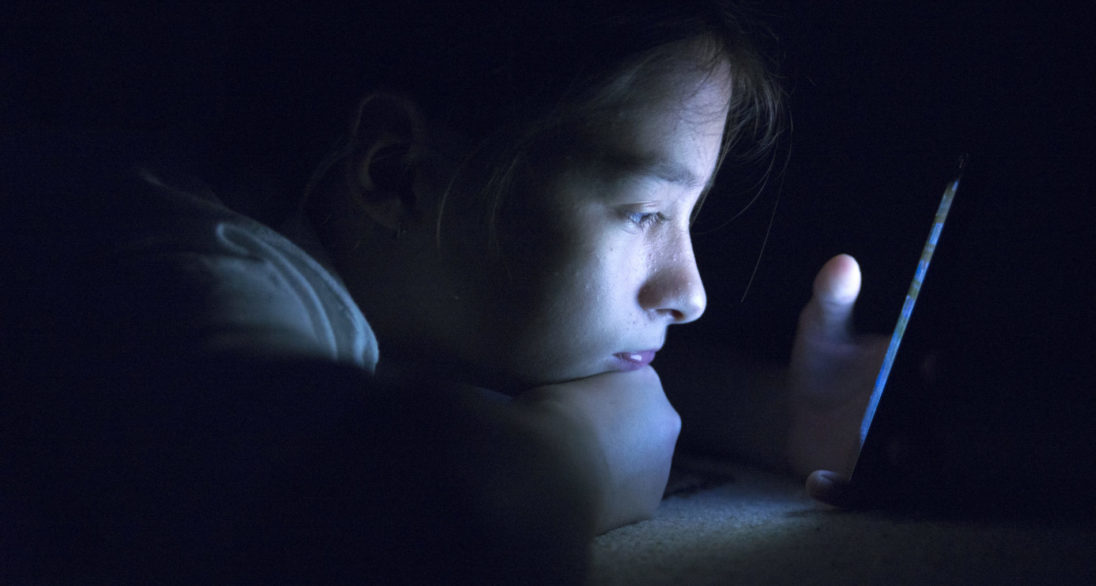
Blue light is a color-tinged form of light that comes from many sources, including sunlight. With that said, in day-to-day life, it’s everywhere. But recently, you may have noticed increased attention on the blue light that comes from our beloved digital devices — think smartphones, tablets, TVs, computers and e-readers — and its potential to damage our eyes.
Although the medical and scientific community are still investigating blue light and its effects on our health, thus far, the high level of alarm — particularly when it comes to our eyes — is unwarranted, say Rady Children’s Specialists of San Diego Division of Ophthalmology physicians Shagun Bhatia, MD, MSCR, and Kim Duong, OD, MS, MPH, FAAO. Read on for their help with separating blue light myth from fact, as well as guidance on minimizing eye troubles from screen time. Read More...
Ophthalmology
blue light, digital safety for kids, Division of Ophtalmology, eye safety, eye safety for kids, ophthalmology, technology
December 27, 2019
Seven Steps to Teaching Children Body Autonomy
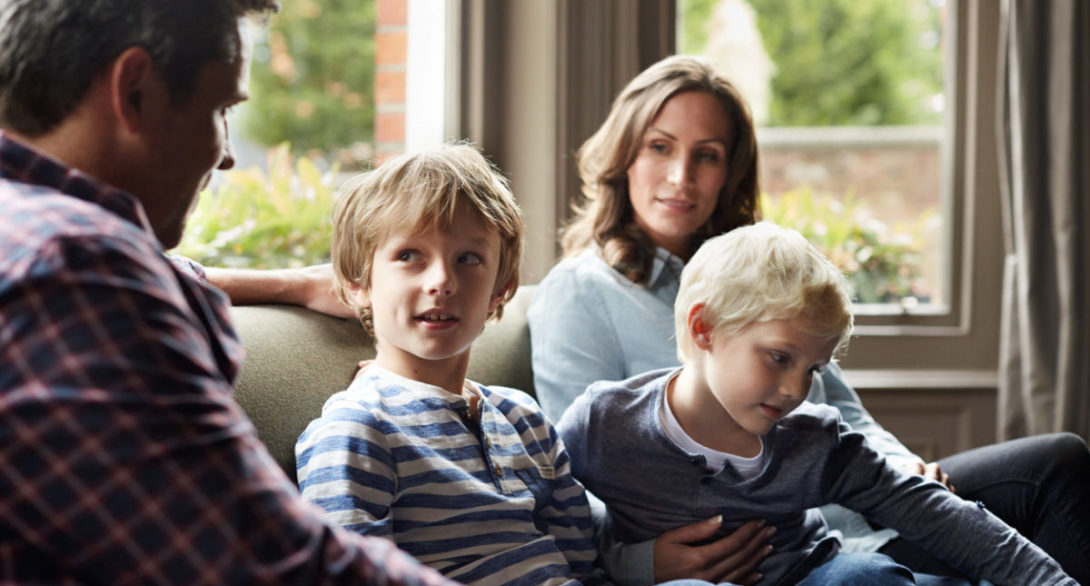
by Shalon Nienow, MD
Body autonomy is the right for a person to govern what happens to their body without external influence or coercion. This is an important concept for all children to be taught and to understand. A child who knows that they are in control of their body is less likely to fall victim to sexual abuse, sexual assault and later intimate partner violence. They are also more likely to disclose any abusive events that should happen to them. The idea of abuse happening to our children is very difficult to accept, but the reality is that it happens all too frequently. Statistics show that one out of every three females and one in every 20 males will fall victim to unwanted sexual contact by their 18th birthday[1]. The people that will perpetrate this violence, in most cases, is someone that the child knows and trusts. Read More...
Safety, The Chadwick Center for Children & Families
body autonomy, Chadwick Center, Chadwick Center for Children & Families, child abuse prevention, child safety, teaching body autonomy
December 18, 2019
How to Show Support for Loved Ones in the Hospital During the Winter Illness Season
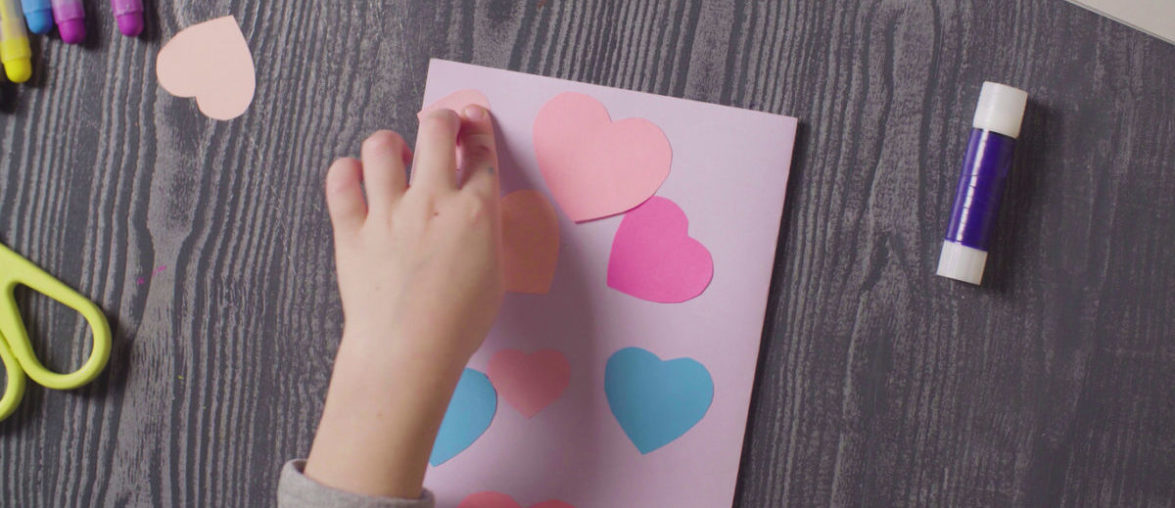
by Savannah Sambrano, marketing and communications intern and gift shop clerk
As winter rolls around, the season of giving and gathering is upon us, and while receiving a shiny new gift can be exciting, one might not be as thrilled to become sick from those around them. Considering many of the children receiving care at Rady Children’s Hospital-San Diego have extremely vulnerable immune systems, controlling the spread of potentially harmful illnesses is a primary concern. After reviewing scientific data concerning the rising rates of respiratory illnesses, influenza and other viruses in the Hospital and the surrounding community, the Rady Children’s Infection Control Department has taken action to limit the risk of transmission of these potentially contagious diseases throughout the Hospital. These are necessary in order to protect our patients and their families, staff, and other visitors. Read More...
Flu Information, Safety
cold season, flu season, patient safety, safety policies, visitation policies, winter respiratory virus
December 2, 2019
Sun Smarts: Protect Your Kids’ Eyes from Winter Rays

Many of us think of summer as primetime for ultraviolet light, the skin-burning, eye-damaging form of electromagnetic radiation the sun emits. But especially in places like sunny Southern California, UV rays don’t stop in their tracks just because the season changes, caution Shagun Bhatia, MD, MSCR, and Kim Duong, OD, MS, MPH, FAAO, physicians within Rady Children’s Specialists of San Diego’s Division of Ophthalmology.
“The sun can be very damaging to the eyes, but it’s actually quite common to see kids wearing sunglasses and hats less frequently or not at all during the winter,” comments Dr. Bhatia. “Particularly in our area, where people stay active and visit the beach all year long, or are taking day trips to the mountains to play in the snow, we encourage our patient families to maintain the precautions they use in the summer.” Read More...
Ophthalmology, Safety
eye safety for kids, ophthalmology, uv and eyes, uv safety, winter sports protection, winter sun protection
November 22, 2019
Intuitive Eating: Eat to Live or Live to Eat?

by Monica Wing, RD, CNSC, CLEC
Everyone gets caught up in daily routines and multitasking, making it difficult to stop and listen to what our body really wants and needs. Fueling the body with food is a necessity and is important for many crucial physiological and chemical processes, but eating should also be a pleasurable experience. Finding the right balance can be difficult, but some self-managed approaches can help. Read More...
Nutrition, Staff Stories
healthy thanksgiving, holidays with kids, intuitive eating, mindful eating, staff stories, thanksgiving eating, thanksgiving with kids
November 18, 2019
Why Should We Care About Antibiotic Resistance? A Q&A with George Liu, MD, PhD

In (fairly) recent history, it’s safe to say that one of the most revolutionary additions to the world of health care has been antibiotics. Designed to attack bacterial infections, antibiotics have made countless ailments that were once serious — or even fatal — simple and quick to overcome. However, with ease and efficacy has also come overuse, which, combined with bacteria’s natural ability to evolve, has led to an alarming problem: many types of bacteria are starting to outsmart antibiotics. What exactly does that mean for us as a society, and for the future of health care?
We asked George Liu, MD, PhD, chief of the Division of Infectious Diseases at Rady Children’s Hospital-San Diego and a lauded antibiotic-resistant bacteria researcher, to weigh in on this complex and quickly growing threat to public health. Read More...
Infectious Diseases
antibiotic resistance, antibiotic safety, prescription safety, resistant bacteria, resistant bacteria research
November 12, 2019
Getting to Know: Kim McNamara, RN, BSN, CDE — Diabetes Nurse Educator
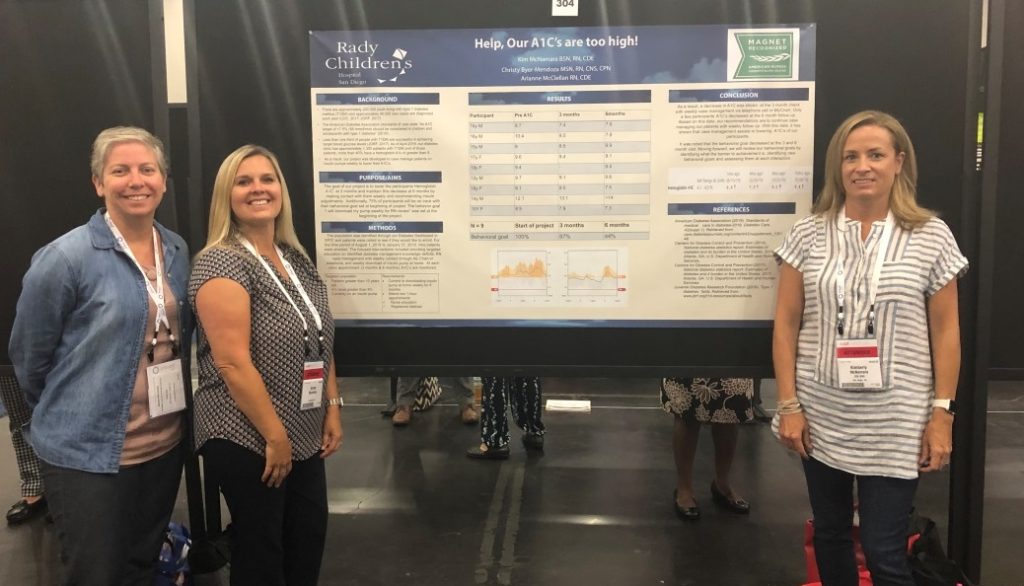
With proper care, type 1 and type 2 diabetes are generally manageable conditions. Even so, treatment options are vast and care plans can be complex — a lot to navigate for anyone, especially a child. In Rady Children’s Hospital-San Diego’s Division of Endocrinology/Diabetes, diabetes nurse educators like Kim McNamara, RN, BSN, CDE, (pictured on the far right with two of her teammates, Christy Byer-Mendoza, MSN, RN, CDE, and Ariane McClellan, RN, CDE) work with patients and their families to help make their unique diabetes experience as simple and stress-free as possible. Need to learn more about getting an insulin pump? Kim has you covered. Not sure how to handle your medication routine when going away from home for the first time? Connect with Kim. In recognition of all the important work Kim and diabetes nurse educators accomplish, and of American Diabetes Month, learn more about who Kim is — both as a professional and a human — in her own words.
What does a day in the life look like for you at work? Read More...
Endocrinology/Diabetes, Staff Stories
diabetes, diabetes awareness, diabetes care, diabetes educator, diabetes nurse educator, Endocrinology/Diabetes, staff stories
October 24, 2019
Actions You Can Take to Help Support Your Baby’s Safe Sleep
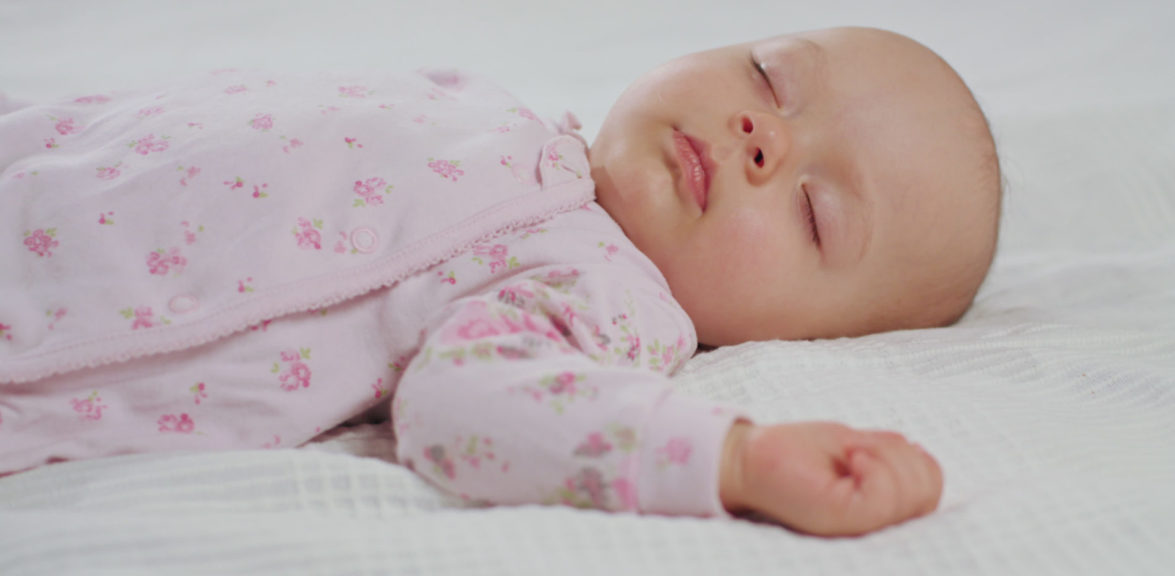
Sudden infant death syndrome is the the number-one cause of death in babies between a month and a year old, according to the Eunice Kennedy Shriver National Institute of Child Health and Human Development.
“In many, many instances, SIDS occurs because of internal causes that are impossible for anyone to control — for example, a genetic reason,” explains Rady Children’s Hospital-San Diego physician Daniel Hershey, MD. However, there are also a number of external causes that parents and caregivers can change in order to help reduce a baby’s risk. These include the following: Read More...
Center for Healthier Communities, Infant Health, Safety, Sleep
safe sleep, safe sleep for babies, SIDS, SIDS prevention, sleep
October 9, 2019
How Routine Depression Screenings Can Help Protect Kids

At Rady Children’s Hospital-San Diego, we believe in managing care for the whole child, which includes both their physical and mental health. While you can often see when children are suffering from an injury or illness, the signs of a serious mental health condition are often more difficult to pinpoint — especially in kids and teens who may be “expected” to go through emotional changes as part of growing up, or who may not be open to discussing their feelings with caregivers.
However, mental illnesses such as depression and anxiety are not things that one can simply grow out of, and mental health is a very real and significant issue for adolescents. For example Read More...
Behavioral Health
behavioral health, depression, depression guidelines, depression screening, mental health, pediatric mental health, psychiatry, psychology
September 16, 2019
Retraining the Brain Against Chronic Pain
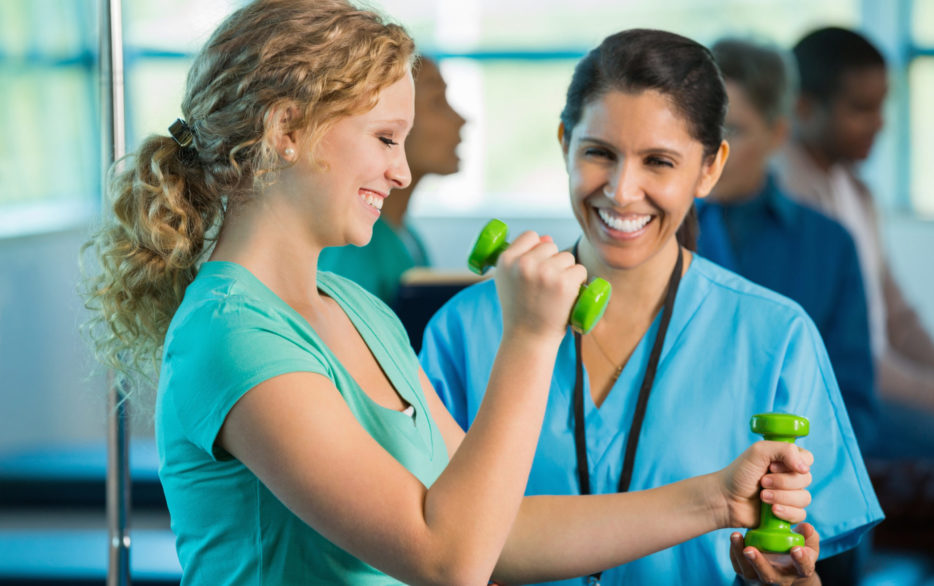
Though certainly not fun, the pain from cuts, bruises and other run-of-the-mill childhood injuries is typically short-lived. But a 2016 study released in the peer-reviewed journal Children[1] reports that for at least 20 percent of kids and adolescents worldwide, pain is a nearly ever-present part of day-to-day life.
When a child experiences chronic pain, their nervous system is distributing pain signals where they aren’t needed — either an initial injury or illness has already healed, or there is no clear biological source. This misfiring causes discomfort that can continue for weeks, months or years. “Chronic pain in kids can affect one area of the body, such as the head or a hand, or be far more widespread. For many children, their chronic pain becomes completely debilitating,” says Anke Reineke, PhD, director of the Children’s Specialized Hospital Chronic Pain Management Program at Rady Children’s Hospital-San Diego. “Often, kids have trouble regularly attending school or participating in activities, and some can’t sleep or even tolerate light skin contact because their pain is so severe.” Read More...
Chronic Pain and Pain Management, New at Rady Children's
Children's Specialized Hospital Chronic Pain Management Program, chronic pain, chronic pain care, chronic pain management, pediatric chronic pain, San Diego chronic pain, Southern California chronic pain
September 9, 2019
The Newborn Screening Program: Supporting a Healthier Start to Life
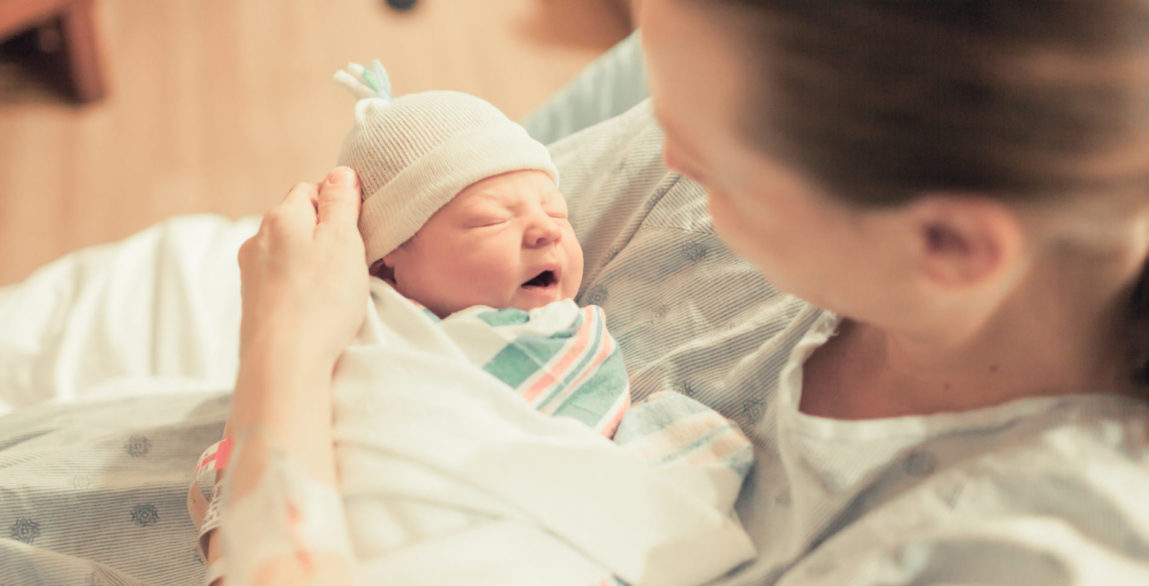
For babies born in California, one of the most important health assessments of their lives happens within two days of birth. Through the Newborn Screening Program, a division of the California Department of Public Health’s Genetic Disease Screening Program, infants are evaluated for more than 80 genetic disorders in order to support early health care intervention and to reduce or prevent adverse effects on a baby’s long-term health. Since starting in 1966 to screen for one disorder, the GDSP has continuously evolved the program to incorporate conditions that are newly discovered or increasingly affect the population — for instance, in 2020, the assessment will start evaluating for spinal muscular atrophy. Although hospitals, birth centers, private midwives and county registrars must help ensure this mandatory test is carried out for all California infants, seven State-designated Area Service Centers are responsible for overseeing the screening process from sample collection through reporting. For San Diego, Orange, Riverside and Imperial Counties, the ASC is right here at Rady Children’s Hospital-San Diego.
“Our seven-person team; which includes nurse coordinators, a community liaison, a program specialist, a business coordinator and an administrative assistant; acts as a dynamic conduit between the GDSP and health care facilities, as well as a trusted resource for health care and birth professionals,” explains Keri LeBlanc, NNP, MSN, director of the ASC at Rady Children’s. “For newborn screenings conducted in our service area, we oversee everything from accuracy of form completion to identifying collection errors to reporting positive results to the providers, as the need arises. We also coordinate follow-up testing or specialist referrals if a baby’s results indicate either are necessary. It’s a huge responsibility that we’re proud to manage. Newborn screening can truly save babies’ lives.” Read More...
Infant Health
genetic disease screening, infant health, infant health california, newborn screening, newborn screening awareness month, newborn screening program
September 5, 2019
Getting to Know: Jenny Kim, MD — Director of the Comprehensive Sickle Cell Center
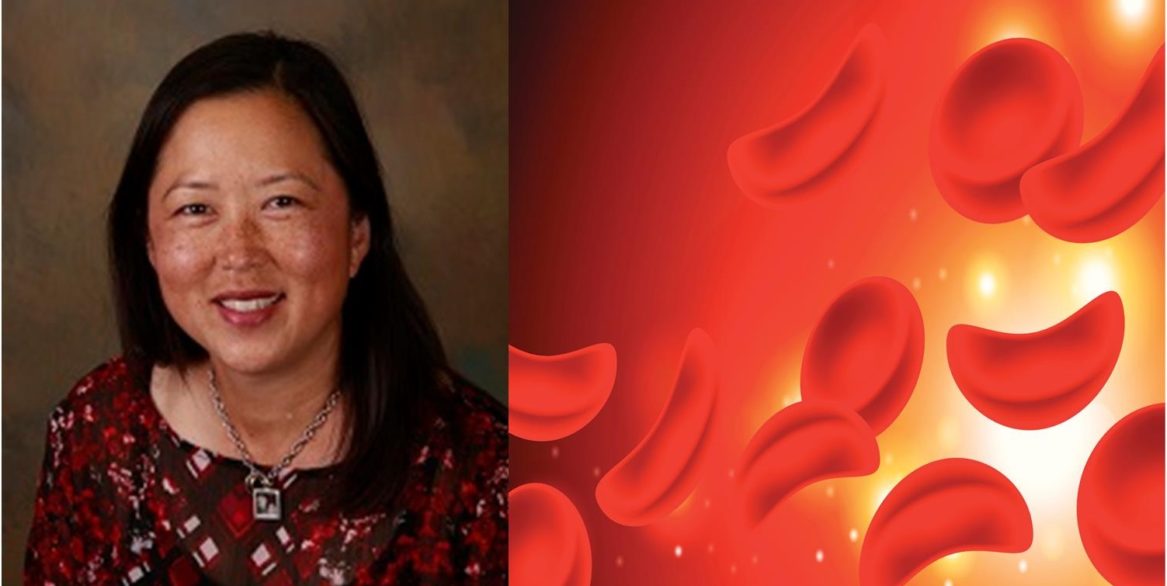
Around the Peckham Center for Cancer and Blood Disorders at Rady Children’s Hospital-San Diego, Jenny Kim, MD, is a familiar face to patients and families, staff, and up-and-coming health care professionals alike. As director of the Comprehensive Sickle Cell Center and a clinical professor of pediatrics at University of California San Diego School of Medicine, she is a go-to expert for all things hematology; a forward-thinking researcher; a trusted mentor; and an ally to young patients managing hematologic conditions such as sickle cell disease, histiocytic diseases and thalassemia. With September being National Sickle Cell Month, we chatted with Dr. Kim to explore what she loves most about her career path and what led her to it, how sickle cell research is broadening for pediatric patients, her mission to support future generations of health care experts … and her never-ending devotion to America’s Favorite Pastime.
What led you to your career path, both as a pediatrician and as a hematology/oncology specialist? Read More...
Hematology/Oncology, Staff Stories
hematology/oncology, pediatric hematology/oncology, sickle cell awareness, sickle cell disease, staff stories
August 29, 2019
All About Kids’ Eye Health
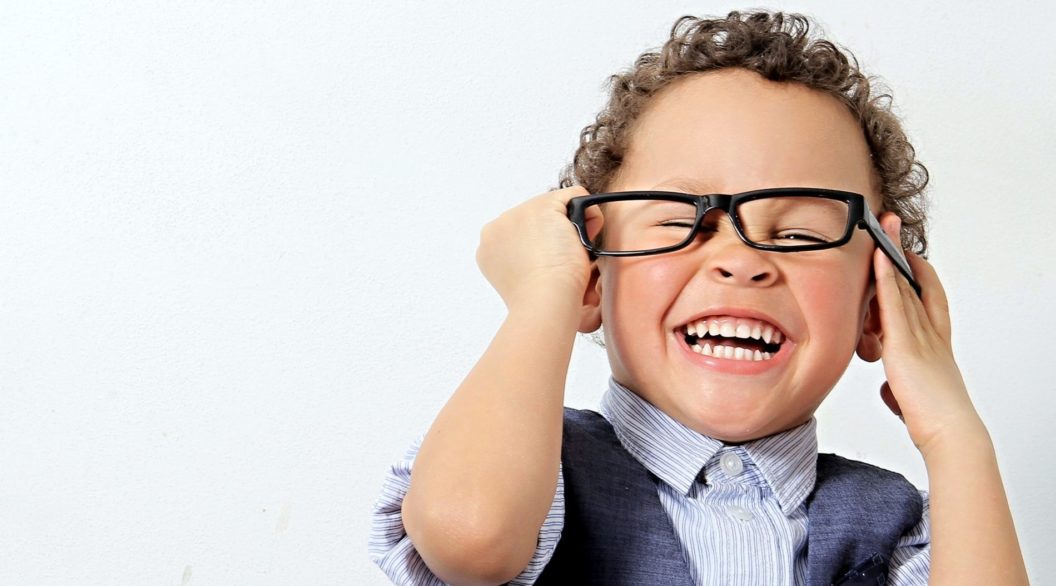
Our eyes play a major role in how we experience the world around us, making their health … well, pretty darn important. For kids, starting eye exams at an early age can help pinpoint vision problems or eye conditions before they cause more significant issues, and support overall well-being. So, when should a child receive their first check-up? Henry O’Halloran, MD, an ophthalmologist at Rady Children’s Hospital-San Diego, answers this — and many more FAQs — in a Children’s Eye Health and Safety Month infographic. For more information on eye care for your kiddos, visit https://www.rchsd.org/programs-services/ophthalmology/.
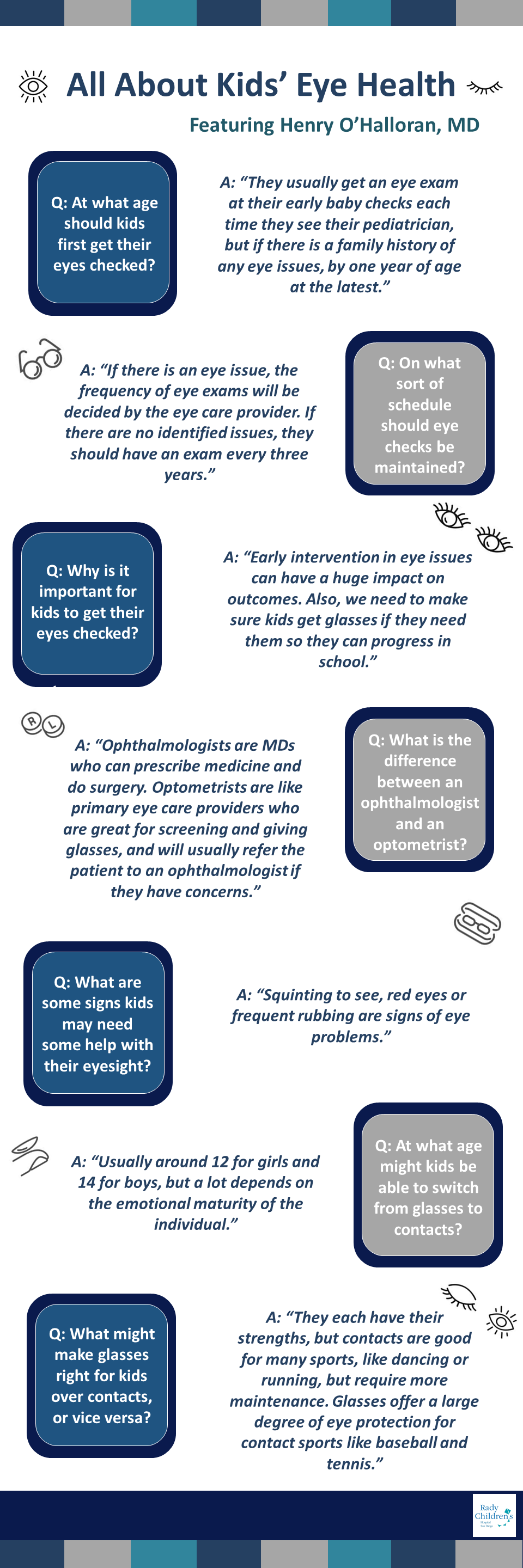 Read More...
Read More...
Ophthalmology
contacts for kids, eye exams, eye health, glasses for kids, kids eye health, ophthalmology
August 26, 2019
Local Conversation, Global Influence: How Rady Children’s Experts Are Helping to Innovate the Future of Care for a Rare Orthopedic Disease
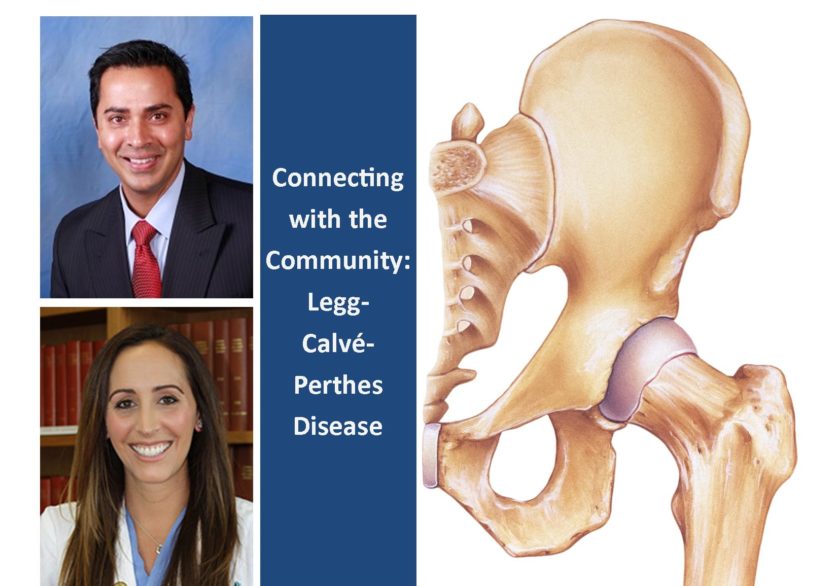
Most health care professionals are accustomed to sharing their expertise with one patient at a time. But recently, two such professionals — V. Salil Upasani, MD, co-director of the International Center for Pediatric and Adolescent Hip Disorders at Rady Children’s Hospital-San Diego and an associate clinical professor at University of California San Diego School of Medicine, and Chrissy Paik, BS, MPAP, PA-C, a physician assistant specializing in hip conditions within the Rady Children’s Division of Orthopedics & Scoliosis — had the opportunity to break from the norm and address a crowd of more than 250 in partnership with the Perthes Kids Foundation. The Southern California-based nonprofit advances education, advocacy and engagement efforts surrounding Legg-Calvé-Perthes disease, “a condition that affects the blood flow to the hip joint in an otherwise healthy child, usually around 5 to 8 years of age,” explains Dr. Upasani.
The decreased blood flow leads to progressive weakening of the joint. In turn, this causes symptoms including pain, limping or limited mobility. Although most kids can eventually recover and avoid future issues with treatment[1], Dr. Upasani notes there is still a long way to go until the medical community fully understands the disease and optimal therapies. “While the disease was described more than 100 years ago, we still know very little about what actually causes it. Because the condition is quite rare, pediatric orthopedic surgeons have formed an international group to combine our cases and study our patients’ outcomes after surgical and nonsurgical treatments.” Read More...
Orthopedics, Research and Innovation, Staff Stories
Legg-Calvé-Perthes disease, orthopedics, rare childhood disease, rare disease, rare disease research
August 20, 2019
Healthy and Fun Recipes for Back-to-School Season

Even if it feels like yesterday that your kids were celebrating their summertime freedom, back-to-school season is here. Along with checking shopping lists, stocking up on books and supplies, and preparing to get reacquainted with early wakeup calls, you may be pondering how to support your child’s brain power through school lunches and snacks that are as tasty as they are nutritionally balanced.
Healthy meals that account for key nutrients (think calcium, iron, zinc and certain vitamins) and foods including veggies and fruit have been linked to higher grades and a lower likelihood for students to be late to or absent from school. In addition, although the Centers for Disease Control and Prevention notes that breakfast is particularly foundational for student cognition, well-thought afternoon options can also help alertness, attention to detail and problem-solving skills run on all cylinders throughout the school day. In a recent article examining how nutrition and test performance go hand-in-hand, Sean Patrick Corcoran of New York University’s Steinhardt School of Culture, Education, and Human Development told The Atlantic, “Students who eat regular, healthy meals are less likely to be tired, are more attentive in class, and retain more information.” Read More...
Nutrition
back-to-school, childhood nutrition, clinical nutrition, healthy eating, healthy eating for kids, nutrition, school health
August 5, 2019
Champions for Change

Noah Jaffe and Grace Lockwood have a lot in common. Both are about to be high school juniors. Both are skilled swimmers — multi-time champions, in fact. And both are awesome examples of athletes with cerebral palsy changing the future of the sports they love.
Swim was a part of the teens’ lives before CP ever came into the picture, and has continued to be a source of pride, power and passion since. “I’ve been swimming competitively for seven years,” Noah, 16, says. “I don’t really think my perspective of it has changed [since finding out I have CP].” Incidentally, swim played a role in Noah connecting with his care team and being diagnosed at the Southern Family Center for Cerebral Palsy at Rady Children’s Hospital-San Diego. Read More...
Cerebral Palsy
cerebral palsy, CIF swim, high school athletes, high school sports, high school swim, para-athletics, para-swimming, Southern Family Center for Cerebral Palsy
July 25, 2019
Explore the Rady Children’s Hospital Pediatric Multiple Sclerosis Center with Director Jennifer Graves, MD, PhD, MAS

Although the Rady Children’s Hospital-San Diego Division of Neurology has cared for children living with multiple sclerosis for years, we recently took a significant step in increasing patient access to comprehensive, leading-edge care for this complex autoimmune condition: opening the all-new Pediatric Multiple Sclerosis Center. Under the expert purview of Director Jennifer Graves, MD, PhD, MAS, the center will serve as a hub for compassionate, individualized care for patients and support for the entire patient family, as well as a key connector to some of the most forward-thinking research happening in the world of pediatric MS. Learn more about what inspired the clinic, its offerings and the future of pediatric MS care from Dr. Graves herself in the Q&A below.
What is MS, and what are some of its common symptoms? Do symptoms vary from person to person? Read More...
Neurology, New at Rady Children's
MS, multiple sclerosis, neurology, pediatric MS, Pediatric Multiple Sclerosis Center, pediatric neurology
July 8, 2019
Getting to Know: Peter Chiraseveenprapund, MD — Pediatric Rheumatologist
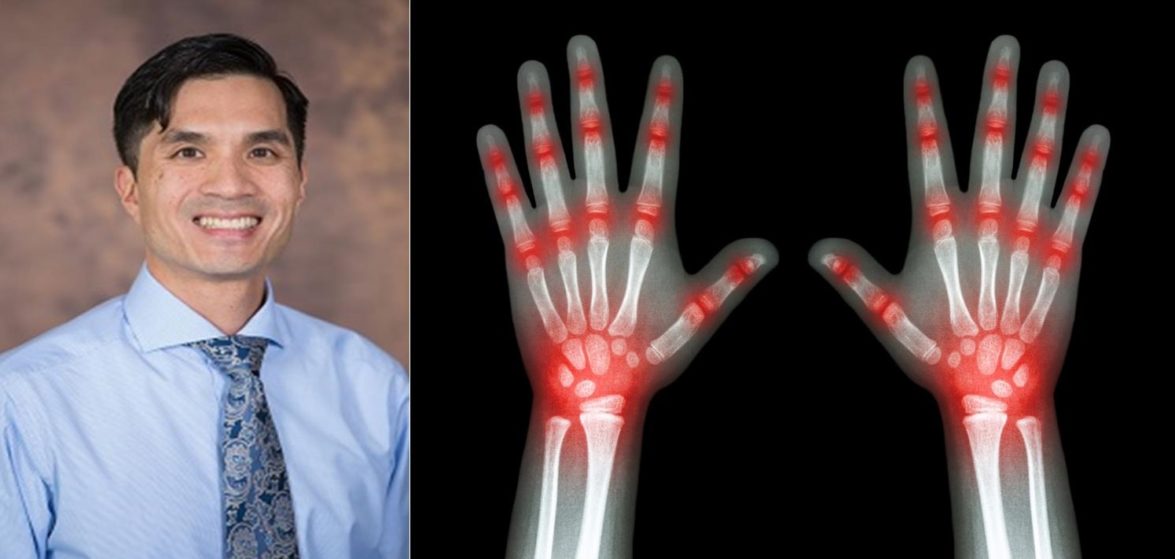
Peter Chiraseveenprapund, MD, (you can call him “Dr. Chira”) is a man on a mission. He’s a pediatric rheumatologist at Rady Children’s Hospital-San Diego, and cares for kids with conditions including juvenile arthritis, lupus and scleroderma. He’s an associate professor of clinical pediatrics at University of California San Diego School of Medicine. And he’s working to create a world of health care in which shifting kids with chronic conditions from pediatric care to adult care is seamless and stress-free. In recognition of Juvenile Arthritis Awareness Month, and of all Dr. Chira does for the field of rheumatology, take a few minutes to learn more about this forward-thinking physician.
What inspired you to be a pediatrician, and specifically, a pediatric rheumatologist? Read More...
Research and Innovation, Rheumatology, Staff Stories
juvenile arthritis, juvenile arthritis awareness, pediatric medicine, pediatric rheumatologist, rheumatology
July 8, 2019
Celebrating 10 Years of Fresh Start Surgical Gifts at Rady Children’s
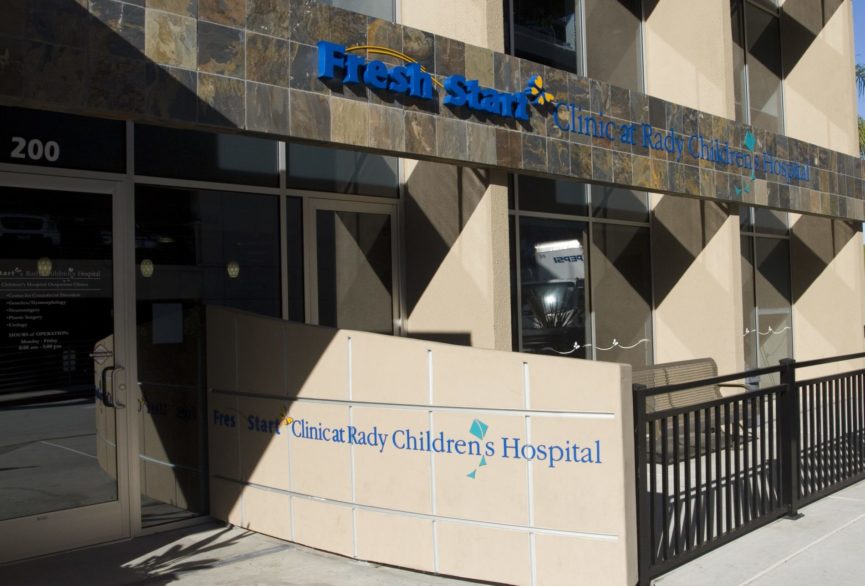
Over more than two decades, San Diego-based nonprofit Fresh Start Surgical Gifts has been enacting positive change throughout the local community, across the nation and even around the world. How? By offering underserved youth with physical differences — due to congenital conditions, trauma or health conditions — reconstructive surgeries and applicable health services, such as dental care, free of charge.
And, for the past 10 years, Rady Children’s Hospital-San Diego has been a proud part of these transformative efforts through the Fresh Start Clinic at Rady Children’s Hospital, which has expanded Fresh Start’s ability to offer patients high-quality care they would not otherwise be able to access or afford. The organization hosts many of its six annual Surgery Weekends at the Hospital, during which patients receive care from leading pediatric medical experts. All Fresh Start Clinic operations are run on a volunteer basis, so everyone patient families encounter, from patient service representatives to nurses to surgeons, are donating their time and talents to give back and make a difference. Read More...
Giving Back, Plastic Surgery, Staff Stories
community partners, community programs, Fresh Start Clinic, Fresh Start Surgical Gifts, giving back, international programs, plastic surgery, reconstructive surgery, staff stories
June 12, 2019
Summer Safety Roundup

Between no school, longer days and gorgeous weather, there are lots of reasons to love summer. But, even though the season tends to inspire a carefree attitude, there are important safety guidelines to keep in mind while enjoying fun in the sun. “With warmer temperatures and more time spent outdoors, summertime involves a number of safety hazards for children,” says Lorrie Lynn, injury prevention manager at Rady Children’s Hospital-San Diego’s Center for Healthier Communities. “Fortunately, a few simple things can help families significantly reduce kids’ risk.” Read on for some top tips on creating a safer summer for the whole family.
Smart Swimming Read More...
Center for Healthier Communities, Safety
Center for Healthier Communities, dehydration prevention, helmets, outdoor sports, safety, summer safety, sun safety, swimming
June 3, 2019
What Is Your Child’s Headache Telling You?

We all get headaches. Some of us deal with intense, persistent and all-too-frequent pain; some soldier through the occasional stress- or dehydration-induced discomfort. Of course, this applies to kids as well. While no parent wants to see their child in pain, the good news is, most headaches are acute and not a cause for concern. “Headaches in children and adolescents are common, and can interfere with school, play and sleep. Though headaches do occasionally indicate a serious medical problem, the vast majority are easily recognized as tension headaches, migraines or other primary headache types,” explains Michael Zimbric, M.D., a neurologist at Rady Children’s Hospital-San Diego and an associate clinical professor at University of California San Diego School of Medicine. “They can usually be treated effectively with good health habits (sleep, meals, hydration, exercise and stress management) and/or medications.”
Just in time for National Migraine and Headache Awareness Month, Dr. Zimbric filled us in on what different kinds of headaches can mean for kids, some typical points of distinction between a headache and a true migraine, and when it might be time to see a physician. Keep in mind that each individual is different, and if you feel your child needs to see a medical professional for their headaches — even ones that seem “normal” — don’t hesitate to set up an appointment for them. Read More...
Neurology
brain health, headaches, headaches in kids, migraines, migraines in kids, neurology
May 6, 2019
The Wellness Team at Juvenile Hall: How Classes in Nutrition and More Aim to Shape Healthier Futures for Detained Youth
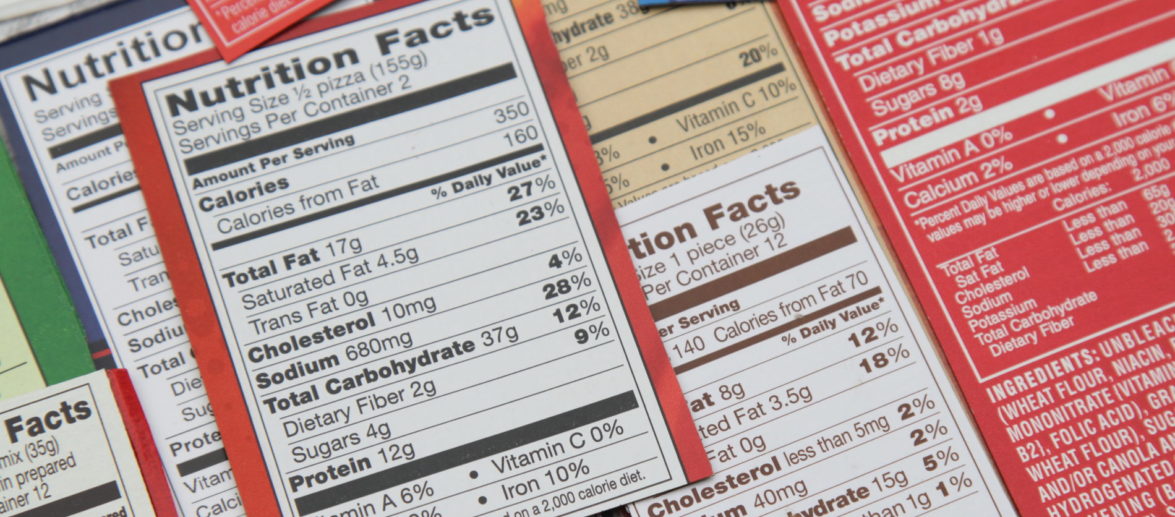
Rady Children’s Hospital-San Diego’s Center for Healthier Communities (CHC) is home to nearly 20 initiatives that focus on building and maintaining healthy lifestyles from an early age. Through accessible, resource-rich programs that draw upon in-depth child and community health research, the CHC and its partners work to enact positive change all over San Diego, with an emphasis on supporting wellness and development in underserved areas.
One of the CHC’s key pillars is Youth Development, within which a number of programs support career preparation, academic achievement, upward mobility and general well-being for local teens. Alongside familiar offerings such as FACES for the Future and the ever-popular Summer and Weekend Medical Academies is a lesser known, but equally important, program: The Wellness Team at Juvenile Hall. Read More...
Center for Healthier Communities, Staff Stories
Center for Healthier Communities, community programs, staff stories, Wellness Team at Juvenile Hall
May 3, 2019
Playing it Safe: Sports Injury Prevention Tips for Kids
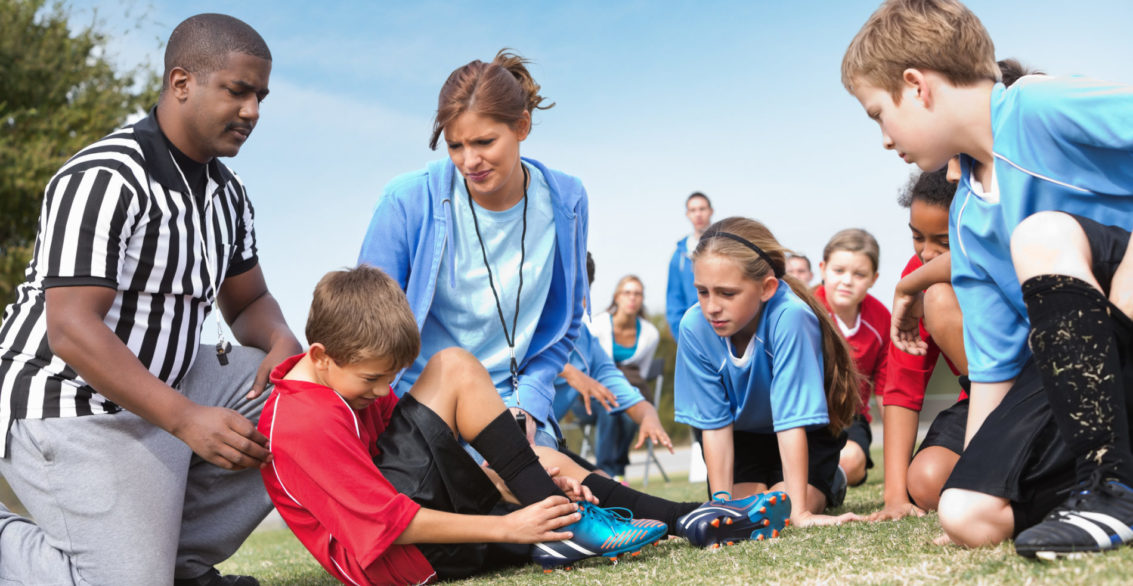
Tackle. Dunk. Kick. Flip. Dive. The human body accomplishes some pretty incredible feats when at play — and most of the time, it does so unscathed. But injury can strike even the most talented athletes when they take the field or hit the court, and youth athletes are no exception. According to data from the Centers for Disease Control and Prevention, sports injuries are the top reason kids 12 to 17 visit the emergency room, and 40 percent of all sports injuries occur in kids 5 to 14.
Eric Edmonds, M.D., director of orthopedic research and co-director of 360 Sports Medicine at Rady Children’s Hospital-San Diego, says that while any sport presents risk for injury, some are inherently more dangerous. “If you take the standard school sports, football is going to have the highest injury rate, followed by the other contact sports. The incidence of injury goes down based on the prevalence of contact.” Common issues include injuries from “cutting,” or rapidly changing direction while running, with ACL tears leading the pack; shoulder injuries; sprains; and fractures, especially to the hands and wrists. Dr. Edmonds adds that more extreme sports tend to lead to more extreme injuries. “With the popularity of X Games types of activities, between motocross and skateboarding and higher-risk activities like Parkour, we are seeing an overall higher incidence of really significant injuries.” Read More...
Safety, Sports Medicine
injury prevention, injury recovery, sports injury prevention, sports medicine, sports safety for kids
April 15, 2019
Straightforward Answers to Common Vaccine Questions
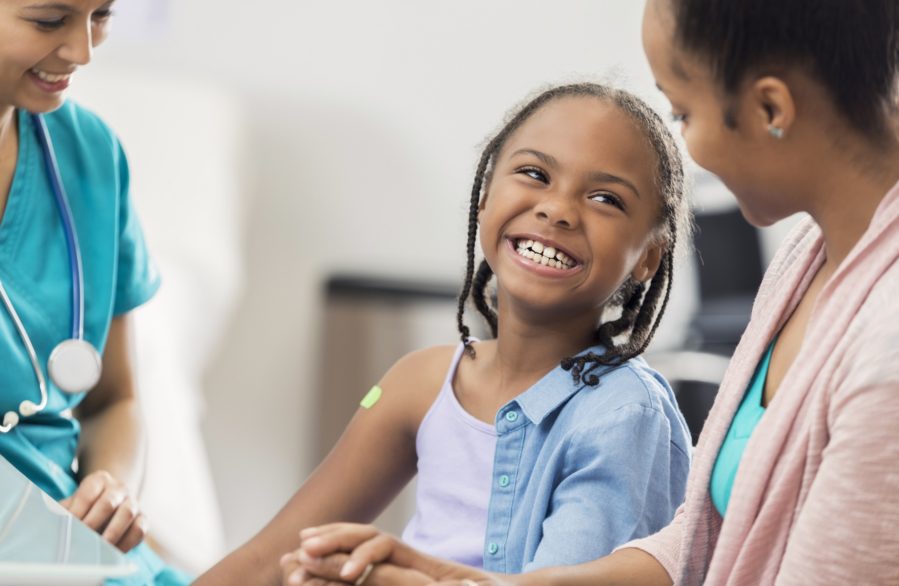
From a child’s first days, immunizations are a major — and complex — part of their health care. As such, questions including “Why does my child need all of these vaccines?” and “Are these safe?” to “Am I doing enough to protect my child?” and “Am I timing all of this right?” can cause worry, stress or confusion for many parents.
Vaccines are indeed very important, and a point of emphasis in most medical settings. However, they shouldn’t be a source of strife for families. To help address some of the most common vaccine questions, Mark Sawyer, M.D., attending physician in the Division of Infectious Diseases at Rady Children’s Hospital-San Diego and professor for the Department of Pediatrics at University of California San Diego School of Medicine, provides some straightforward information in a new Kite Insights Q&A. Read More...
Vaccines
immunizations, kids vaccines, mandatory vaccines, pediatric vaccines, vaccine questions, vaccine schedule, vaccines
April 9, 2019
What’s Now and Next in Autism Spectrum Disorder Research?
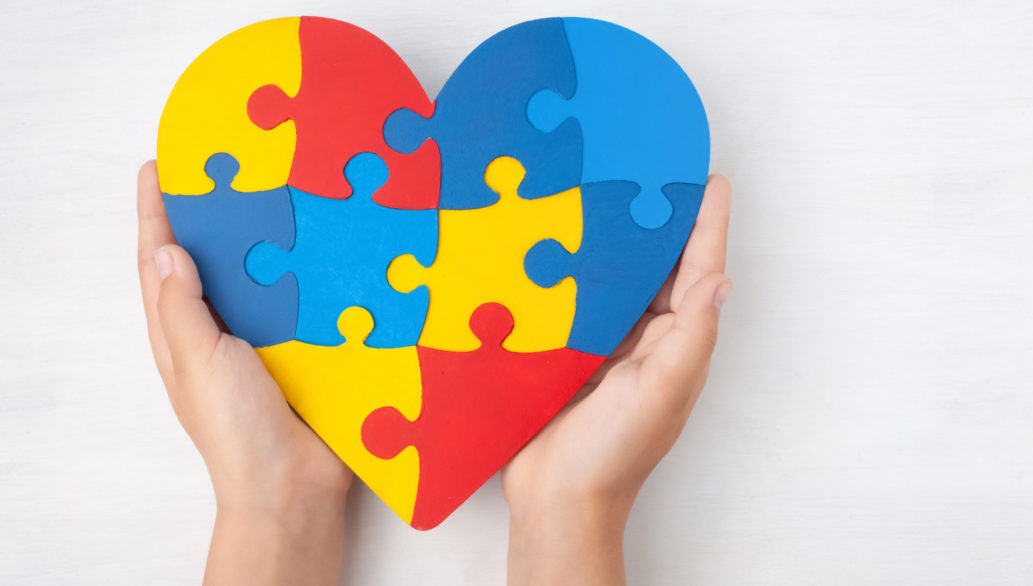
Between 2000 and 2014, the number of children diagnosed with autism spectrum disorder (ASD) in the United States more than doubled, from approximately one in 150 to approximately one in 59[1]. While it’s difficult to say whether this is due to a true increase in incidence, to heightened awareness and more frequent assessments, or a combination thereof, one thing is for sure: ASD affects millions of kids and families, and research is critical to advancing the way we understand, diagnose and treat this complex condition. Through our own Autism Discovery Institute (ADI) and myriad partnerships, Rady Children’s and a talented team of research investigators play a key role in this important innovation.
One such investigator is Lauren Brookman-Frazee, Ph.D., ADI research director, professor for the Department of Psychiatry at University of California San Diego School of Medicine, and associate director of the Child and Adolescent Services Research Center (CASRC). The CASRC brings together researchers from institutions including Rady Children’s, UC San Diego, San Diego State University (SDSU), University of San Diego and University of Southern California, who work with community partners to conduct research in public service sectors. With her finger on the pulse of what is now and next in ASD research, Brookman-Frazee provided us with a rundown of ADI research collaborations, recent exploratory wins and what the future may hold for ASD care. Read More...
Behavioral Health, Research and Innovation
autism discovery institute, autism education, autism research, autism services, autism spectrum disorder, autism treatments
April 5, 2019
Dog Bite Prevention 101
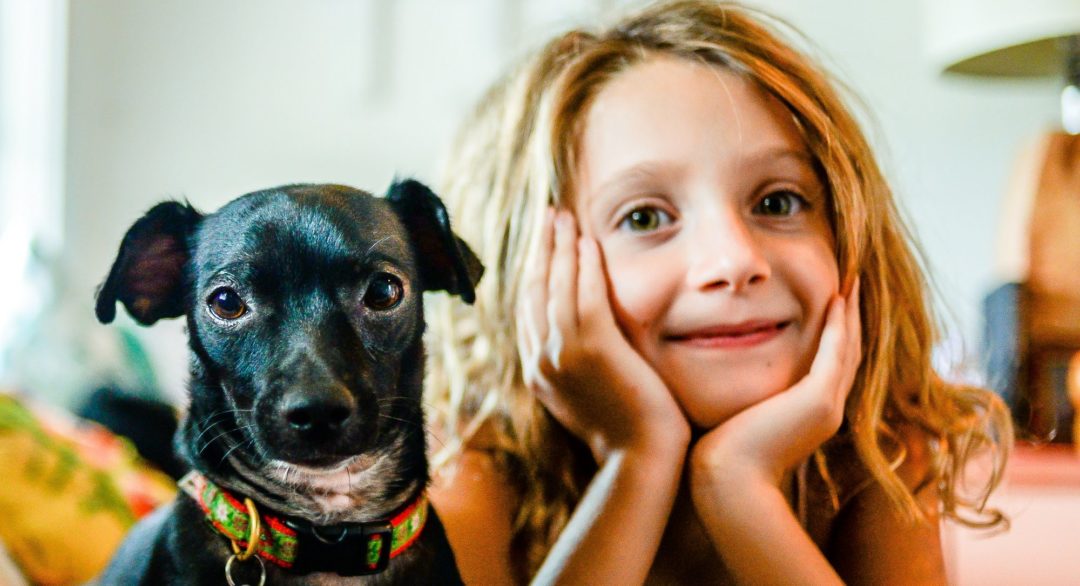
For those of us who own or interact with dogs, it’s a safe bet almost all would say our furry friends are well, friendly. But, it’s important to remember that all dogs, no matter how snuggly, playful and lovable, have the potential to bite. “Every breed, all shapes and sizes, both sexes, ANY dog,” says Kay Moore, R.N., B.S.N., C.P.E.N., a clinical nurse in Rady Children’s Hospital-San Diego’s Emergency Department (ED) and a certified professional dog trainer.
Given both of her professions, as well as her findings from a dog bite research project she is currently leading, Moore is well-versed in the prevalence of bites. “San Diego County Animal Services investigates more than 6,000 dog bites or attacks a year,” she says. “Our ED at Rady Children’s treated 338 dog bites in 2017, and 329 in 2018. In addition, we treat over 150 dog bites in our urgent cares each year.” Most of the time, these aren’t coming from strays on the street or an unfamiliar neighborhood dog. “In 75 to 80 percent of [the cases we see at Rady Children’s], the dog is either the child’s family pet, extended family’s pet or a close friend’s pet that the child knows well. For this reason, dog bites are particularly emotionally stressful for the whole family because the dog is loved and considered a family member.” Moore adds that although “bites that are more severe [and] that often require surgery … are more highly correlated with pit bulls, German shepherds, rottweilers, etc.” that doesn’t mean that these breeds should be stigmatized. “These are the bites that are highly publicized for their dramatic effect. Actually, because they are the most commonly owned breeds, we see lots of labrador and golden retriever bites.” Read More...
Safety
dog bite prevention, dog safety, dogs and kids, emergency department, emergency medicine, pet safety
March 29, 2019
Achoo! All About Seasonal Allergies
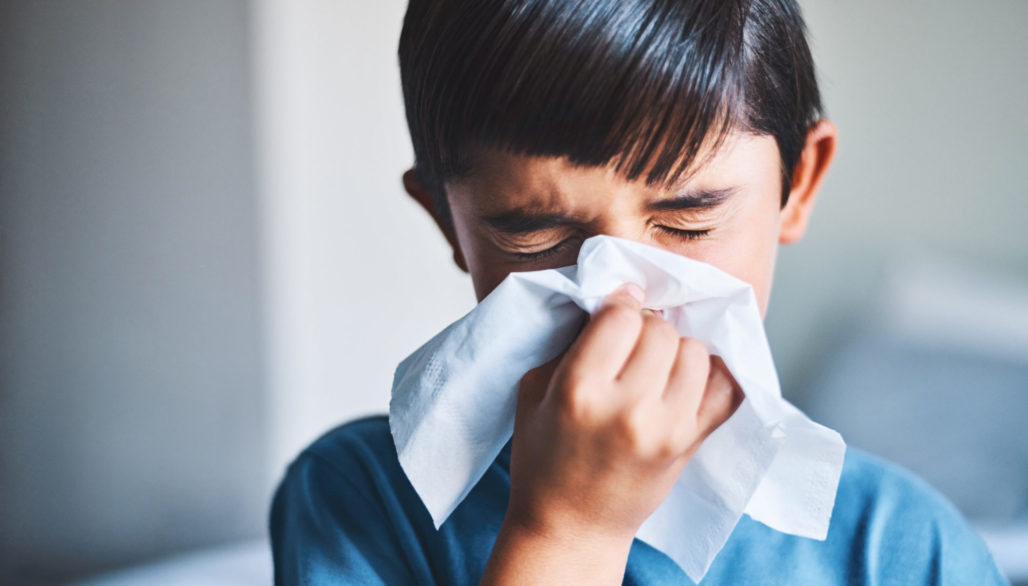
Spring has sprung, and with it, so have seasonal allergies — with an early arrival at that. Between higher-than-average rainfall and ultra-active blooms of plants and wildflowers, this season is already kicking sniffles, itchy eyes and scratchy throats into high gear for many kids, says Akilah Jefferson, M.D., M.Sc., an allergist within Rady Children’s Specialists of San Diego’s Allergy & Immunology Program.
We’re also still on the tail end of cold and flu season, and sometimes, it can be tough to tell the difference between a virus or sinus infection and a bout of allergies. So, how can you know what’s ailing your kids? With allergies, an itchy, runny nose and sneezing are the most common symptoms, and generally come with clear nasal discharge, states Dr. Jefferson. Watery or irritated eyes are also fairly typical, whereas fevers are rare. Conversely, fevers occur frequently with the flu or a sinus infection, and sometimes with more severe colds. Sinus infections also involve “sinus pressure and pain, lots of really discolored mucus, and feeling a lot more tired,” Dr. Jefferson says. Sore throat? Could be allergies, but cold or flu is the more likely culprit. Read More...
Allergy/Immunology
March 28, 2019
Rady Children’s Honored for Commitment to Reducing Opioid Prescriptions
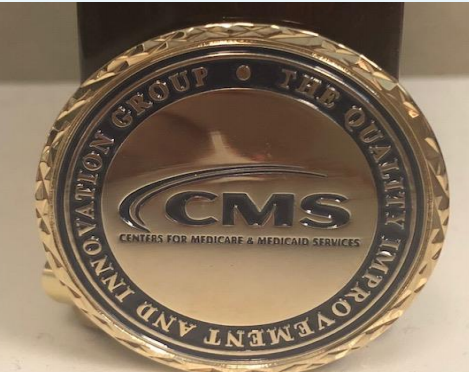
We are proud to announce that Rady Children’s Hospital-San Diego and our Prescription Drug Abuse (Opioid) Task Force have received the Quality Improvement and Innovation Group Challenge Coin Award from the Centers for Medicare and Medicaid Services!
This award recognizes our dedication to decreasing overall Hospital opioid use while maintaining effective pain control, in turn supporting our commitment to consistently enhance and innovate patient care. Over a two-year period, an institution-wide quality improvement initiative reduced the number of ambulatory, or outpatient, pediatric opioid prescriptions by more than one-third and ambulatory doses prescribed by more than 50 percent. Read More...
Awards and Recognitions, Safety
opioid reduction, opioid safety, opioid sparing, prescription medicine disposal, prescription safety
March 26, 2019
Getting to Know: George Liu, M.D., Ph.D. — Chief of the Division of Infectious Diseases
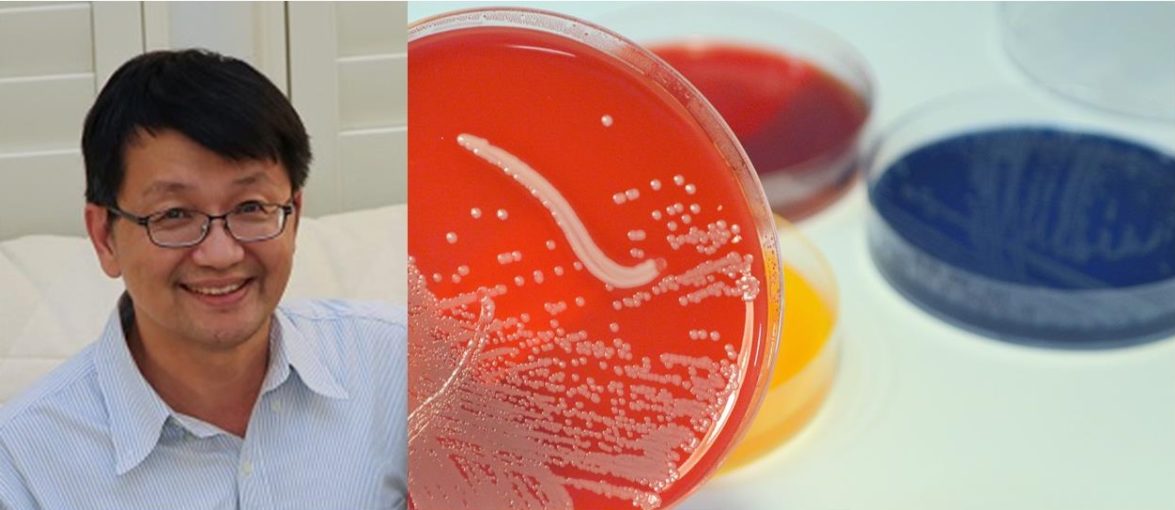
George Liu, M.D., Ph.D., is one of the most recent additions to the Rady Children’s Hospital-San Diego family. After growing up in Africa, earning his medical education in both San Diego and the United Kingdom, and honing his clinical and research expertise in Los Angeles, the newly minted chief of the Division of Infectious Diseases brings globally reaching experience and vision to his role. To welcome Dr. Liu back to San Diego, we sat down for a “Getting to Know” interview spanning his fascinating research into antibiotic-resistant bacteria, where he sees the future of infectious disease care going, and the fruit-filled soccer games of his childhood (you’ll see).
What does your role as division chief entail? Read More...
Infectious Diseases, Research and Innovation, Staff Stories
antibiotic resistance, Dr. George Liu, infectious disease research, infectious diseases, resistant bacteria, resistant bacteria research
March 18, 2019
Heroes “fur” Real
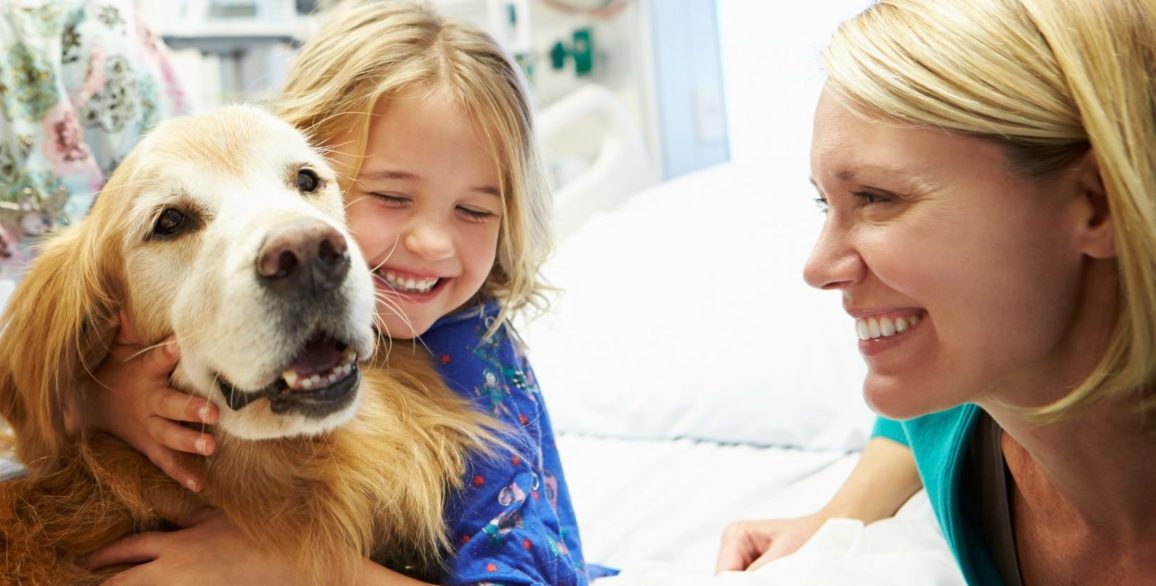
There are few things cuter or more joy-inducing than dogs. Their ability to connect with humans: uncanny. Their cuddling prowess: unparalleled. And their positive effects on health: pretty darn undeniable. Scientific studies have shown that simply petting a pup increases one’s output of the feel-good hormones serotonin, oxytocin and prolactin, in turn reducing anxiety and loneliness and amplifying comfort and mental stimulation. Spending time with furry friends can also help lower blood pressure, mitigate pain and, in some instances, even dial down the need for medication.
At Rady Children’s Hospital-San Diego, our philanthropically funded PetSmart Paws for Hope program applies these findings to improving patients’ lives through one-on-one visits tailored to their unique needs, both emotional and medical. Through about 15,000 encounters each year, more than 30 dogs and their human counterparts work tirelessly to bring smiles, laughter and a greater sense of well-being to our patients and their loved ones. And, fun fact: Many of these doggedly devoted (see what we did there?) volunteers also happen to be Rady Children’s employees and their pets. Meet a few — both two- and four-legged — now! Read More...
Canine Therapy, Giving Back, Staff Stories
canine therapy, staff stories, staff volunteers, therapy dogs
March 11, 2019
Dream On: Quality Sleep at Every Stage of Childhood
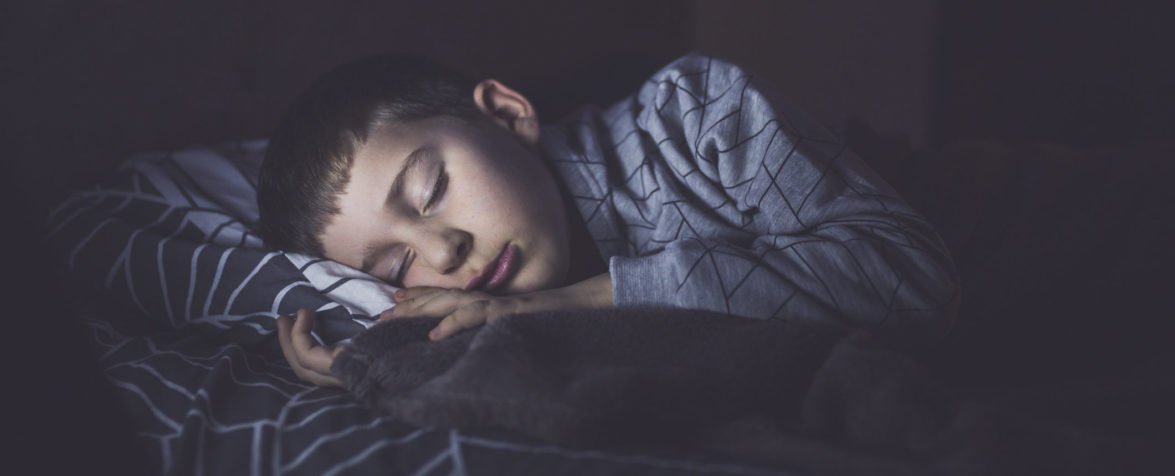
Who doesn’t love a good night’s sleep? A solid snooze is physically and mentally restorative, and an essential part of living your healthiest life. For kids, who are on a constant developmental trajectory from the day they’re born, sleep is all the more important. However, many parents wonder how much is enough, how to help kids fall and stay asleep, and when it might be time to seek help from a sleep pro.
With National Sleep Awareness Week upon us, Rakesh Bhattacharjee, M.D., director of the Center for Healthy Sleep at Rady Children’s Hospital-San Diego and an associate professor of pediatrics at University of California San Diego School of Medicine, offers expert insights on this tricky topic via the infographic below. Read More...
Child Development, Sleep
healthy sleep, help kids sleep, kids and sleep, quality sleep, sleep, sleep and health, sleep schedule
March 7, 2019
Nutrition Fact vs. Fiction

Navigating nutrition is tough enough when keeping your own well-being in mind. But as parents, you know considering foods that support your child’s health, growth and development takes grocery shopping, meal planning and cooking to a whole other level. This is further compounded by the fact that there is tons of confusing, ever-changing information out there on what actually is healthy.
For National Nutrition Month, we asked a couple members of the team at Rady Children’s Hospital-San Diego’s Nutrition Clinic to address some of the nutrition topics they hear most about — and help separate fact from fiction. Read More...
Nutrition
childhood nutrition, healthy eating, healthy eating for kids, nutrition, nutrition myths
March 1, 2019
Getting to Know: Rady Children’s Child Life Team
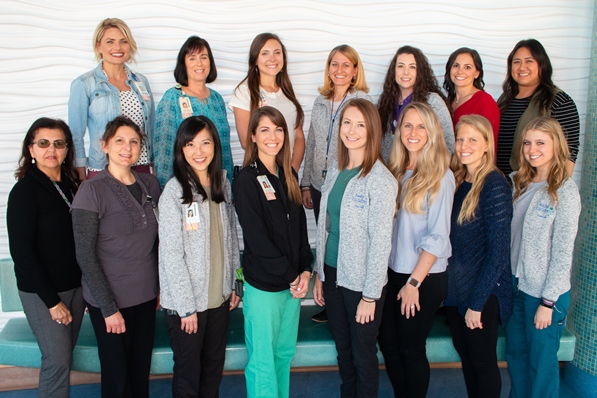
“Radiology,” “chemotherapy” and “dialysis” are big terms for little patients to understand, and even bigger medical experiences to go through. So, when anxiety strikes before a procedure or things get overwhelming during a hospital stay, a very special kind of health care professional is there to help calm fears, make sense of it all, and even inspire fun and laughter — child life experts.
At Rady Children’s Hospital-San Diego, our Child Life Services team comprises 15 certified child life specialists (C.C.L.S.) and two child life assistants. Fun fact: Child Life Services is one of the programs at the Hospital that is funded entirely through donations, a sure sign of its value and effectiveness. Members of the team are available to patients, parents and siblings seven days a week in inpatient and outpatient areas. Just some of the areas they can visit are outlined below — their reach throughout the Hospital is broad! Read More...
Child Life, Staff Stories
certified child life specialist, child life, child life month, family support, health care education, psychosocial
February 20, 2019
From Fear to Empowerment: Why I Joined the New Cardiac Family Advisory Council
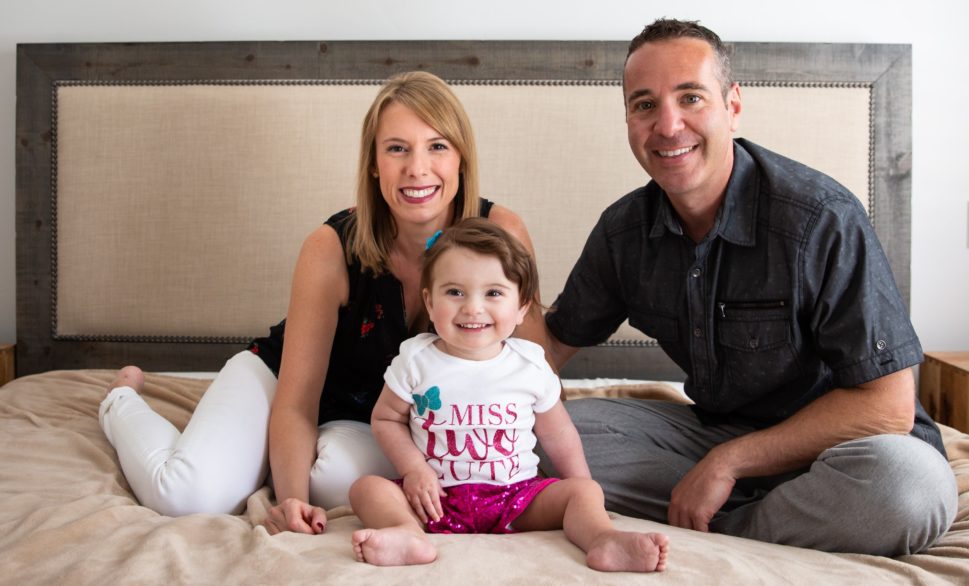
by Melissa Cohen, Cardiac Family Advisory Council Member
The numbness of my epidural hadn’t yet worn off when my beautiful newborn daughter turned blue. My husband and I only got to hold Makayla (“Mak,” as we call her) for two hours before she moved from our loving, warm arms to a tiny plastic isolette, and we wouldn’t be able to hold her again for three days. She was diagnosed the day after she was born with a congenital heart defect (CHD) called Tetralogy of Fallot, and was rushed to the cardiovascular intensive care unit (CVICU) at Rady Children’s Hospital-San Diego. Read More...
Family Advisory Council
Cardiac Family Advisory Council, cardiology, cardiovascular health, cardiovascular surgery, congenital heart defect, Family Advisory Council, heart dad, heart mom
February 11, 2019
Protecting Youth Athletes from Dental Injuries
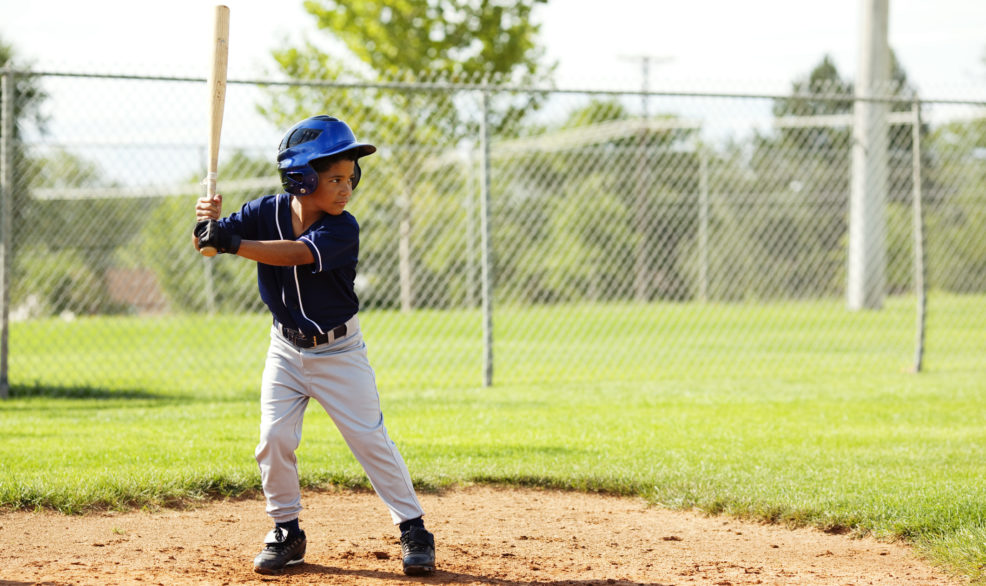
When you think of sports injuries in kids, things like concussions, sprains and broken bones likely come to mind. But with one in three youth athletes affected, injuries to the teeth and mouth are also high on the list, explains Parvathi Pokala, D.D.S., a pediatric dentist at Rady Children’s Hospital-San Diego. With Children’s Dental Health Month upon us and springtime sports season fast approaching, learn more about how you can help your champions’ favorite activities play nice with their smiles.
Play Ball (Carefully) Read More...
Dental Health, Safety, Sports Medicine
dental health in kids, dental injuries in children, healthy teeth in kids, preventing dental injuries in children, sports and dental injuries, sports medicine, sports safety for kids
February 8, 2019
Bad Romance: Raising Awareness of Abuse in Teen Relationships

While most romantic relationships forged in teenage years don’t last forever, they can typically be looked back on for fond memories, lessons learned … or at least a good-natured eye roll. But the American Psychological Association (APA) reports that for more than 10 percent of high school students, young love includes physical, verbal or emotional abuse, potentially endangering teens and inflicting trauma, shame or psychological distress that can last even into adulthood.
“Research consistently shows that traumatic experiences during adolescence can have direct and profound associations with both psychological and physical health issues,” says Benjamin Maxwell, M.D., medical director of inpatient psychiatry at Rady Children’s Hospital-San Diego and assistant professor for the Department of Psychiatry within University of California School of Medicine. “Implications may include depression, anxiety, post-traumatic stress and suicidal ideation, as well as an increased likelihood to develop an eating disorder, engage in risky behaviors or have abusive relationships in the future.” Read More...
Behavioral Health, Safety
mental health, recognizing dating abuse, strategies against abuse, teen dating violence, teen dating violence awareness, teen relationships
February 6, 2019
Keeping Kids’ Blood Pressure and Cholesterol in Check

It’s likely you’ve talked with your doctor about your heart health and where your blood pressure and cholesterol stand. But have you talked with your child’s pediatrician about theirs? “We usually think of hypertension (high blood pressure) and high cholesterol as problems that affect adults, but we tend to forget that these problems can start early in life,” explains Jessica Haley, M.D., pediatric cardiologist and director of the Division of Cardiology’s Home Monitoring Program at Rady Children’s Hospital-San Diego and assistant clinical professor of pediatrics at University of California School of Medicine. “Hypertension is found in approximately 3.5 percent of kids and teens; abnormal cholesterol levels are found in approximately 20 percent. Both of these issues are more common among kids who are overweight or obese.”
High blood pressure or cholesterol levels in youth are typically the result of underlying health issues, such as kidney disease; environmental factors, such as unhealthy diet or weight and insufficient exercise; or genetics. “Some kids have an increased risk of developing these problems simply because it runs in their family,” Dr. Haley says. Since these potentially harmful conditions can stem from so many — or even multiple — areas of health, Dr. Haley emphasizes the importance of partnering with your child’s pediatrician to monitor from a young age. Early intervention is critical to providing proper treatment, in turn reducing the likelihood of conditions worsening and of progression to cardiovascular disease, stroke, heart attack, kidney disease or heart failure in adulthood. “Studies have found that kids that have high blood pressure are more likely to continue to have it as adults. We are now finding that kids with hypertension or abnormal cholesterol are developing subtle changes in their bodies, including thickening of the heart muscle and of the arteries, which contributes to the early development of cardiovascular disease,” continues Dr. Haley. Read More...
Cardiology
blood pressure, cardiology, cardiovascular health, cholesterol, health screenings for kids, well-child visits
February 1, 2019
Getting to Know: Justin Ryan, Ph.D. – Director of the 3D Innovations Lab
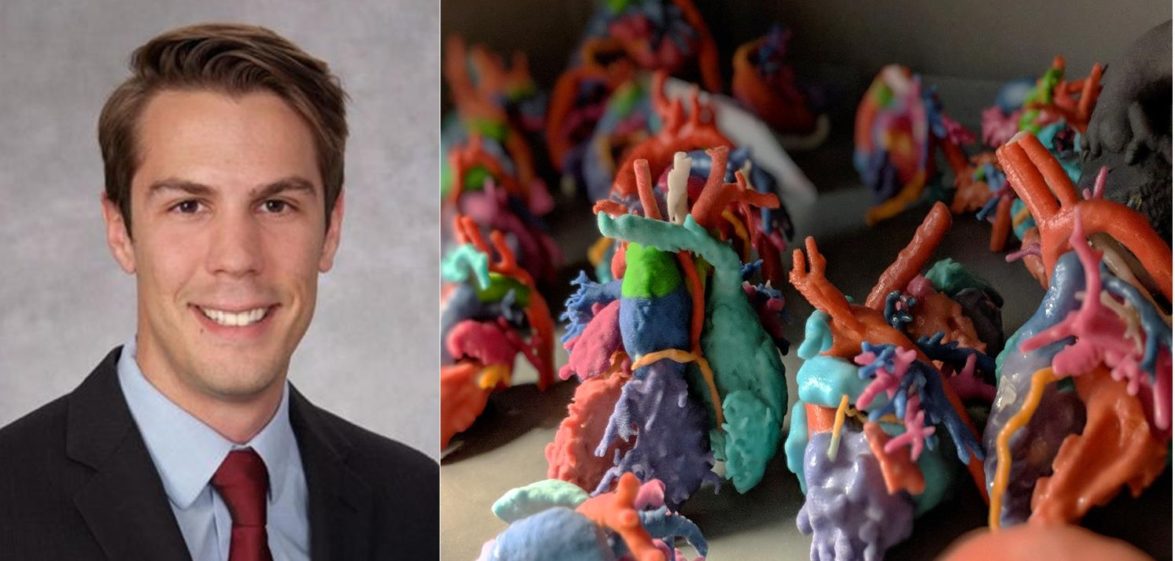
Justin Ryan, Ph.D., is an artist — a very specialized, highly technical, life-improving artist. After all, as director of the new 3D Innovations (3DI) Lab at Rady Children’s Hospital-San Diego, he and his team craft 3D models of hearts, brains, bones and more to streamline surgical plans and improve outcomes for even the Hospital’s most complex cases. Find out more about his fascinating role, his unique professional background and his peaceful spirit animal in our latest edition of “Getting to Know.”
Describe a typical workday. Read More...
Research and Innovation, Staff Stories
3D Innovations Lab, 3D modeling, 3D printing, 3DI, 3DI Lab, staff stories, surgical innovation, surgical models
January 30, 2019
Changing Policies, Changing Lives
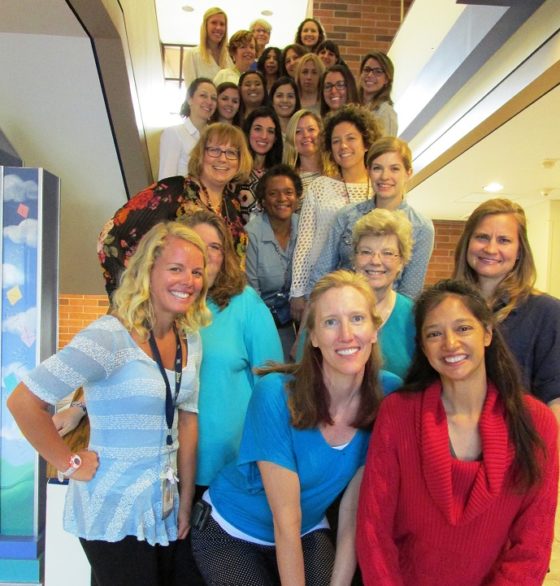
Each year, the Cochlear Implant Program team from the Audiology and Speech-Language Pathology Departments (latter team pictured) at Rady Children’s Hospital-San Diego witnesses dozens of profoundly deaf or severely hard-of-hearing children experience the sounds of the world around them for the first time. Being outfitted with a cochlear implant, a surgically placed electronic device, can be transformative for a child’s development and future. But it’s not a one-and-done event — because recipients haven’t always been able to have the same speech-teaching interactions that hearing children do, life with a new cochlear implant can involve significant, specialized speech therapy requiring weekly visits. Accordingly, one of the key questions when evaluating a child as a cochlear implant candidate is whether or not they’ll be able to attend these visits, explains Shari Garrett, M.S., C.C.C.-S.L.P., C.H.T.P., manager of the Speech-Language Pathology Department.
With many of the Hospital’s cochlear implant families living in out-of-town areas such as Calexico, El Centro and Riverside County, Garrett says that can be tough. Until recently, speech pathologists saw families so dedicated to their child’s care that they’d spend hours each week driving back and forth to appointments, only to arrive (understandably) exhausted and less engaged than they would be with a shorter commute. She and her team knew something needed to change — they needed to bring speech therapy to families’ homes through telemedicine, a burgeoning form of health care that connects patients and providers from anywhere using audio and video technology. Think of it like a patient privacy-friendly version of Skype. Read More...
Child Development, Hearing/Speech, Research and Innovation
audiology, cochlear implants, speech-language pathology, telemedicine, telespeech
January 21, 2019
Drugs and Alcohol: Know the Facts

By the time they reach their junior year of high school, about 52 percent of kids in California have had an alcoholic drink at least once, while 43.5 percent, 40 percent, 22 percent and 6 percent have gotten high at least once using cold or cough medicine, marijuana, prescription pain medicine, and cocaine or amphetamines, respectively[1]. Nationally, 16.5 percent of high school seniors say they binge drink, and 24 percent of youth in eighth through 12th grades use marijuana[2].
A number of factors can make it more likely for teens to use or abuse drugs and alcohol — ranging from psychiatric illness, a history of trauma or neglect, and hanging out with drug-using peers to genetics, availability and coming from a low socioeconomic background. However, unrealistic expectations and lack of accurate information are often strong contributors, says Kara Bagot, M.D., a child and adolescent psychiatrist at Rady Children’s Hospital-San Diego and an assistant professor within University of California San Diego School of Medicine’s Department of Psychiatry. She continues to explain that a large part of misinformation stems from using search engines, or even social media, to research substances. “They are frequently directed to other sites, forums or chats that have inaccurate or misleading information on drugs. Studies have found that incorrect information increases the risk of adolescents trying substances they may not otherwise have tried.” Read More...
Behavioral Health, Safety
behavioral health, drugs and alcohol, mental health, substance abuse, substance abuse treatment, substance use
December 21, 2018
Getting to Know: Karen Miller, B.S.N., R.N., C.E.N. – Neuro-Oncology Case Manager at the Peckham Center for Cancer and Blood Disorders
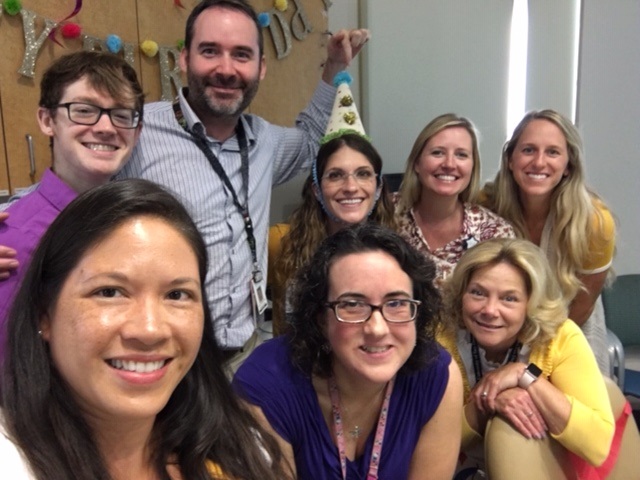
Karen Miller, B.S.N., R.N., C.E.N., (pictured in the birthday hat with some of her neuro-oncology teammates), has been a nursing pro for the past 12 years, and has been overseeing all aspects of brain tumor cases at Rady Children’s Peckham Center for Cancer and Blood Disorders since June 2018. We chatted with the San Diego newcomer to learn more about her role as neuro-oncology case manager, her penchant for a certain red-haired crooner and what local staple she’s obsessed with snacking on.
As a nurse case manager, what’s your day-to-day like? Read More...
Hematology/Oncology, Staff Stories
getting to know, hematology/oncology, neuro-oncology, Peckham Center for Cancer and Blood Disorders, pediatric hematology/oncology, pediatric neuro-oncology, staff stories
December 18, 2018
Rady Children’s ECMO Expertise Goes Global
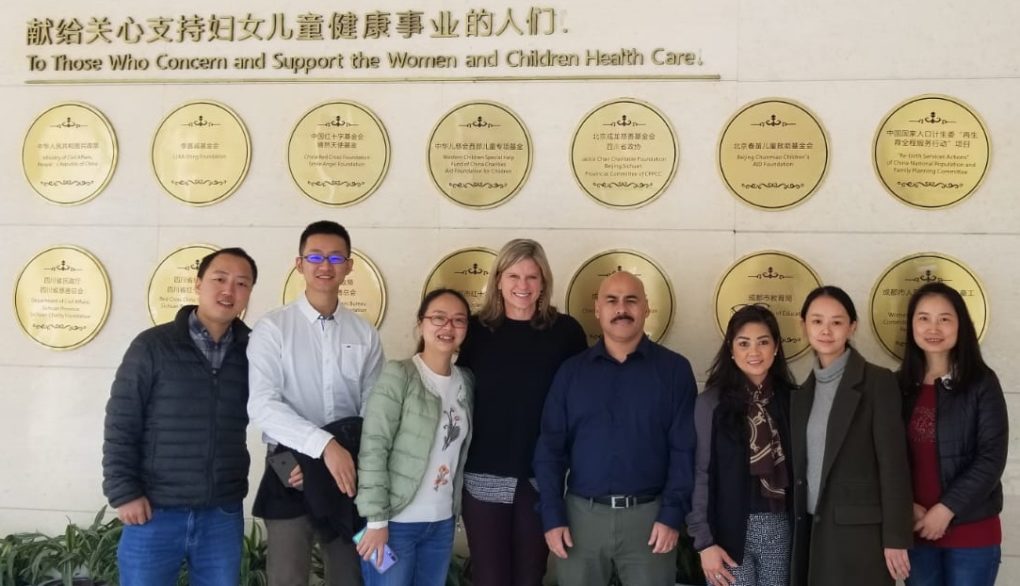
George Sutherland, M.B.A., R.R.T.-N.P.S. (pictured middle right), is going places. And while he certainly excels in his role as Rady Children’s Hospital-San Diego’s extracorporeal membrane oxygenation (ECMO) coordinator, we mean this literally. That’s because in Nov. 2018, Sutherland led a group of Rady Children’s ECMO experts on a volunteer trip to China, where they helped train 25 practitioners at Chengdu Women’s and Children’s Central Hospital on this life-saving technology and establish a neonatal ECMO program. Sutherland’s fellow volunteers included Denise Suttner, M.D. (pictured middle left); Jose Honold, M.D.; Carlos Ramos, M.D.; Erika Fernandez, M.D. and ECMO Primes Lutchi Abraham, B.S.N., R.N., C.C.R.N.; Elana Sterling, B.S.N., R.N., C.C.R.N.; Arjumand Gutierrez, B.S.N., R.N., C.C.R.N.; and Patricia Belmares, B.S.N., R.N., C.C.R.N.
ECMO is a complex form of cardiac bypass technology that uses mechanical devices to support heart and/or lung function in severe heart or lung failure that is unresponsive to conventional care. ECMO removes deoxygenated blood from the body; oxygenates, ventilates and warms the blood through an artificial lung; and returns the blood to the patient via a cannula, or medical tube. Rady Children’s is equipped with seven ECMO pumps and has a staff ECMO prime, who can put patients on ECMO and oversee their care once a surgeon places their access catheters, in-house 24/7. Rady Children’s is the only hospital in San Diego County that offers this service to pediatric patients, and has managed the care of more than 700 children since beginning its ECMO program in 1987. Read More...
Cardiology, Giving Back, Staff Stories
cardiology, cardiovascular surgery, ECMO, giving back, global health, international partnerships, staff stories, volunteering
December 12, 2018
A Continuum of Care: Kelly’s Story
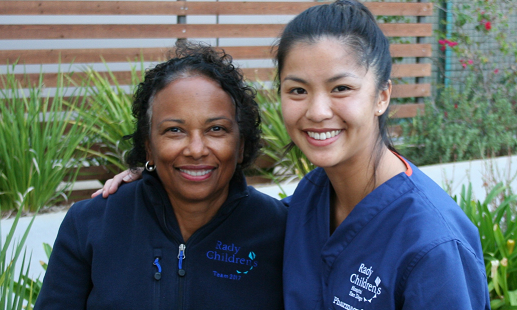
If you take a walk by our inpatient pharmacy on the weekend, it’s likely you’ll catch Kelly Chan, a 23-year-old Doctor of Pharmacy candidate at UC San Diego Skaggs School of Pharmacy and Pharmaceutical Sciences, hard at work as an intern. For Kelly, vying for this role was an easy decision — after all, Rady Children’s Hospital-San Diego was the first home she ever knew.
When she was pregnant, Kelly’s mother underwent a procedure that screens for fetal abnormalities through a small sample of amniotic fluid. The analysis revealed that something was seriously wrong with Kelly’s development. Further studies revealed that Kelly would be born with a right-sided diaphragmatic hernia. This rare birth defect results in a large hole in the diaphragm, the muscle that separates the abdomen and chest, and supports breathing function. Through the hole, Kelly’s liver and bowel had moved into her chest, preventing her right lung from developing. Kelly’s mom would need to deliver by cesarean section, and Kelly would require a critical intervention right after birth. Read More...
NICU, Staff Stories
education, interns, neonatalogy, NICU, pharmacy, staff stories, UC San Diego
December 12, 2018
Food for Thought: Understanding and Managing Food Allergies in Kids
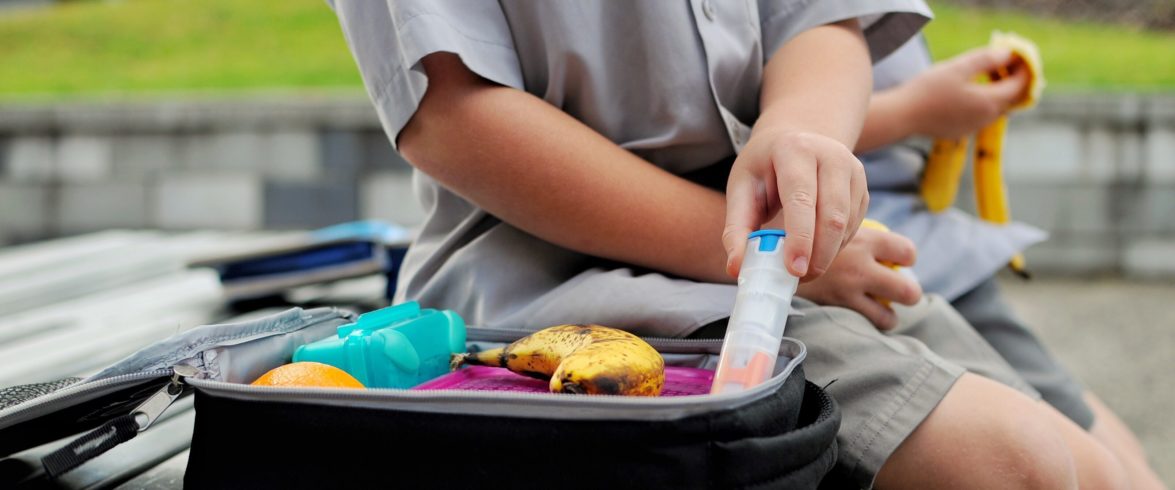
Food allergies are becoming increasingly common, particularly in children. We sat down with Stephanie Leonard, M.D., director of the Rady Children’s Hospital-San Diego Food Allergy Center and an associate clinical professor for the Division of Allergy-Immunology-Rheumatology within University of California San Diego School of Medicine’s Department of Pediatrics, to discuss prevalence, what’s new in research and how we can all work together to better protect kids managing allergies.
Food Allergies 101 Read More...
Allergy/Immunology, Research and Innovation
allergy immunotherapy, childhood food allergies, food allergies, food allergy prevalence, food allergy research, food allergy symptoms, food allergy treatment
December 4, 2018
Simple Tips for Raising a Compassionate Kid
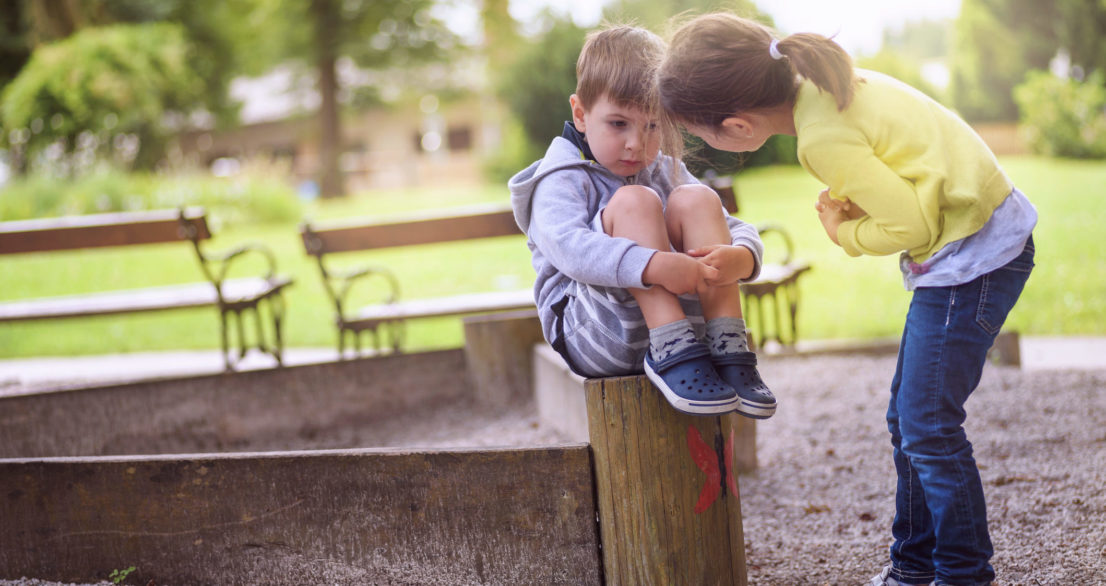
As parents, you strive to instill good values in your kids — mind your manners, be a good sport, sharing is caring. Among the most prized of these warm and fuzzy human traits is having compassion for others, but it can be tough to gauge when children are ready to grasp and grow this emotionally complex concept. We asked three experts from Rady Children’s Developmental Services team — Maggie Kershaw, M.S., M.S.W., a behavior specialist at Children’s Care Connection (C3); Brian Fritz, B.C.B.A., a behavior specialist at the Autism Discovery Institute; and Lorri Bauer, M.S., a behavior specialist at C3 and KidSTART Center — to provide some guidance on kicking off the conversation and continuing to nurture compassionate kids through all stages of childhood.
An Early Start Read More...
Behavioral Health, Child Development
behavioral health, child development, childhood behavior, childhood social skills, compassion, kindness, peer pressure
November 30, 2018
What’s New in Flu? A Q&A with Dr. John Bradley
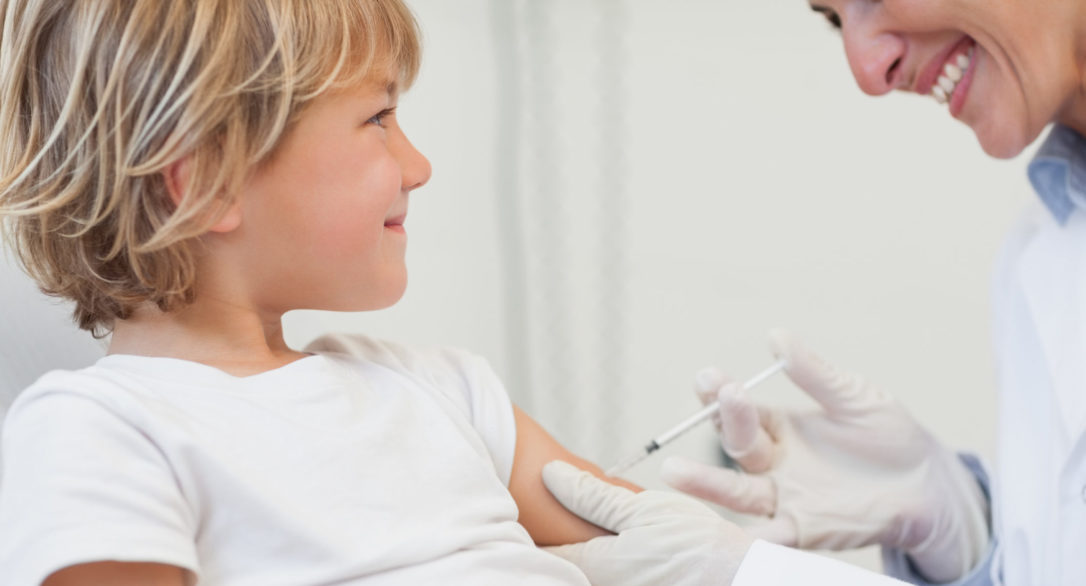
Ah, winter — a time for holiday cheer, sweater weather (well — for San Diego, at least sometimes) and … the flu. Most of us have experienced this nasty virus at least once, and last season’s strain made headlines for infecting even those who were vaccinated, and for its effects on children. To help parents prep for this year and guard their kiddos as much as possible, we connected with John Bradley, M.D., director of the Division of Infectious Diseases at Rady Children’s Hospital-San Diego and a professor and chief for the Division of Infectious Diseases within the Department of Pediatrics at University of California San Diego School of Medicine.
Q: What do we know about this year’s flu? Read More...
Flu Information, Vaccines
flu, flu care, flu prevention, flu season, flu shot, flu shot for kids, flu vaccine, kids and flu
November 21, 2018
The Bedtime Cart: Creating Sweeter Dreams for Rady Children’s Patients
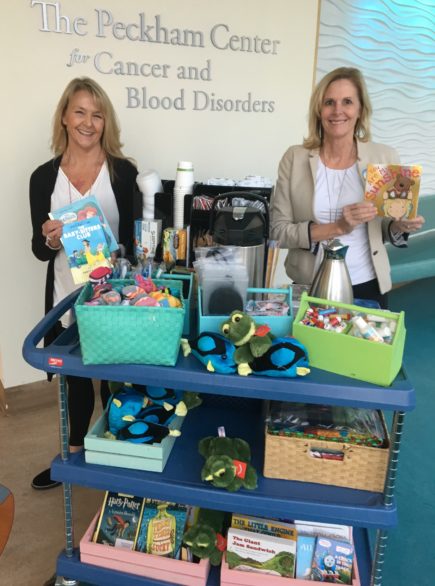
It’s a Wednesday night. The lights in the Peckham Center for Cancer and Blood Disorders at Rady Children’s Hospital-San Diego are low, and a lull has fallen over halls that were full of hustle and bustle just a few hours ago. But in the midst of the evening quiet, there’s still activity afoot. From patient rooms drift gently whispered tales of Harry Potter and Thomas the Tank Engine, and the soothing aroma of freshly brewed chamomile tea fills the air. That’s because on Wednesday nights, The Bedtime Cart — and its devoted volunteers — make the rounds to bring a little extra comfort to the center’s patients and their families.
The Bedtime Cart has been delivering sweeter dreams since 2015, when Margaret Fitzgerald, B.S.N., R.N., C.P.O.N. (pictured on the right), a 16-year Rady Children’s employee and hematology/oncology nurse-turned nurse manager-turned interim director of the Peckham Center, got it rolling. “I started because I really wanted patients and families to have what they needed to get a good night’s sleep,” she says. “You should have the same routine you have at home. So I thought, ‘well, I’ll start a cart that goes around with volunteers.’” Stocked with goods such as cozy socks, soft flannel pillowcases, herbal teas, books for kids of all ages and even miniature bottles of a custom-blended lavender aromatherapy lotion, the cart was an instant hit with patients and loved ones, so much so that Margaret has helped replicate it in two additional units. Read More...
Giving Back, Hematology/Oncology
giving, hematology/oncology, Peckham Center for Cancer and Blood Disorders, pediatric hematology/oncology, philanthropy, staff stories, volunteering
November 5, 2018
Beating Up Bullying

In recent years, bullying has become increasingly recognized as a widespread and common issue for young people. And it’s not just happening during those classically challenging middle school years. About 20 percent of high school students are bullied[1], while 90 percent of elementary school children say they’ve been bullied at least once by their peers[2]. While bullying can happen to any child, “often, kids are bullied because of differences in race or religion, or because of disabilities or special needs. Lesbian, gay, bisexual, transgender, queer or intersex youth are also at a higher risk for being targeted,” says Brent Crandal, Ph.D., child and family psychologist at The Chadwick Center for Children & Families at Rady Children’s Hospital-San Diego.
After the initial sting of bullying has worn off, its effects can be lasting and profound. “Bullying can be a source of intense strain, worry, sadness and isolation,” Crandal explains. “Sometimes, bullying carries on for weeks, months and even years, and can often be traumatizing.” For example, bullying has been linked to serious mental health implications ranging from agoraphobia, anxiety and panic disorders, depression, and antisocial personality disorder to suicidal ideation, plans and attempts[3]. Read More...
Behavioral Health
anxiety, behavioral health, bullying, bullying prevention, Chadwick Center, depression, mental health, psychology, tips for parents
Categories
- #IAmTeamRady (5)
- Adolescent and Young Adult Medicine (17)
- Aerodigestive (4)
- airway disorders (2)
- Allergy/Immunology (5)
- Audiology (1)
- Autism (1)
- Awards and Recognitions (1)
- Behavioral Health (17)
- Cancer (5)
- Canine Therapy (2)
- Cardiology (10)
- Carreers (1)
- Center for Healthier Communities (3)
- Cerebral Palsy (1)
- Child Development (9)
- Child Life (8)
- Chronic Pain and Pain Management (3)
- COVID-19 (17)
- Dental Health (1)
- Dermatology (2)
- Developmental Services (1)
- Dickinson Image-Guided Intervention Center (1)
- Endocrinology/Diabetes (2)
- Environmental Services (1)
- Family Advisory Council (1)
- feeding disorders (1)
- Flu Information (4)
- Food Services (2)
- gastroenterology (1)
- Gene (2)
- Genetics (3)
- Genome (2)
- Genomics Institute (2)
- Giving Back (8)
- Hearing/Speech (2)
- Heart Institute (2)
- Heart Transplant (1)
- Helen Bernardy Center (1)
- Hematology/Oncology (9)
- hepatology (1)
- Hip DIsorders (1)
- Infant Health (6)
- Infectious Diseases (5)
- Innovation (2)
- Leadership Profiles (1)
- Liver (1)
- Maternal-Fetal Medicine (1)
- Narcolepsy (1)
- Nephrology (1)
- Neurology (4)
- New at Rady Children's (3)
- NICU (5)
- Nursing (5)
- Nutrition (8)
- Ophthalmology (4)
- Orthopedics (5)
- Otolaryngology (3)
- Parenting tips (3)
- Patient Stories (17)
- Plastic Surgery (1)
- Pulmonary (1)
- Research and Innovation (13)
- Rheumatology (2)
- Safety (17)
- Sleep (4)
- Spine Center (2)
- Sports Medicine (3)
- Staff Stories (28)
- The Chadwick Center for Children & Families (2)
- Transplant (5)
- Uncategorized (12)
- Vaccines (6)
- Vascular Ring (2)
- Volunteer (1)